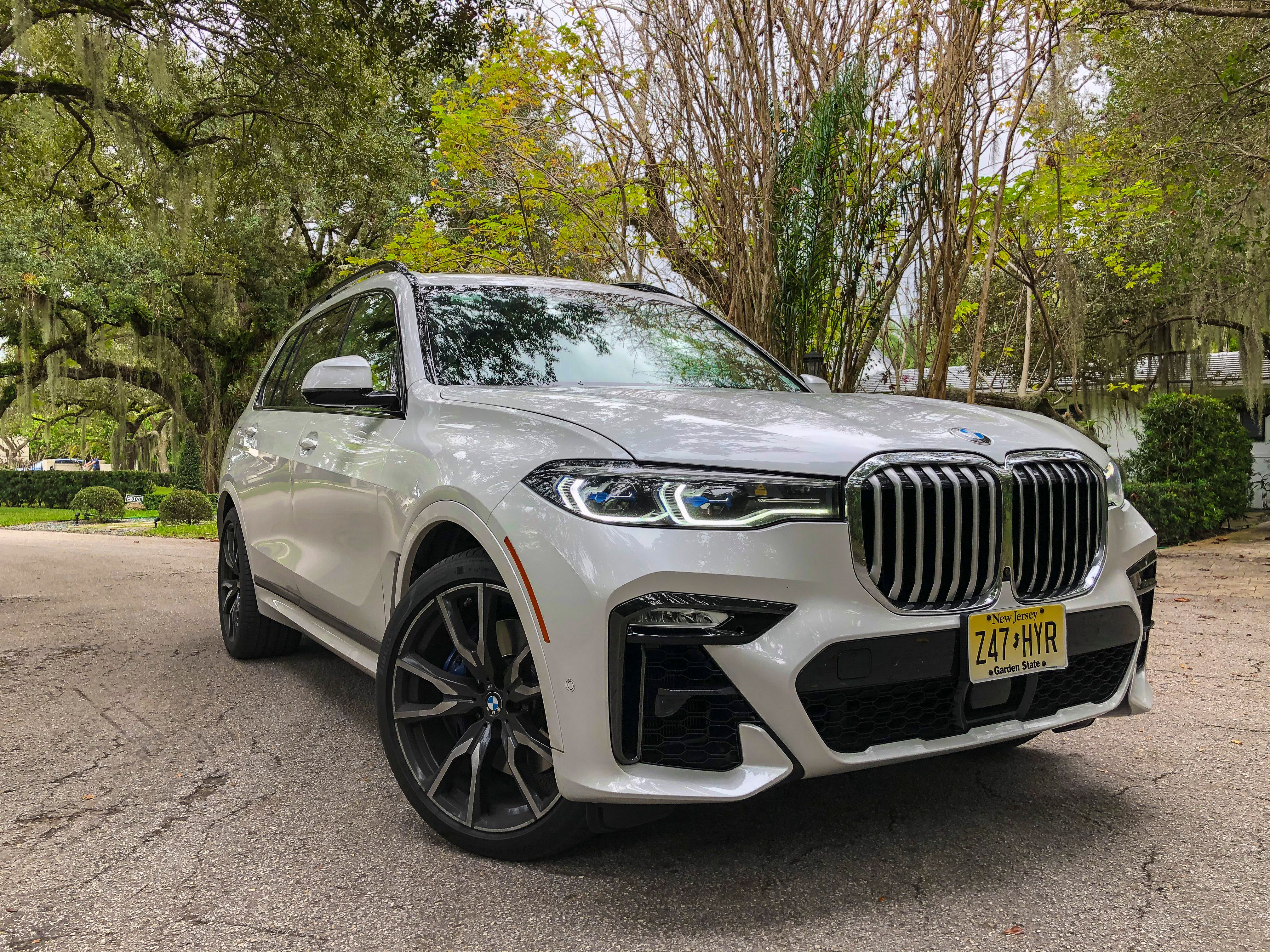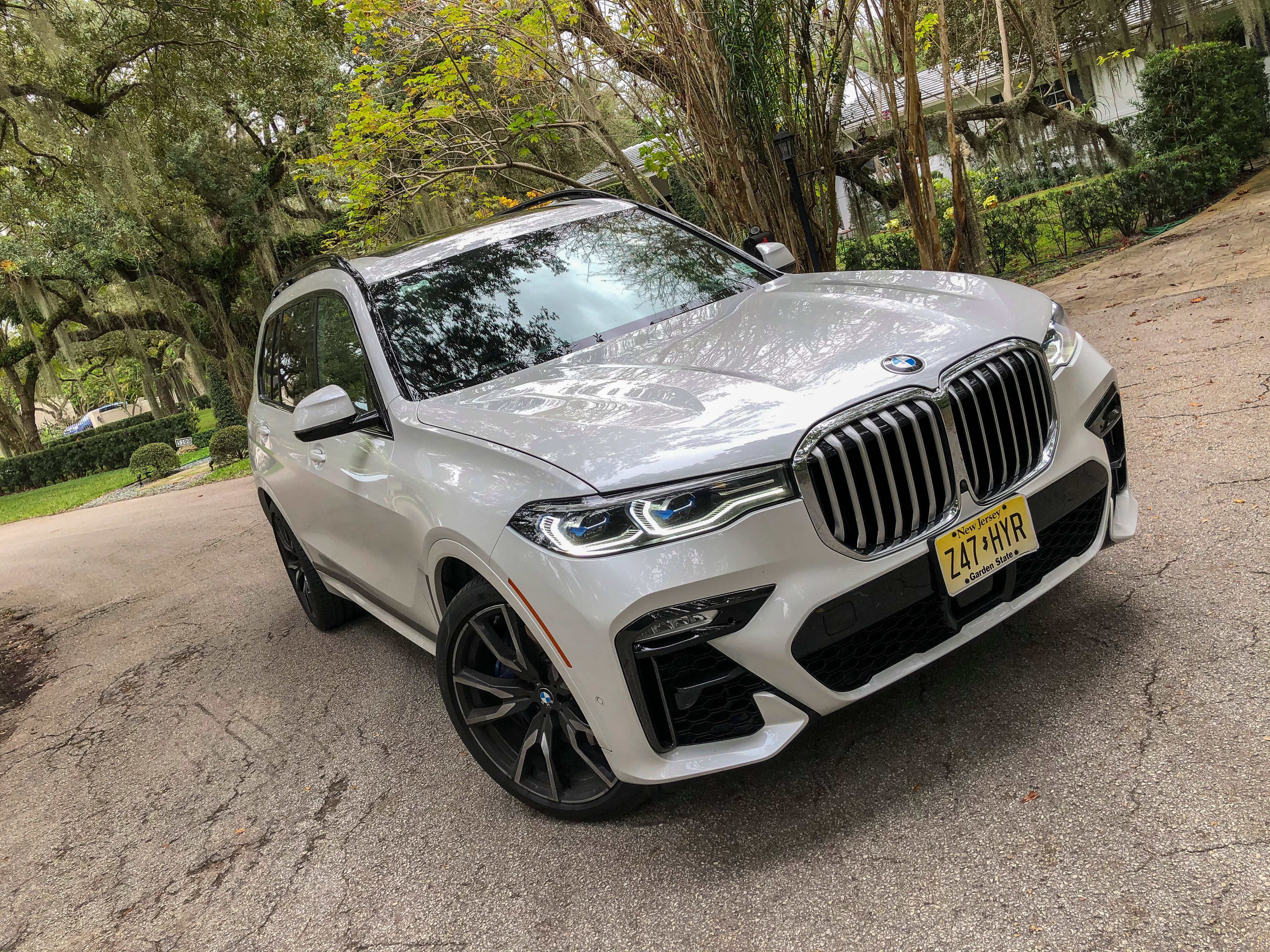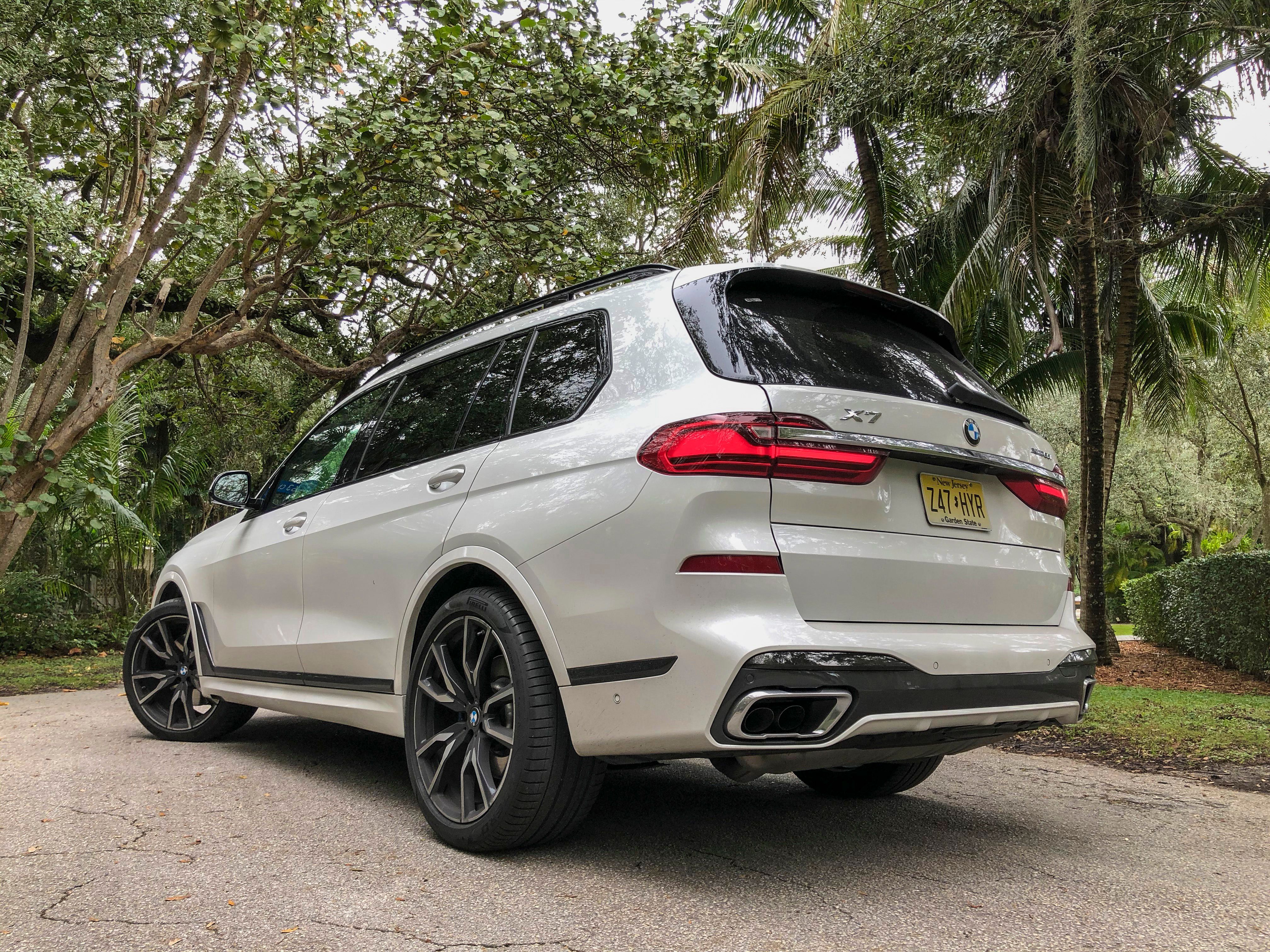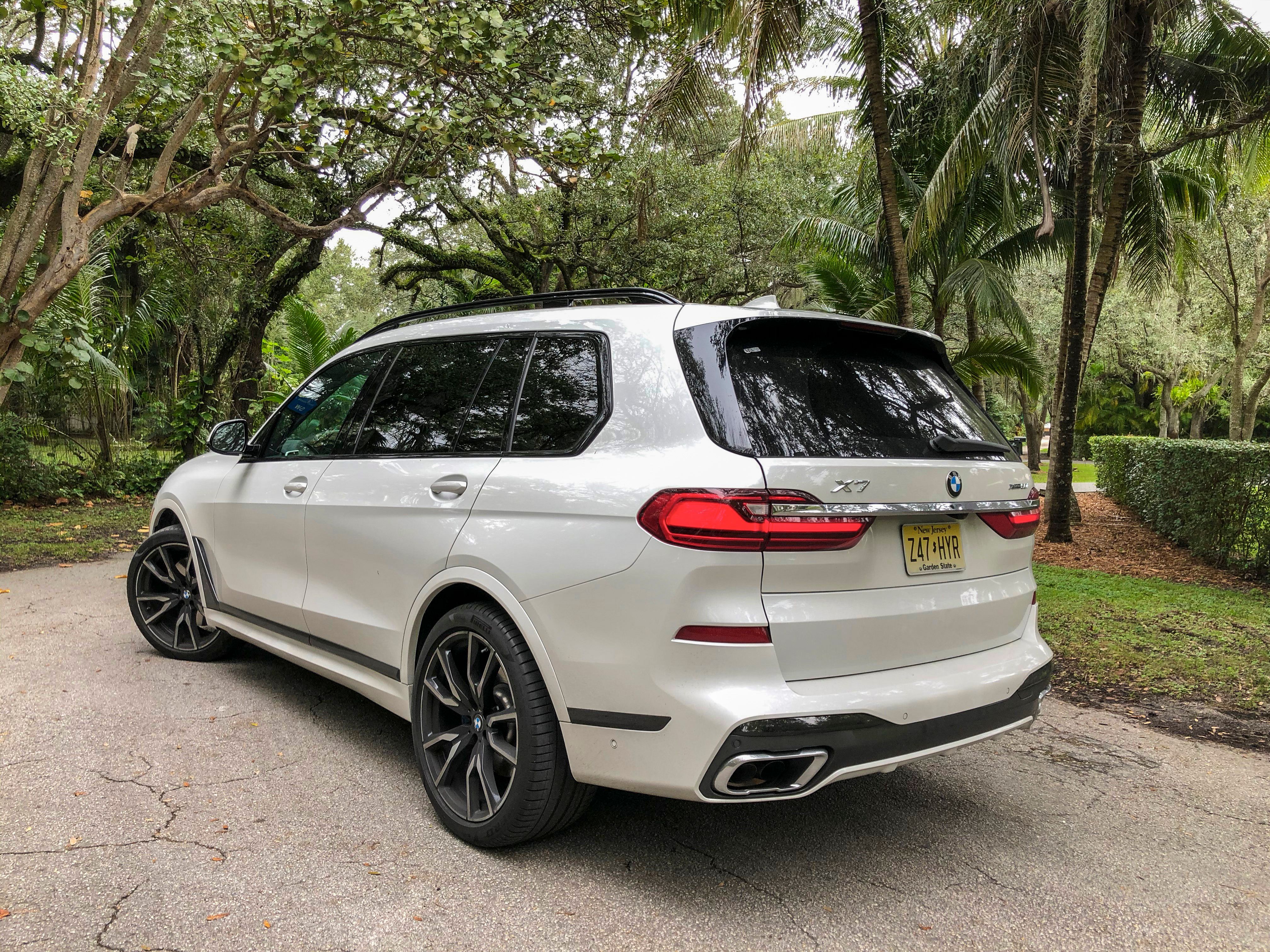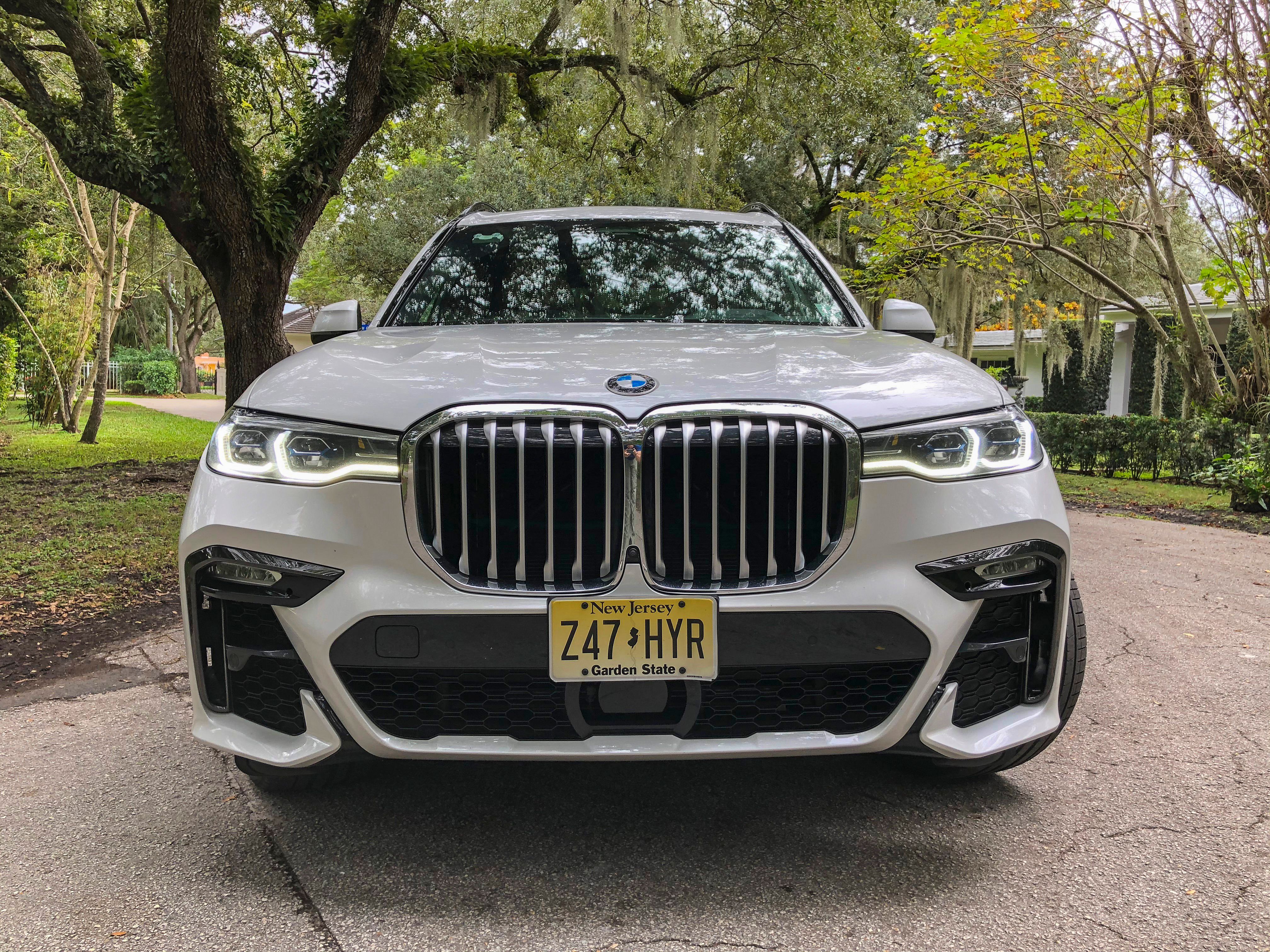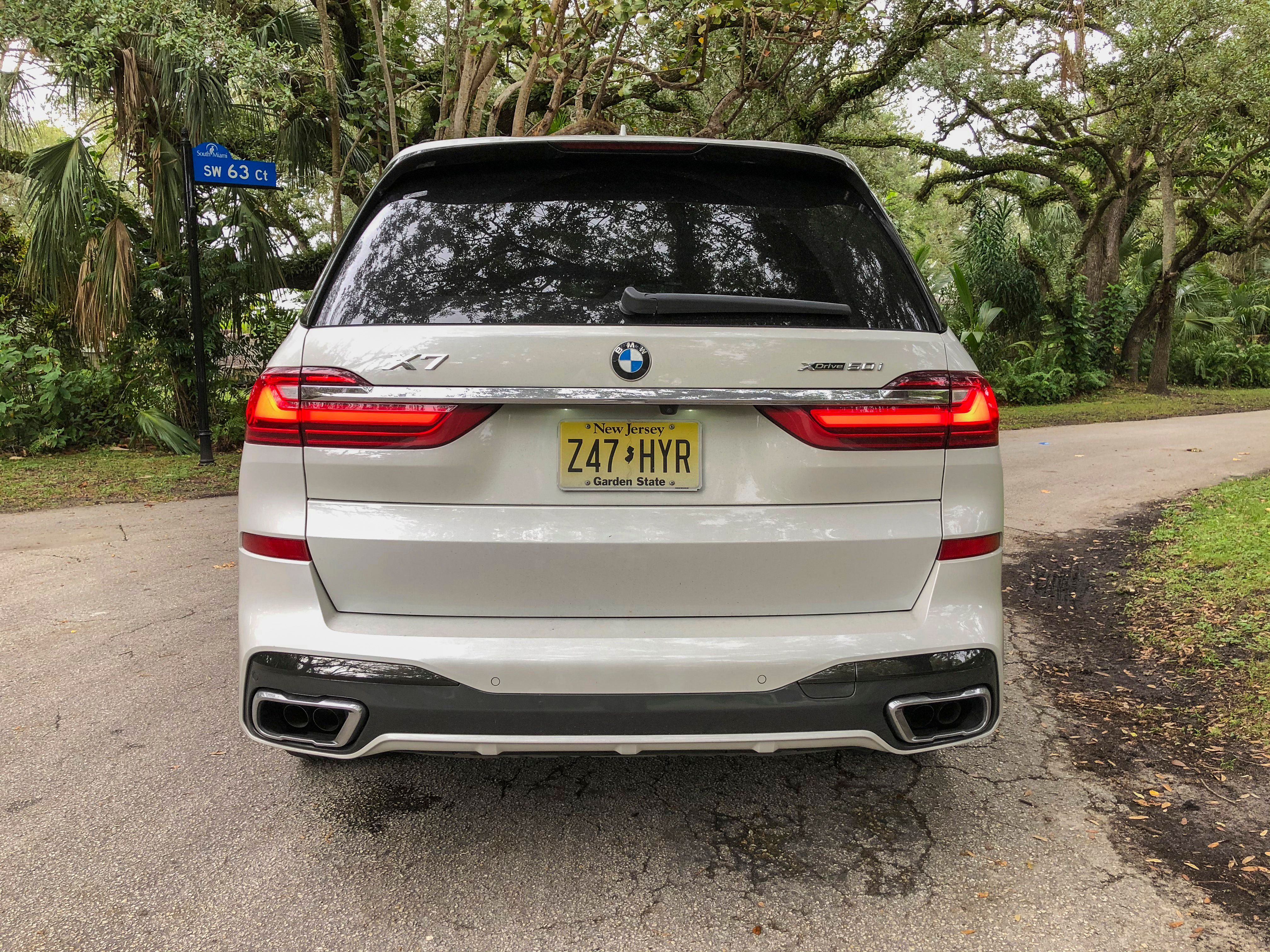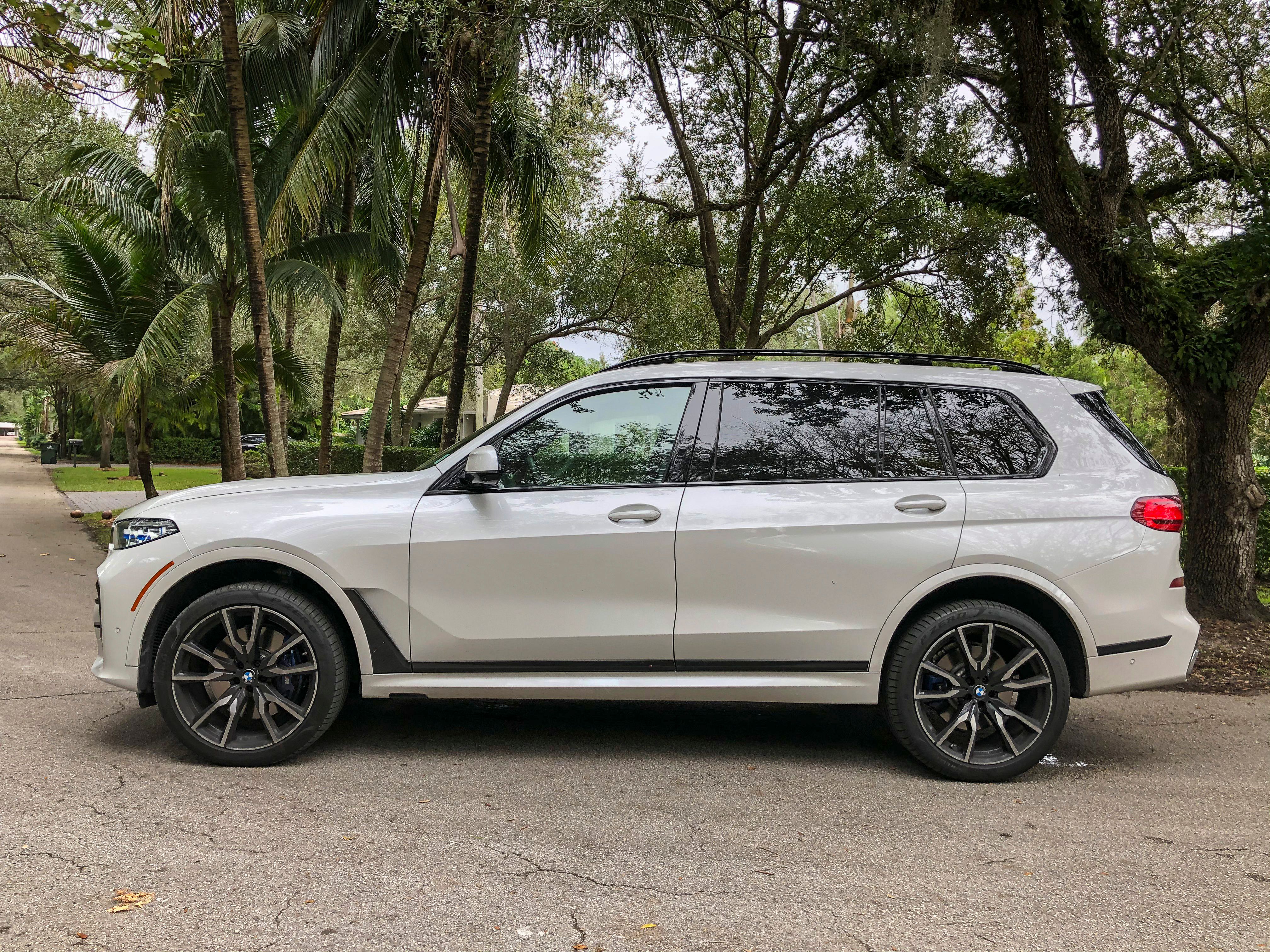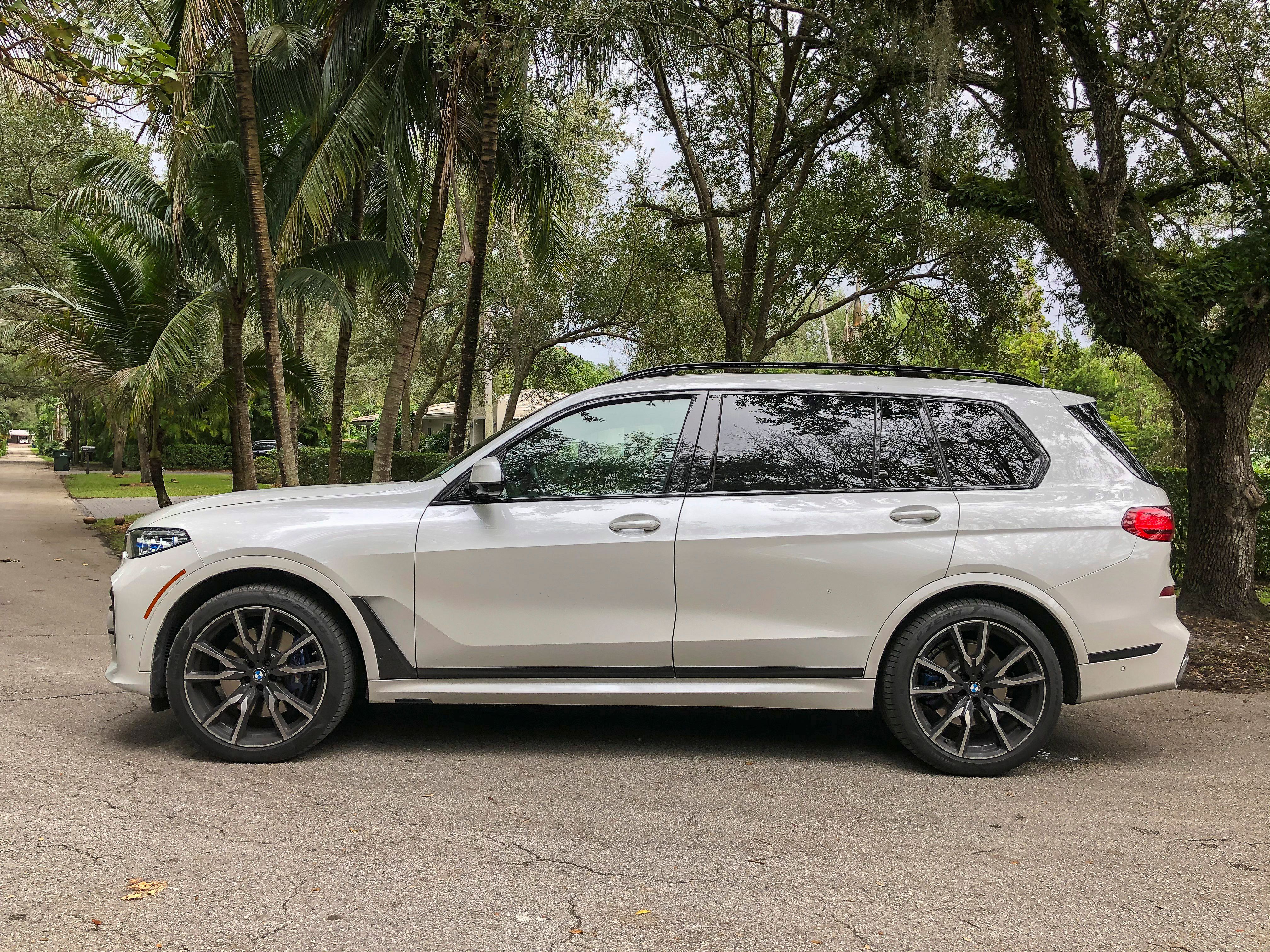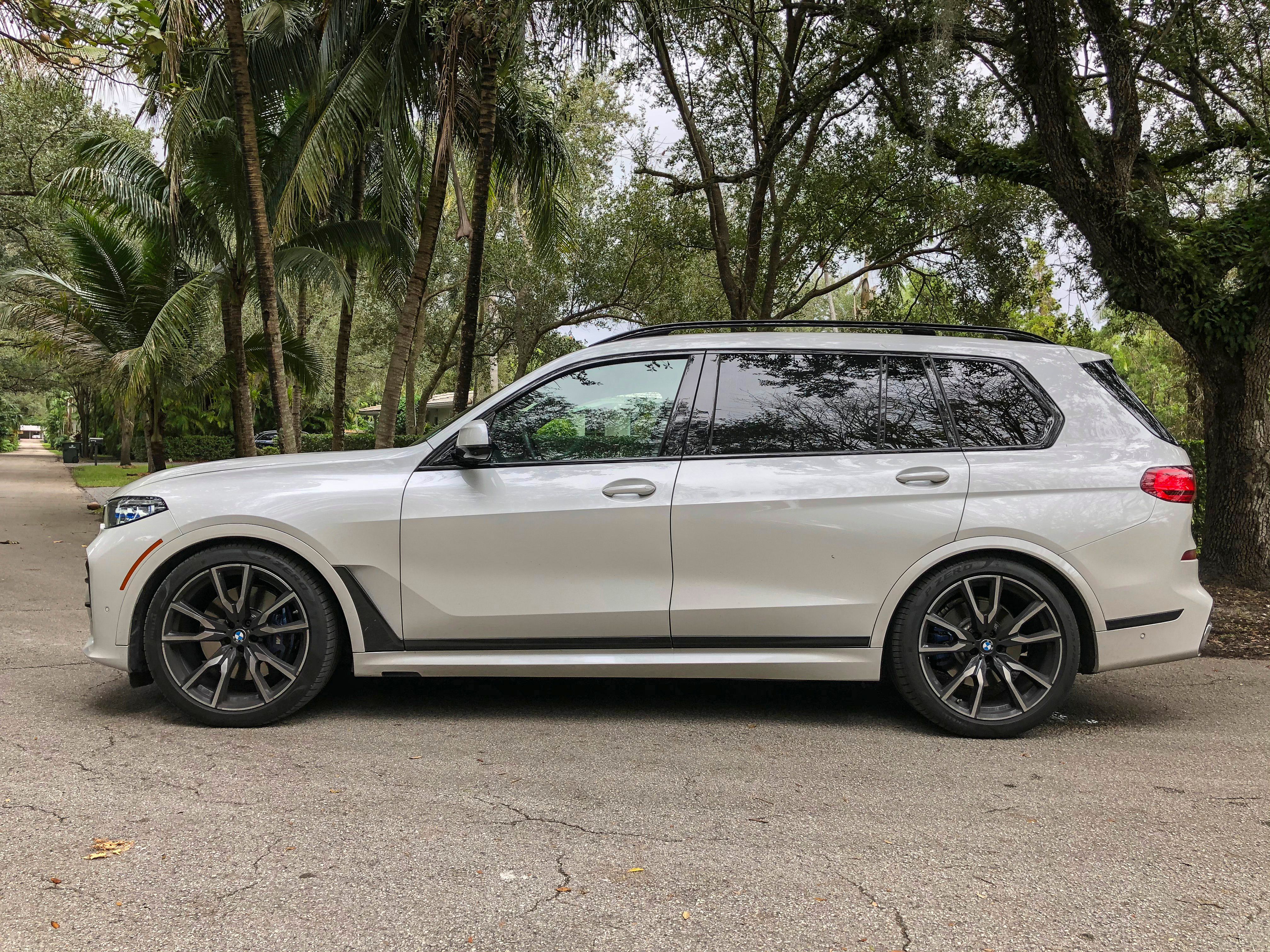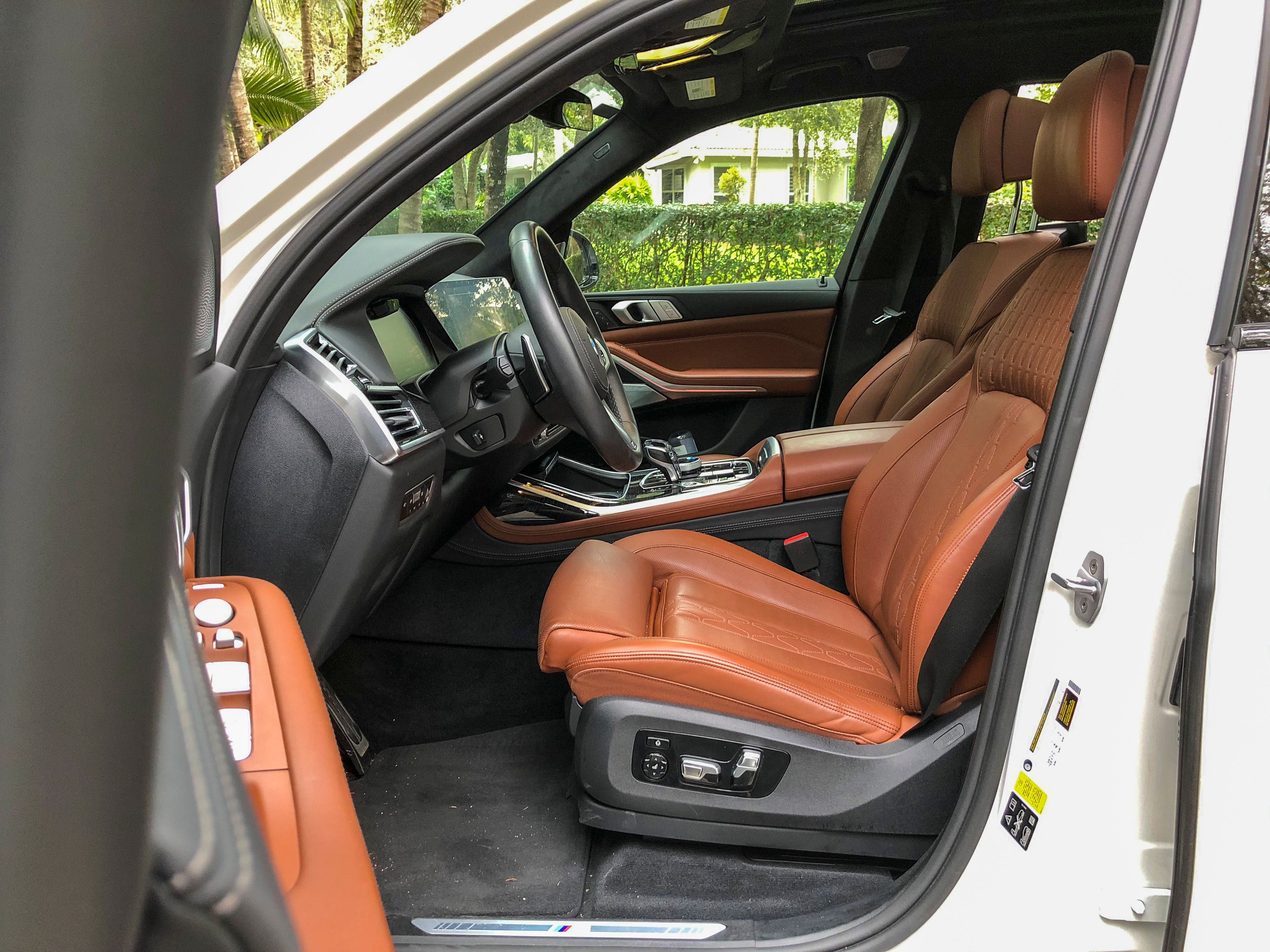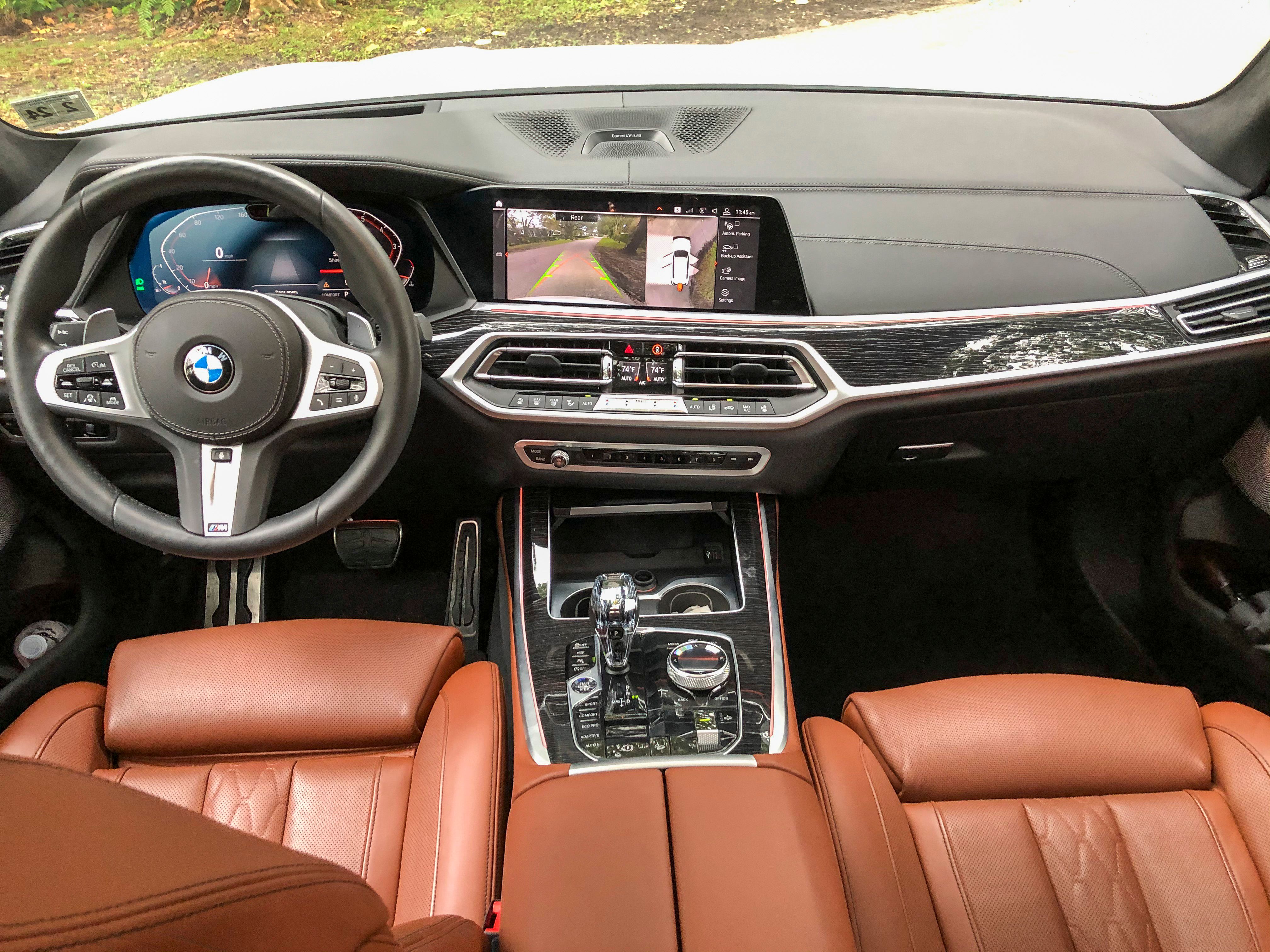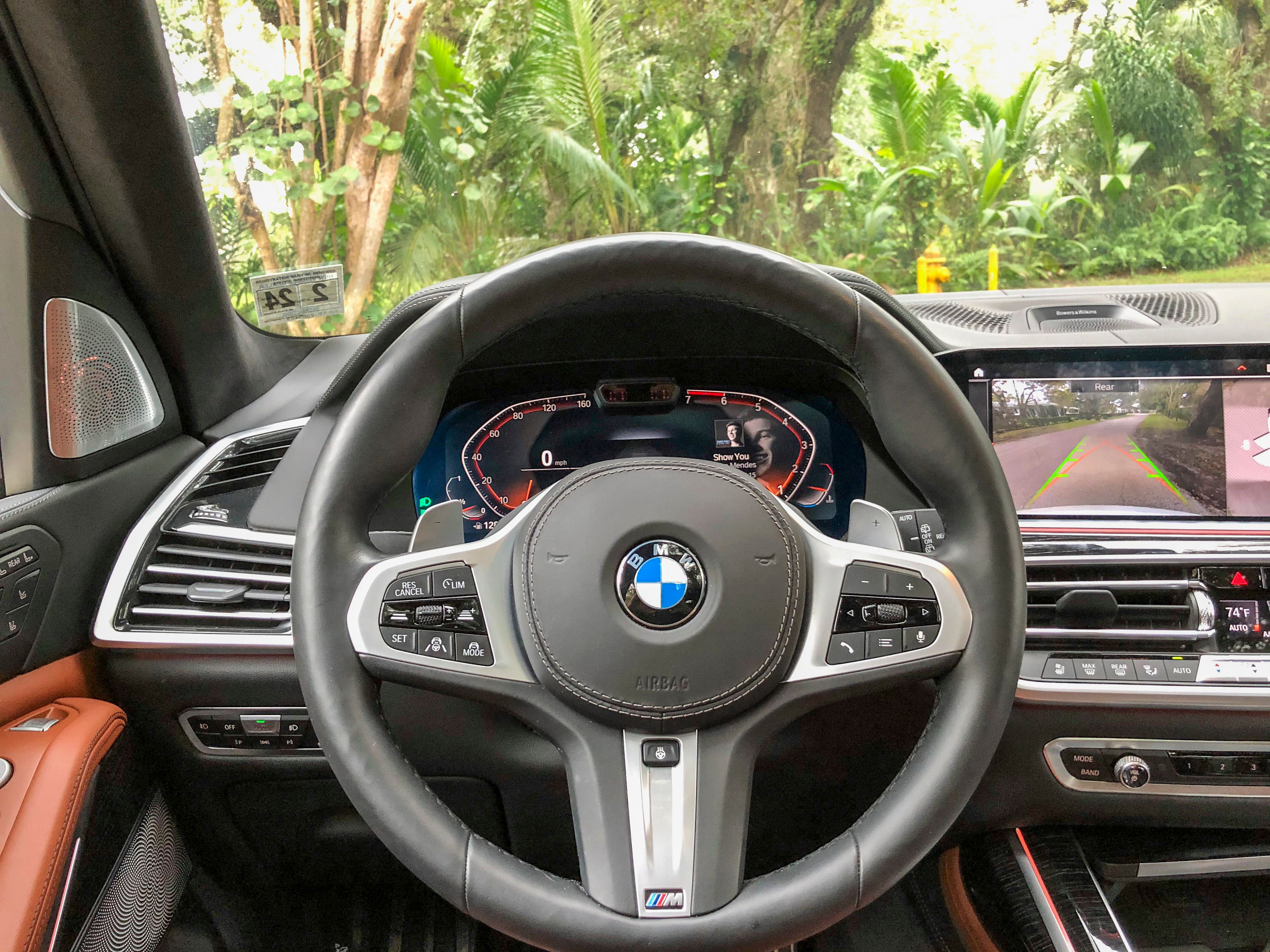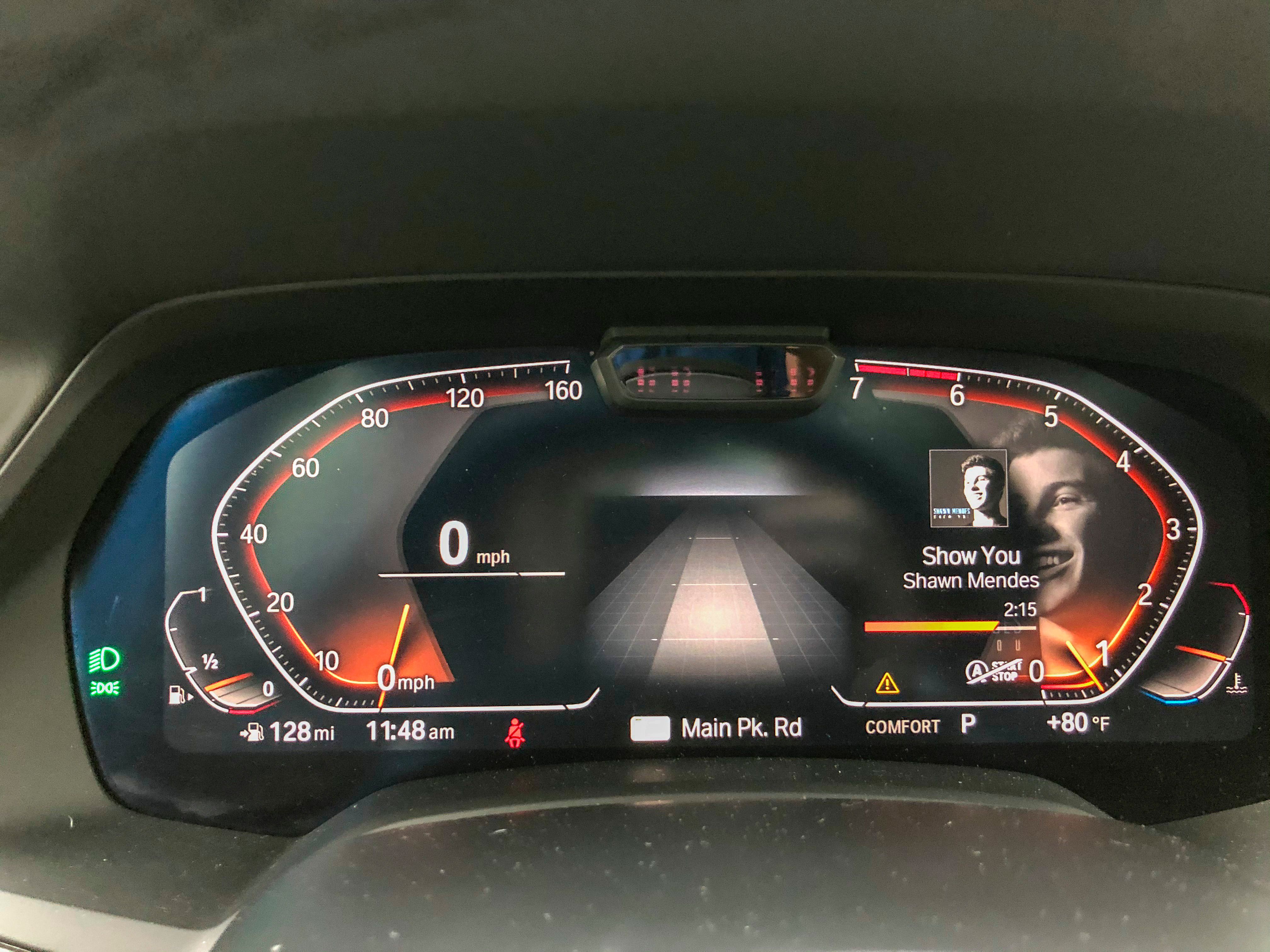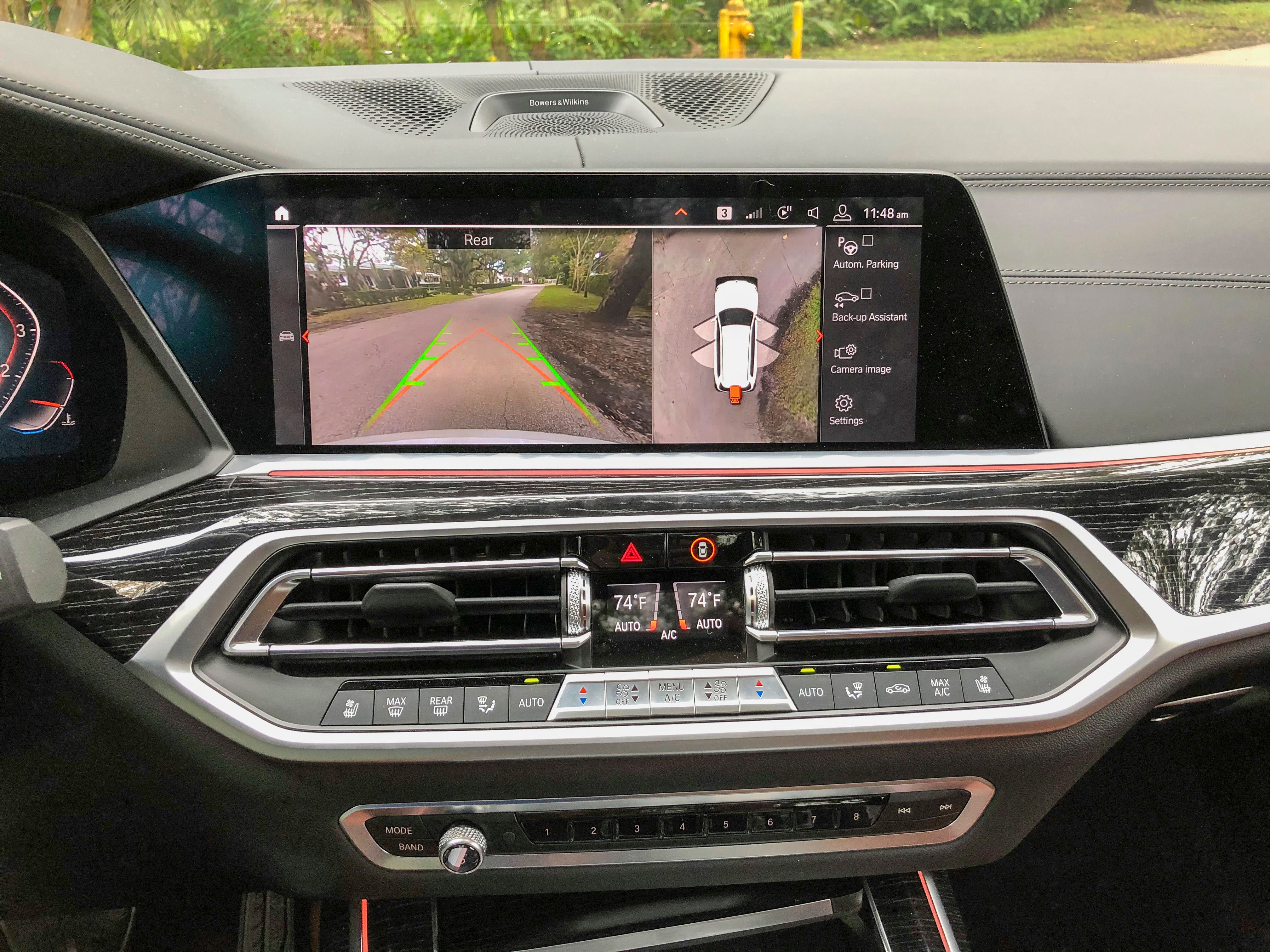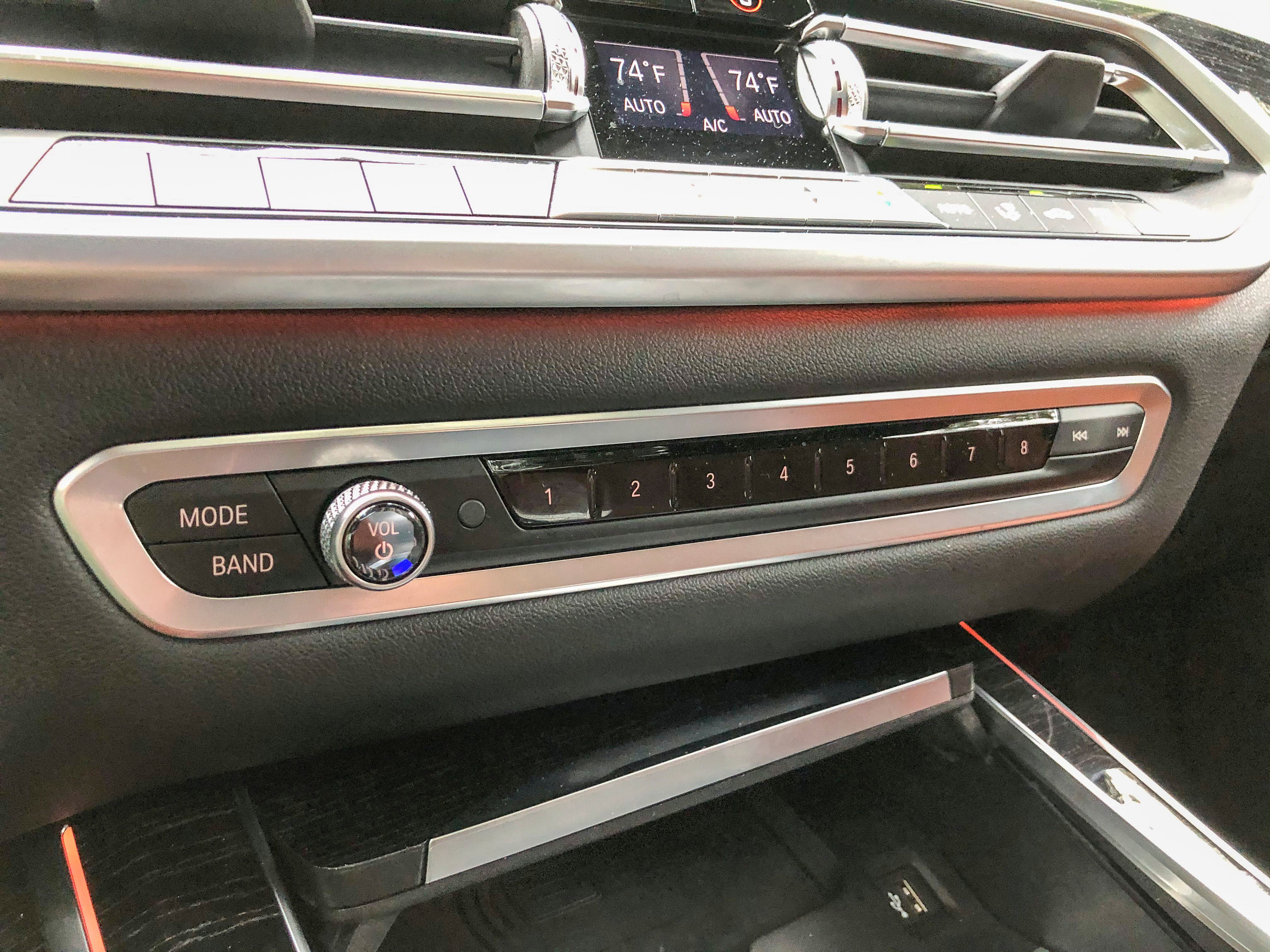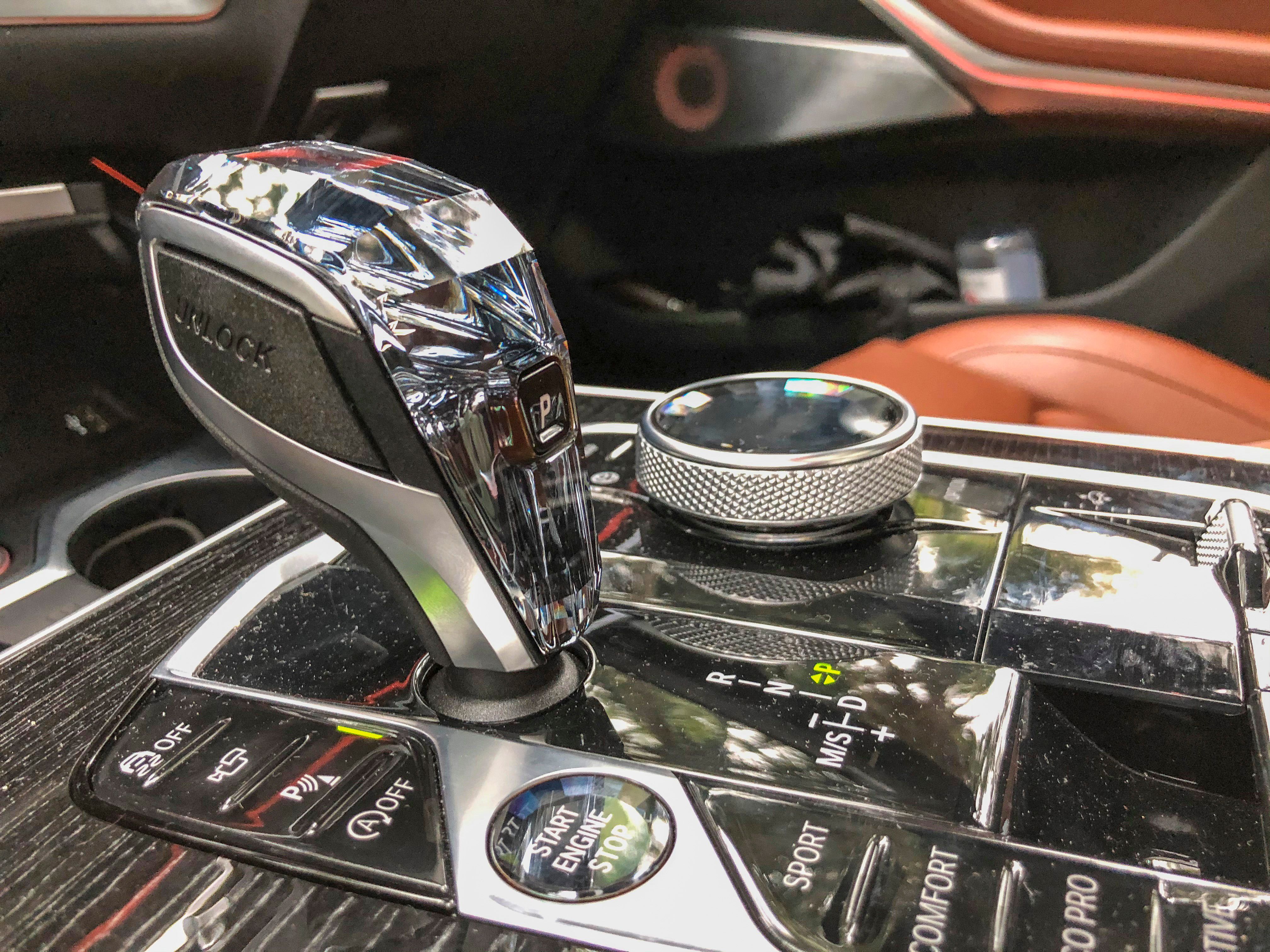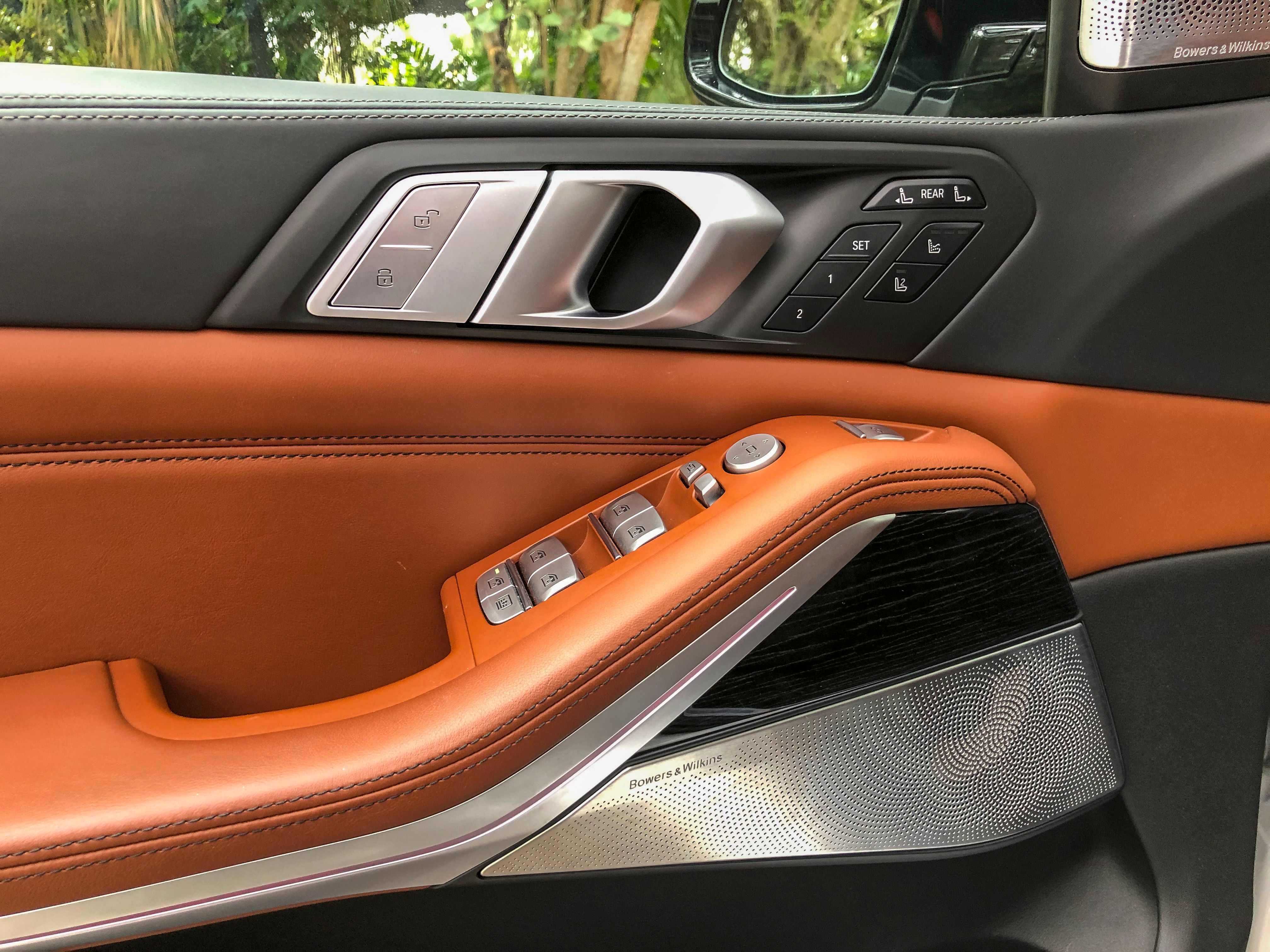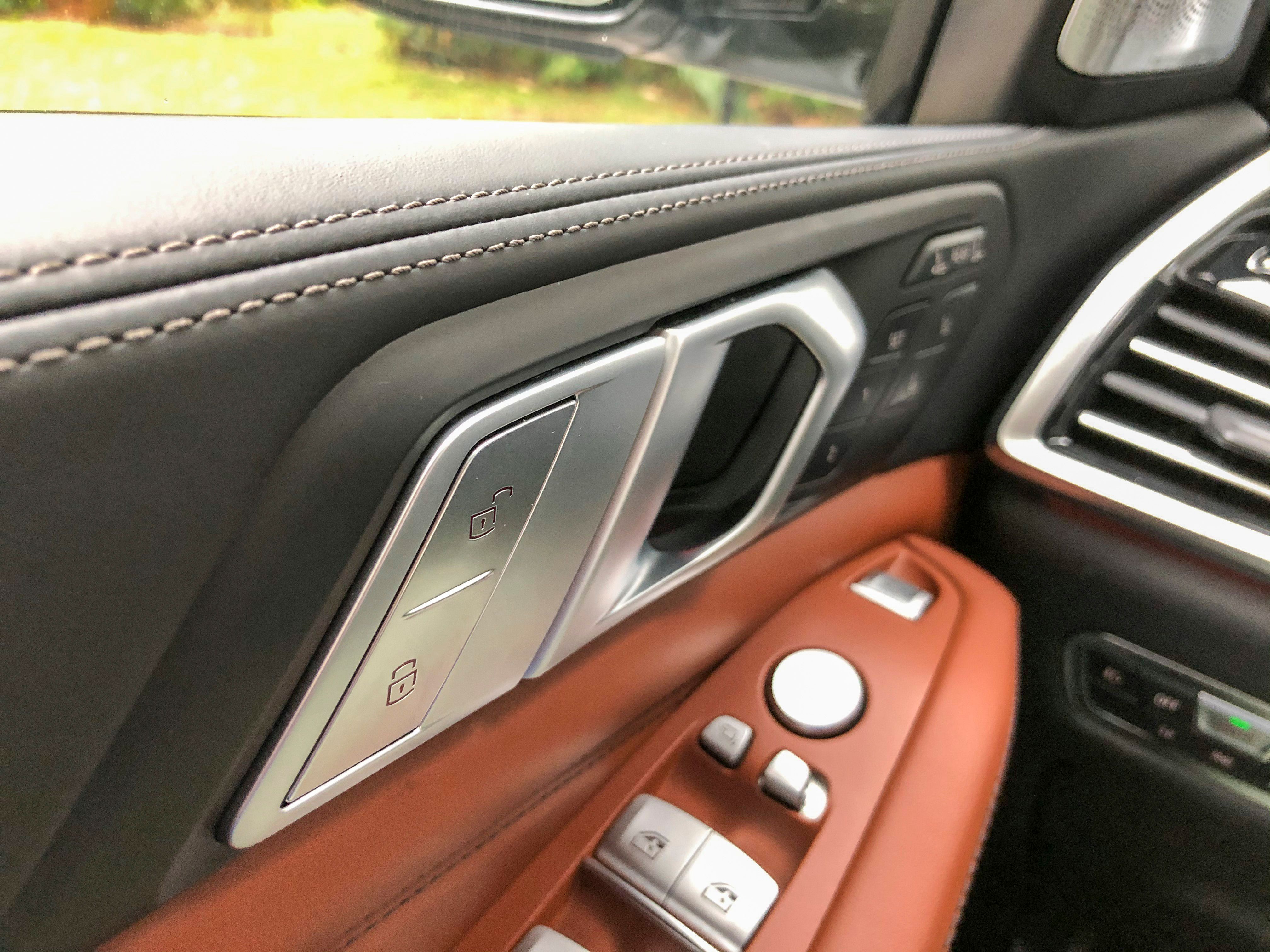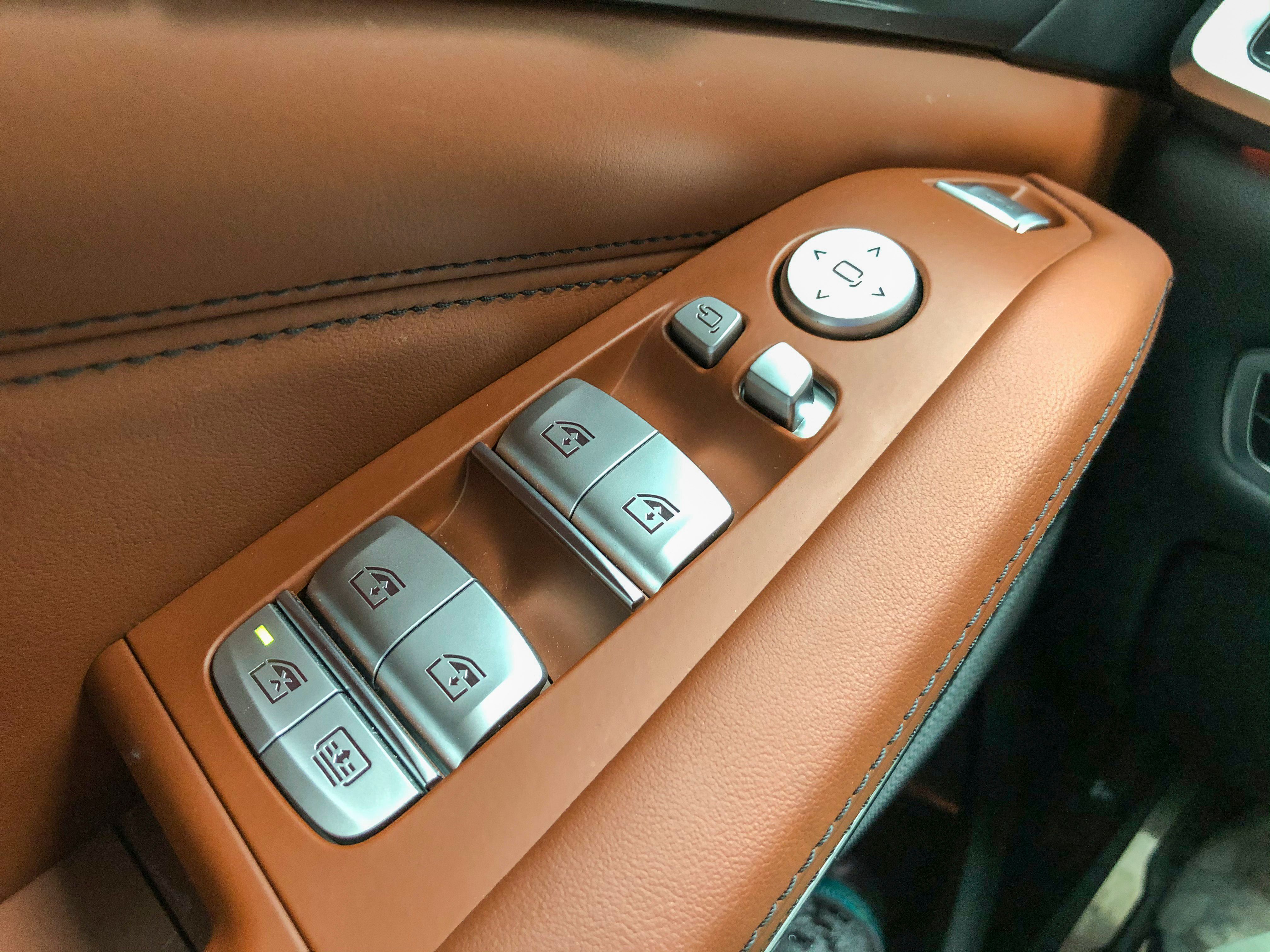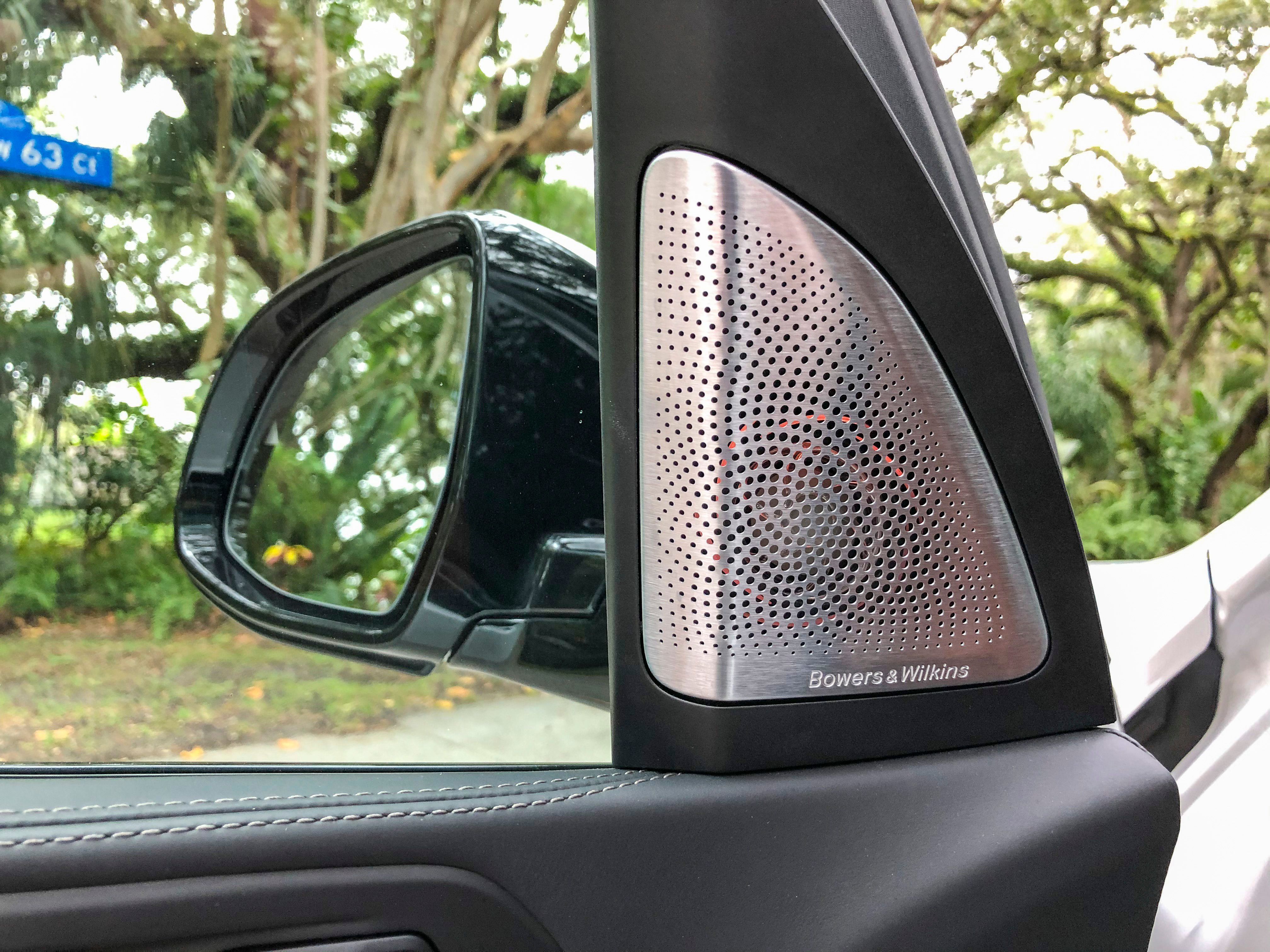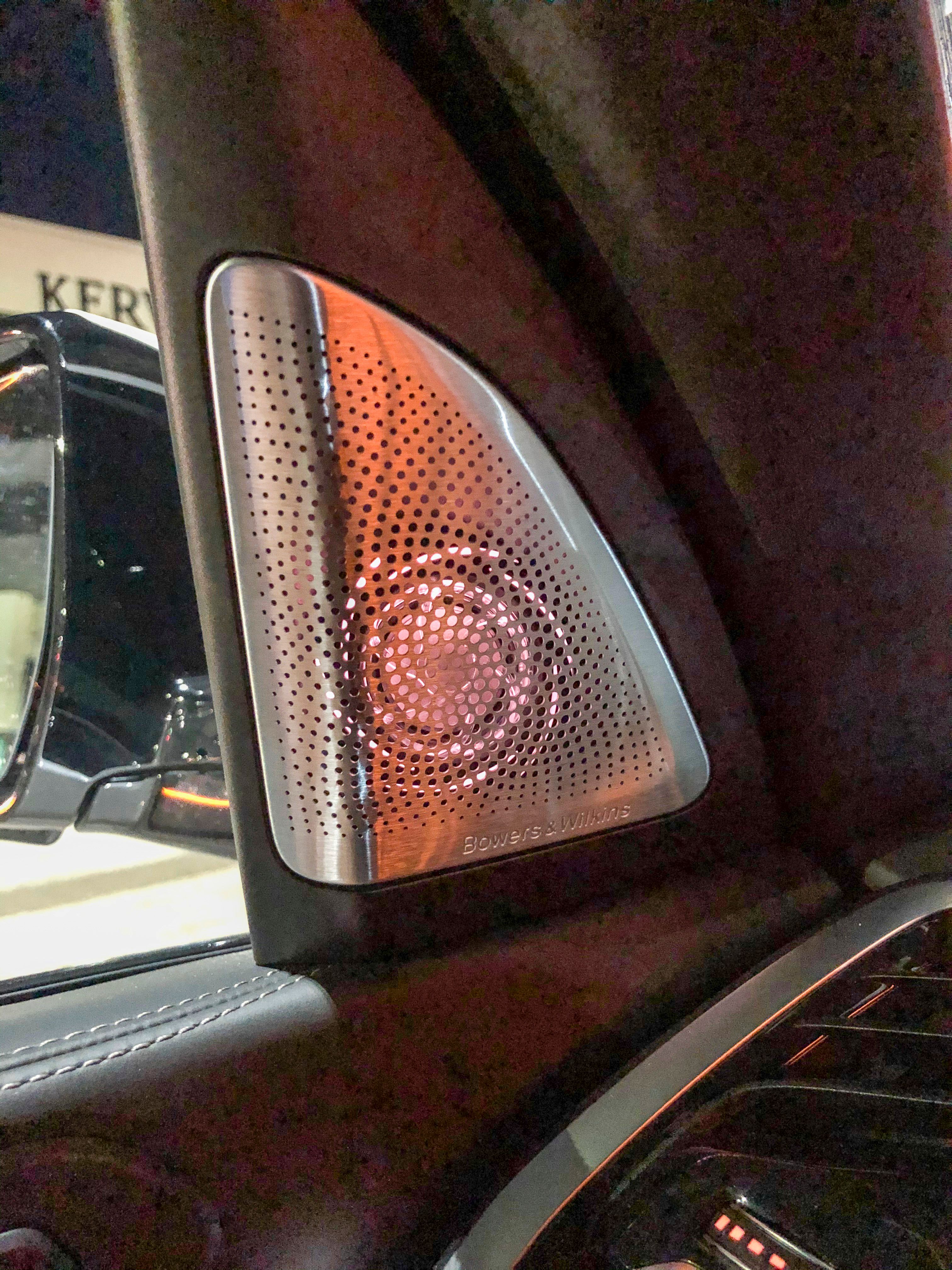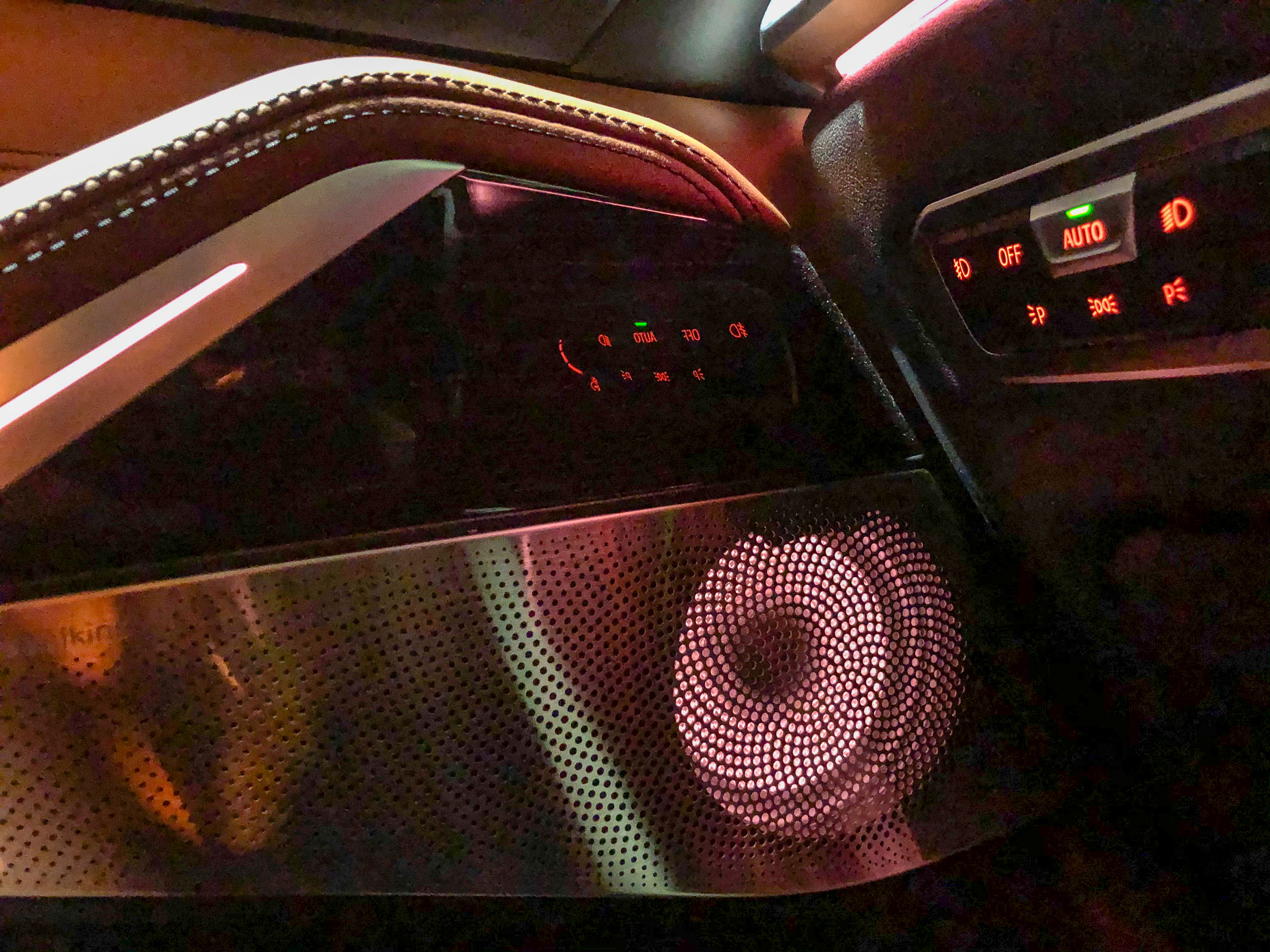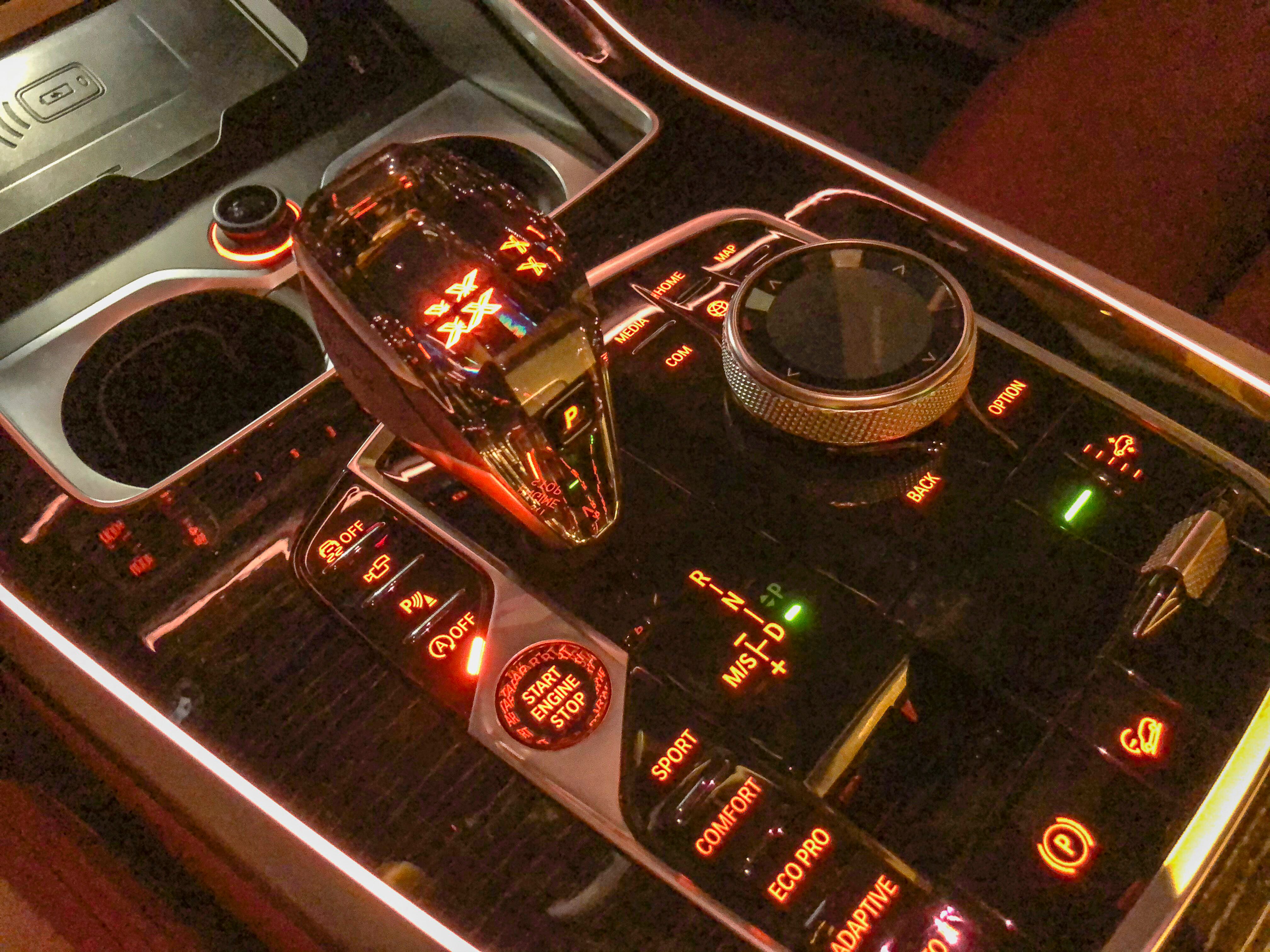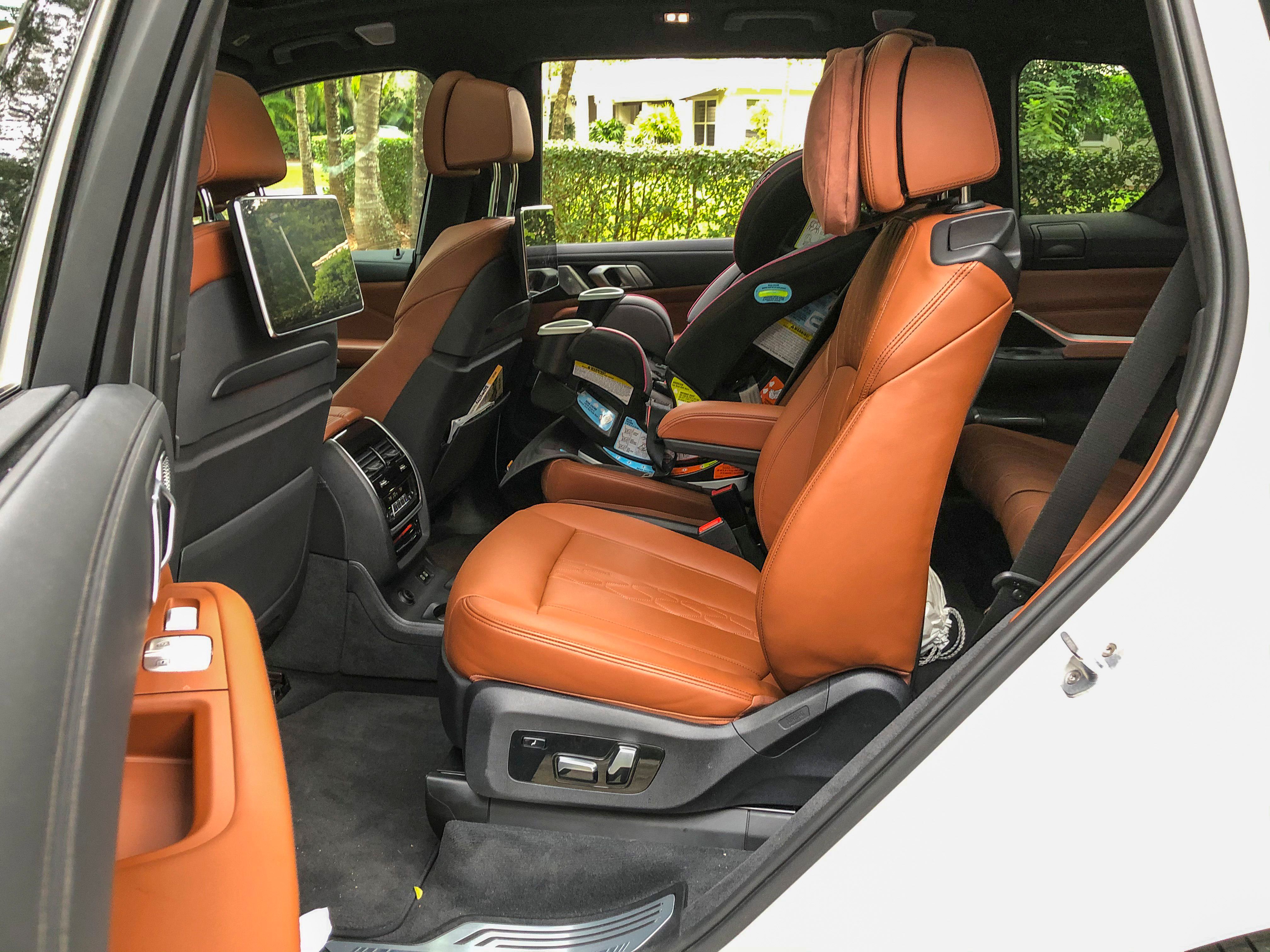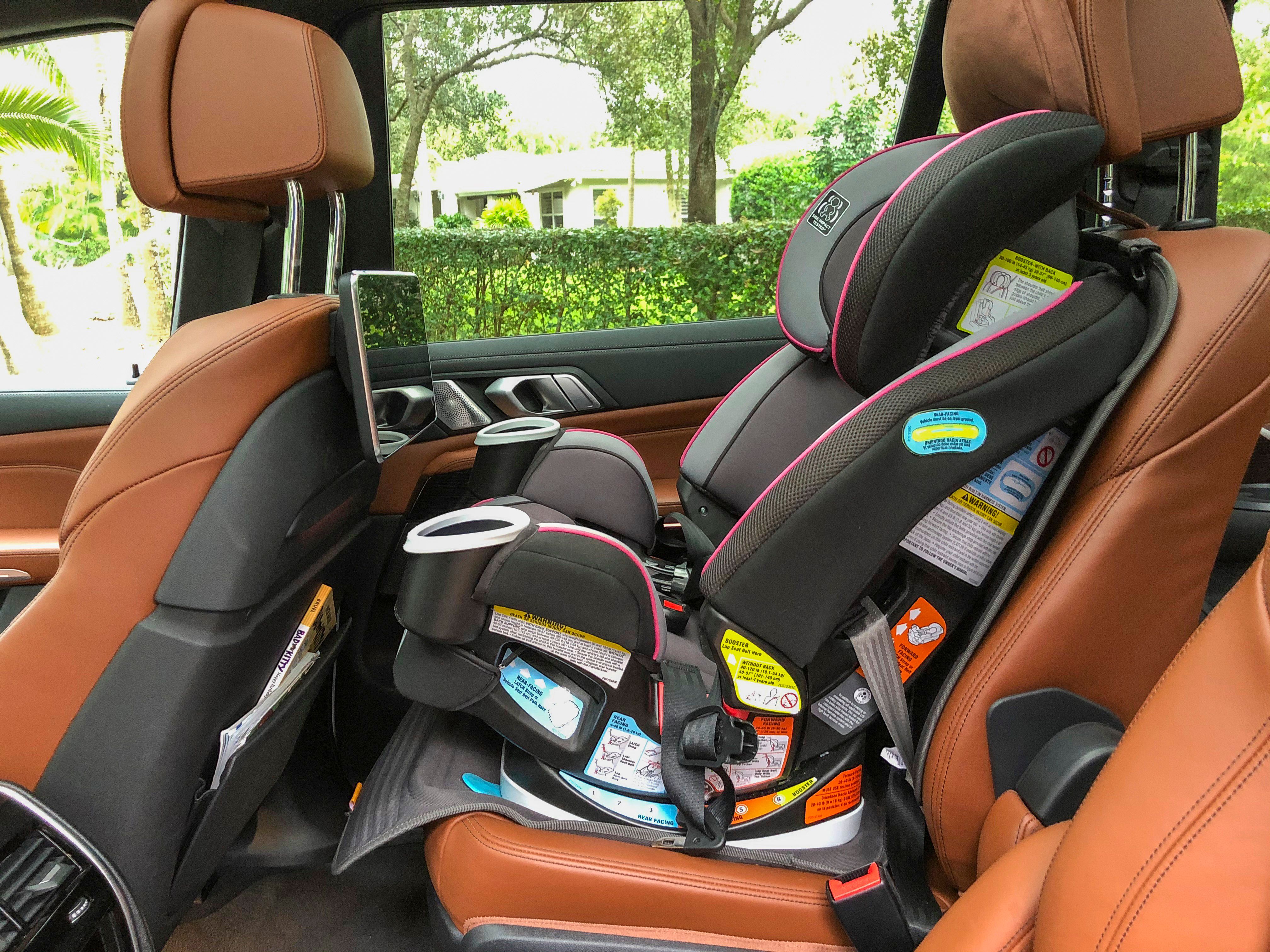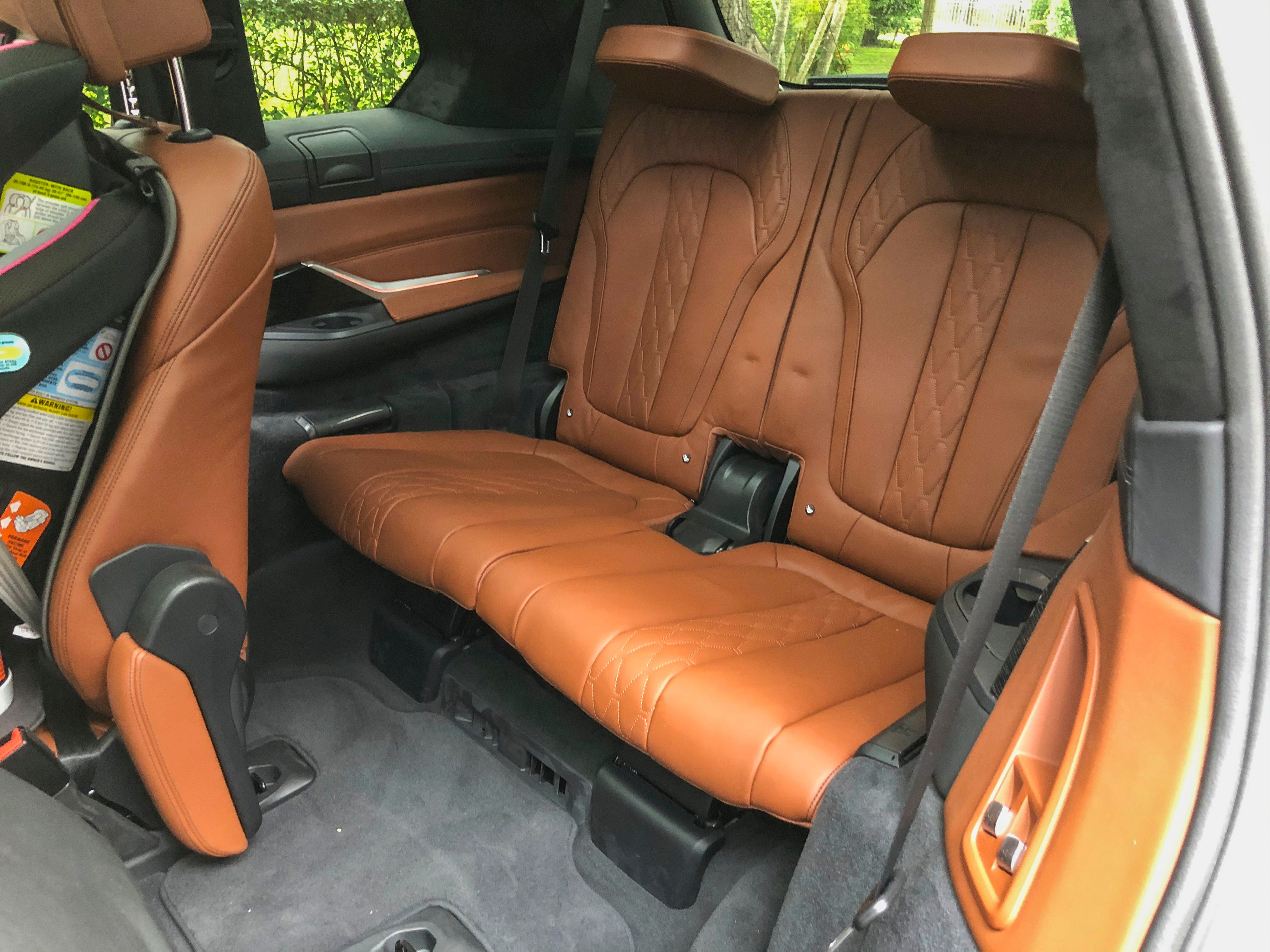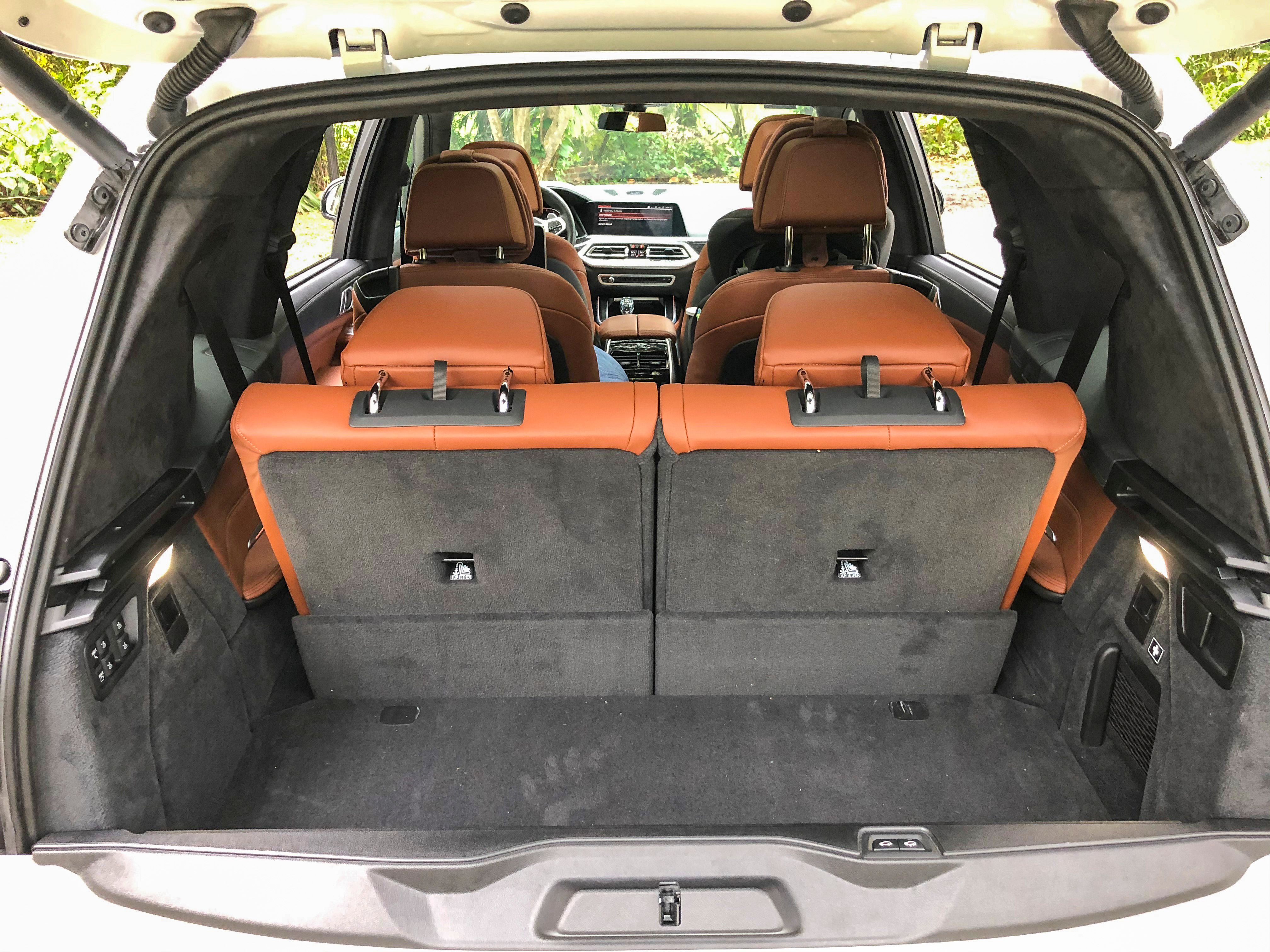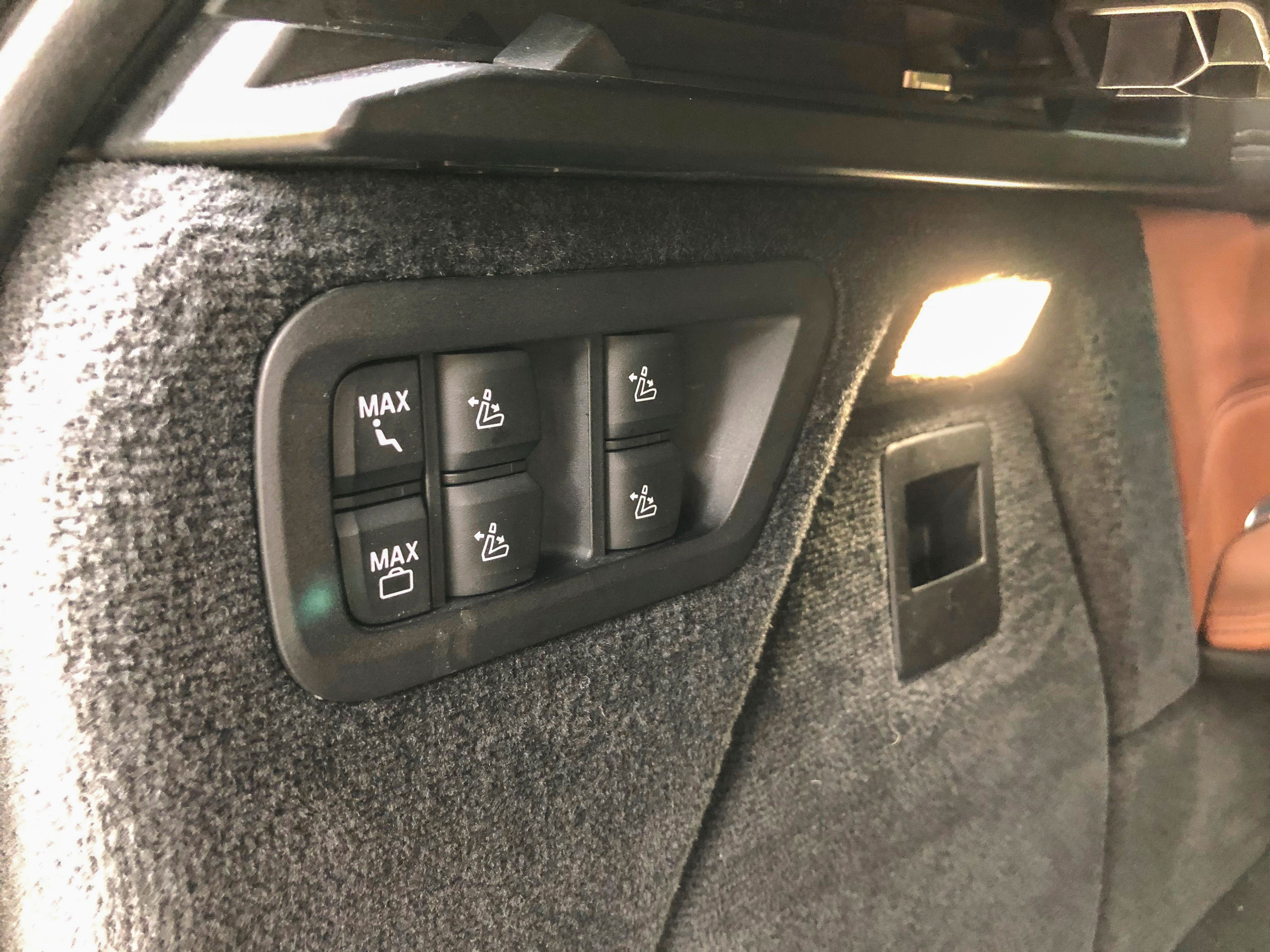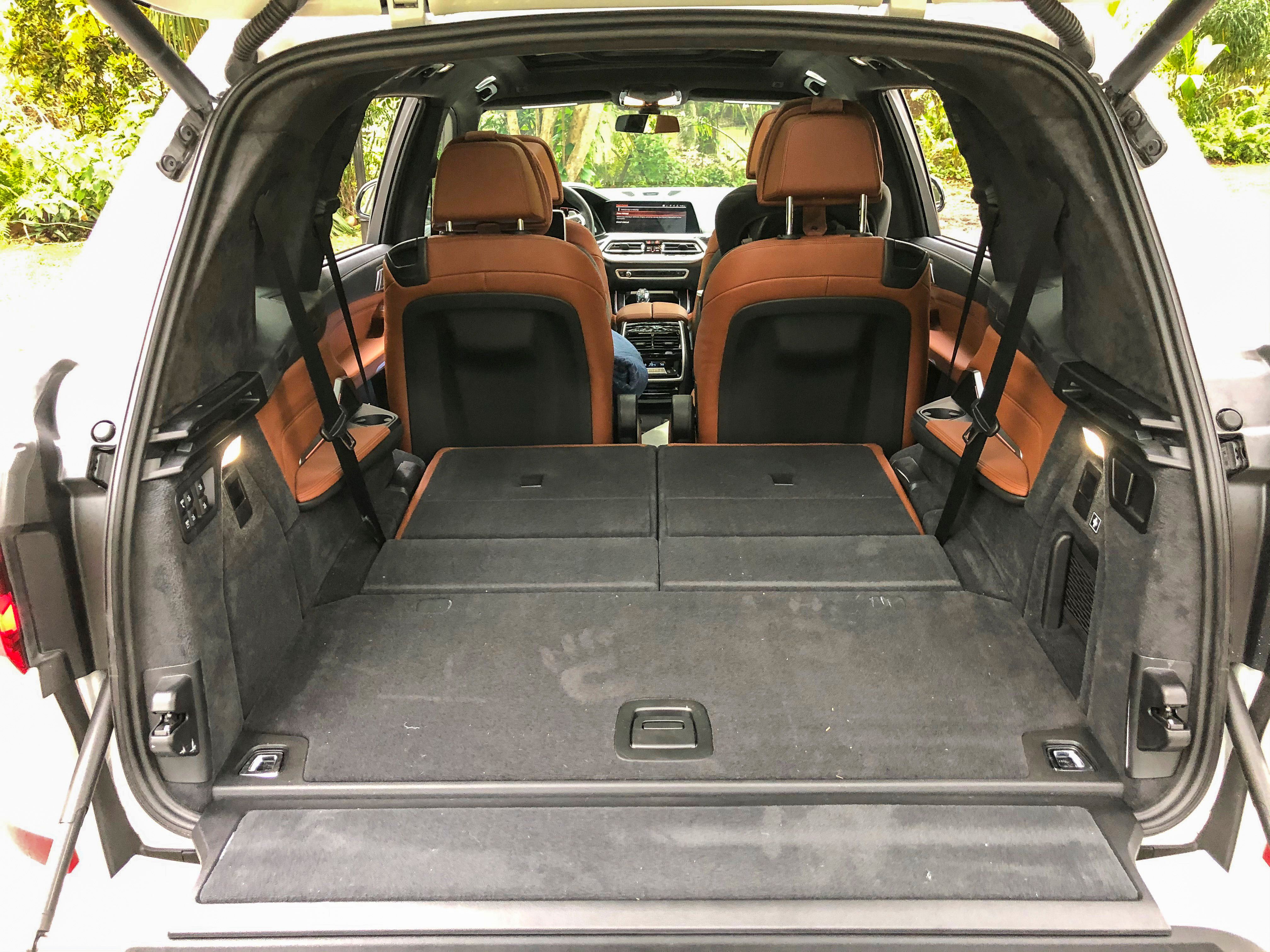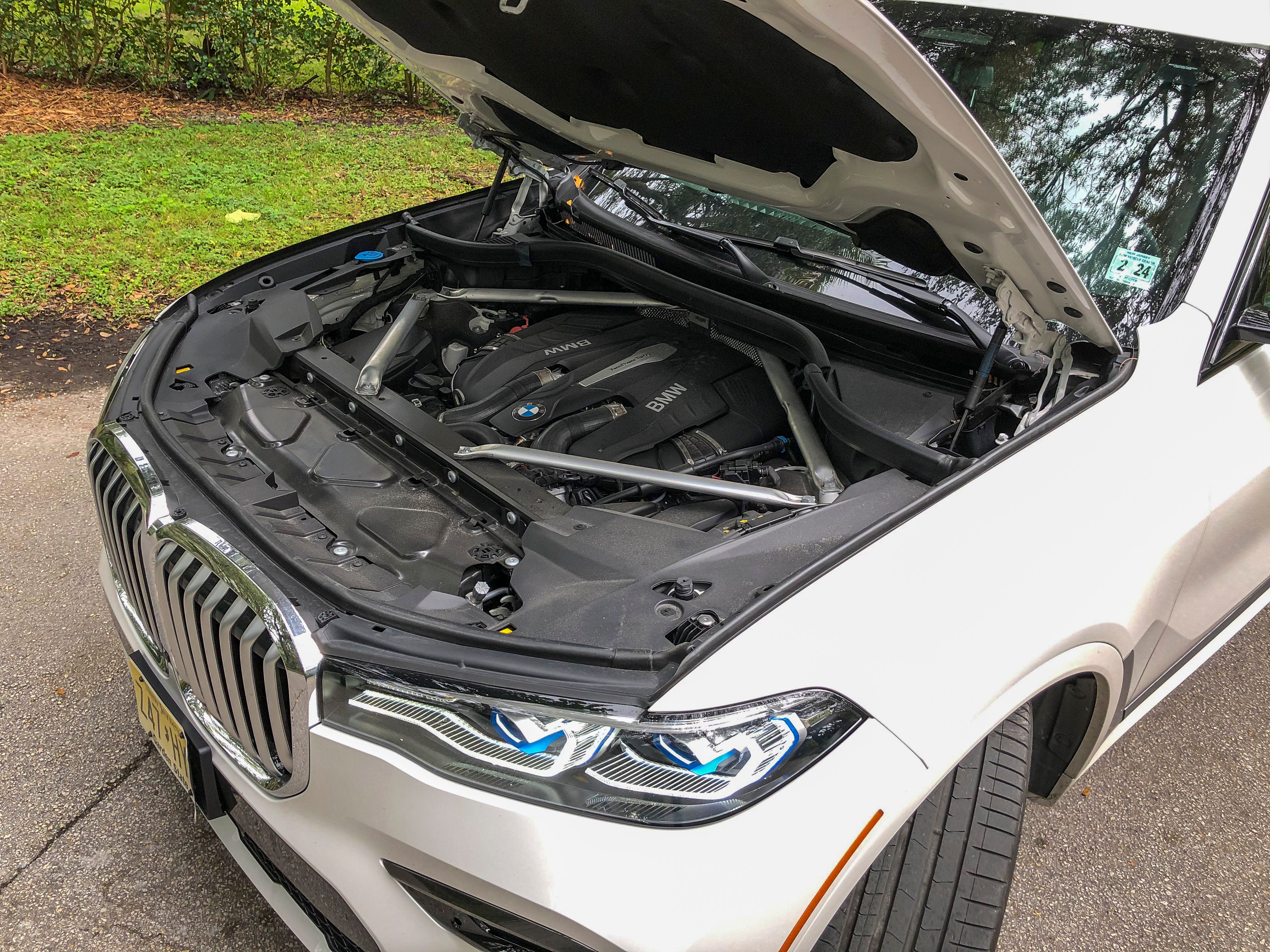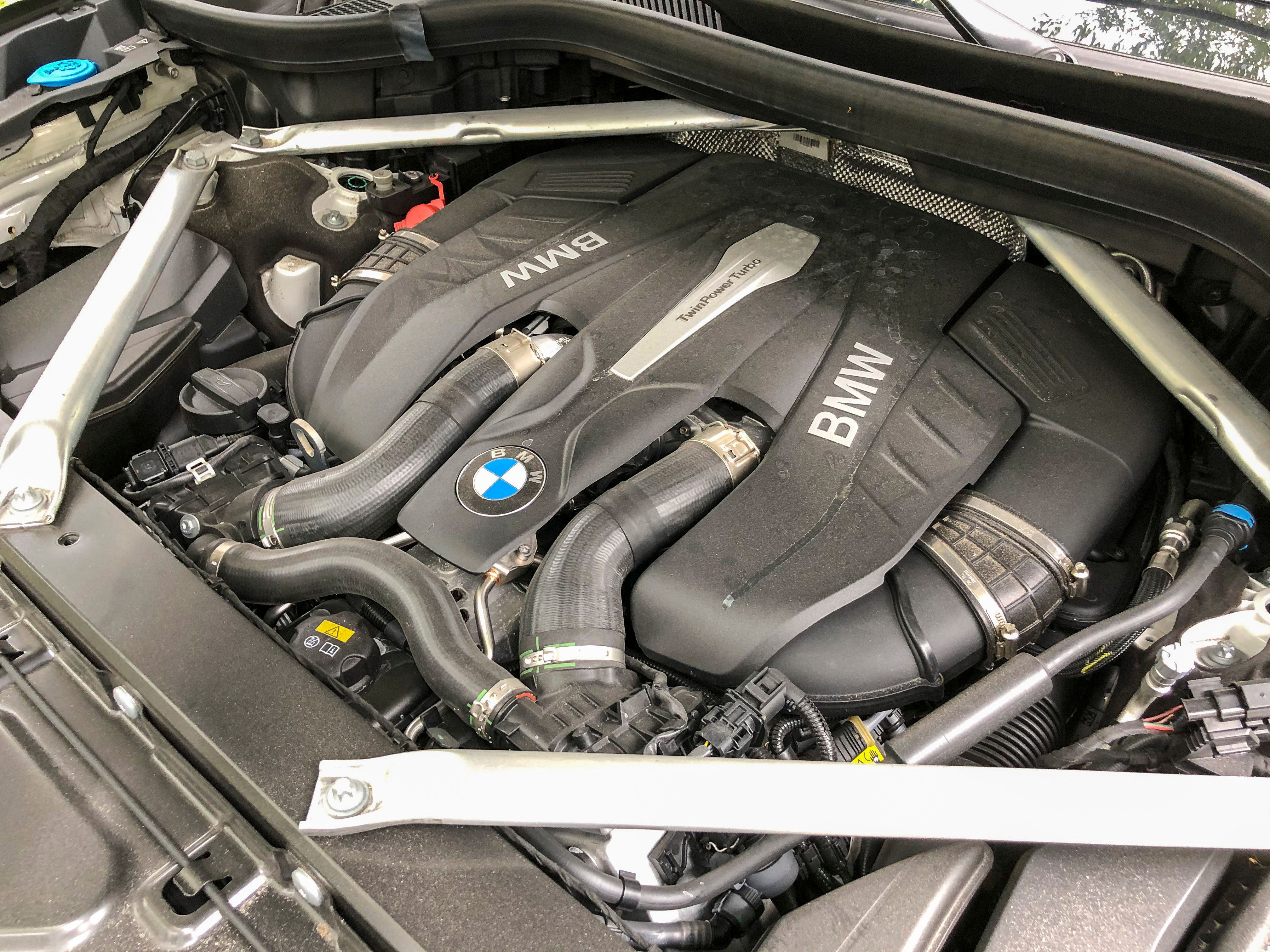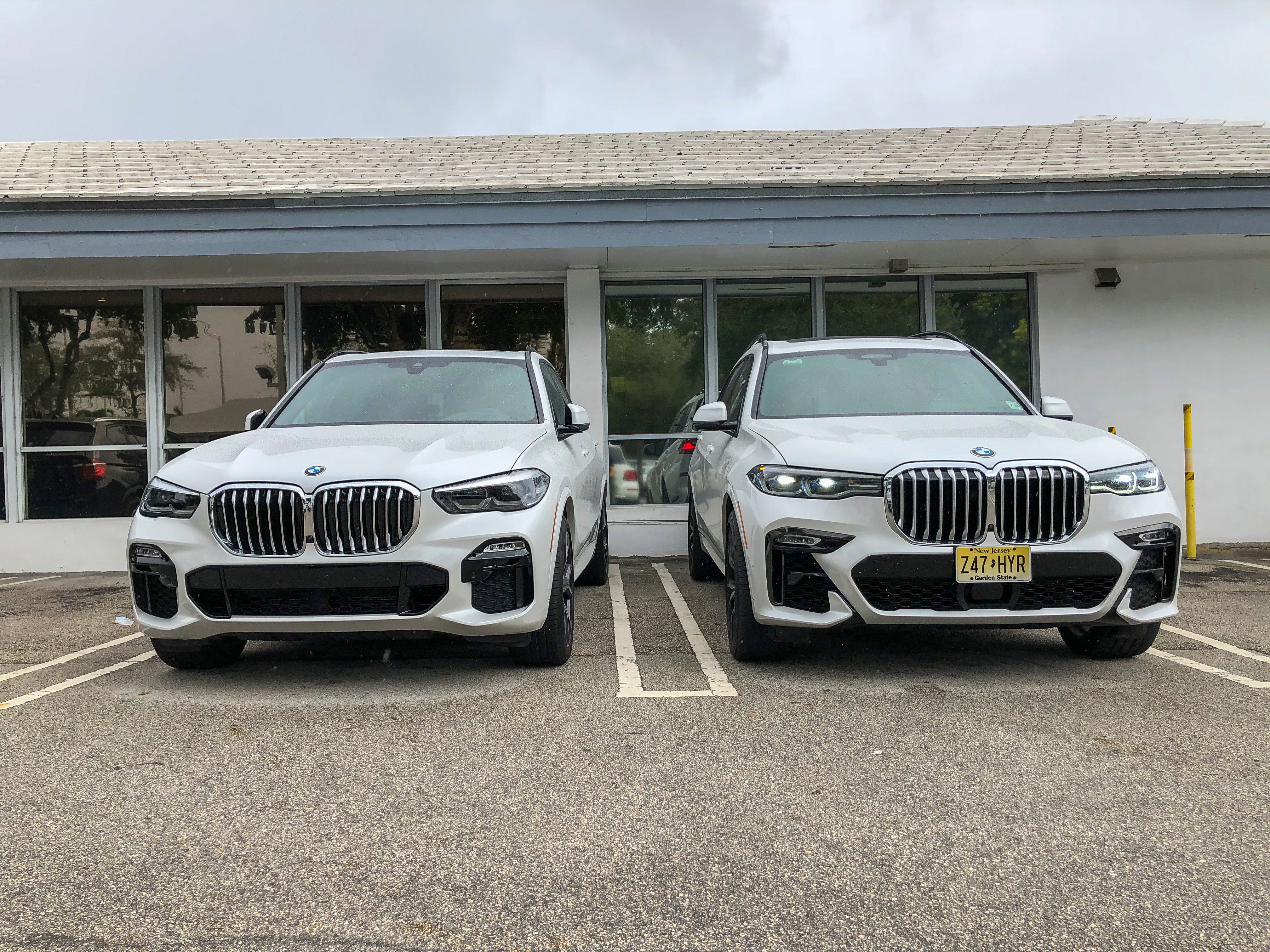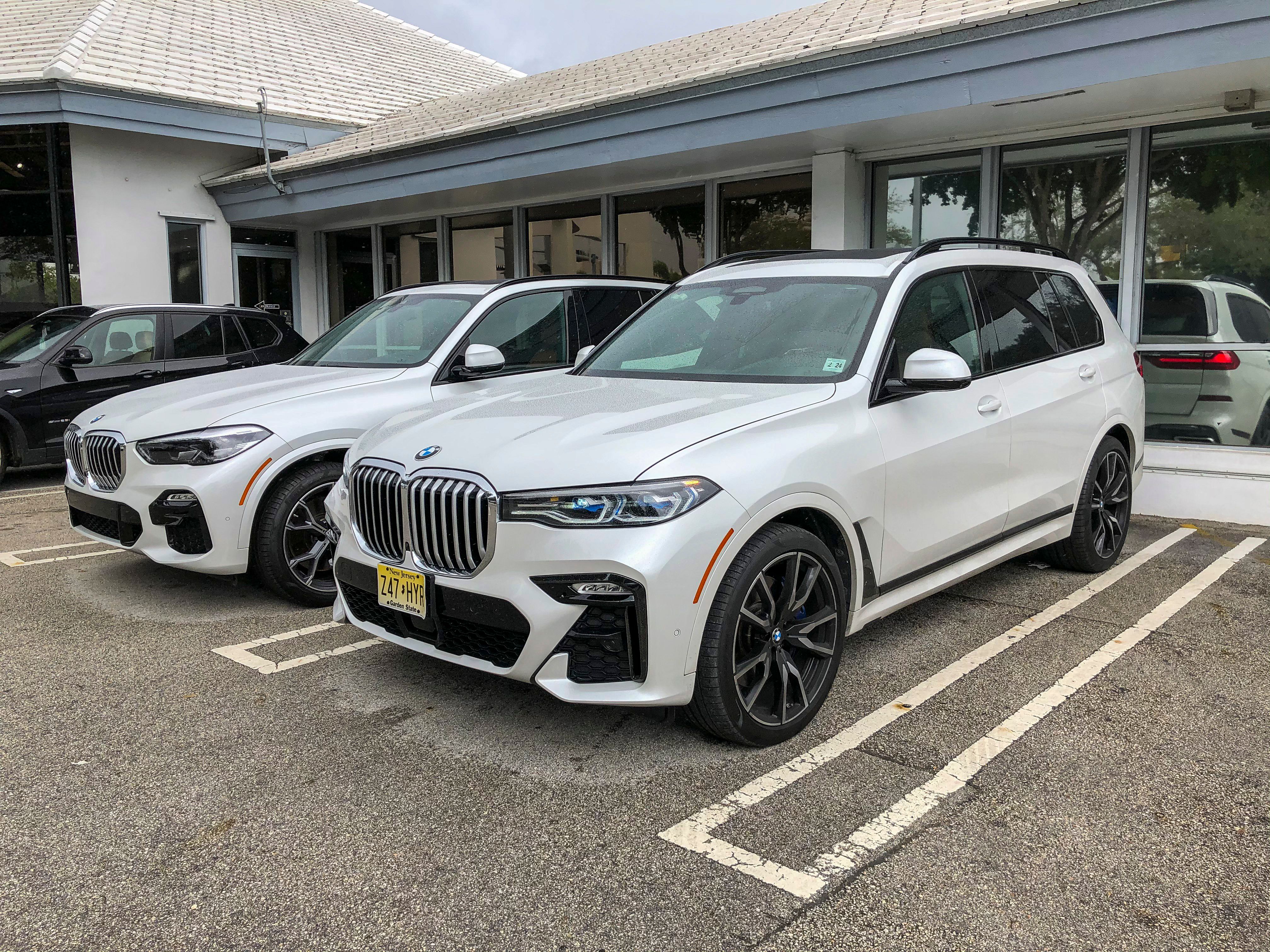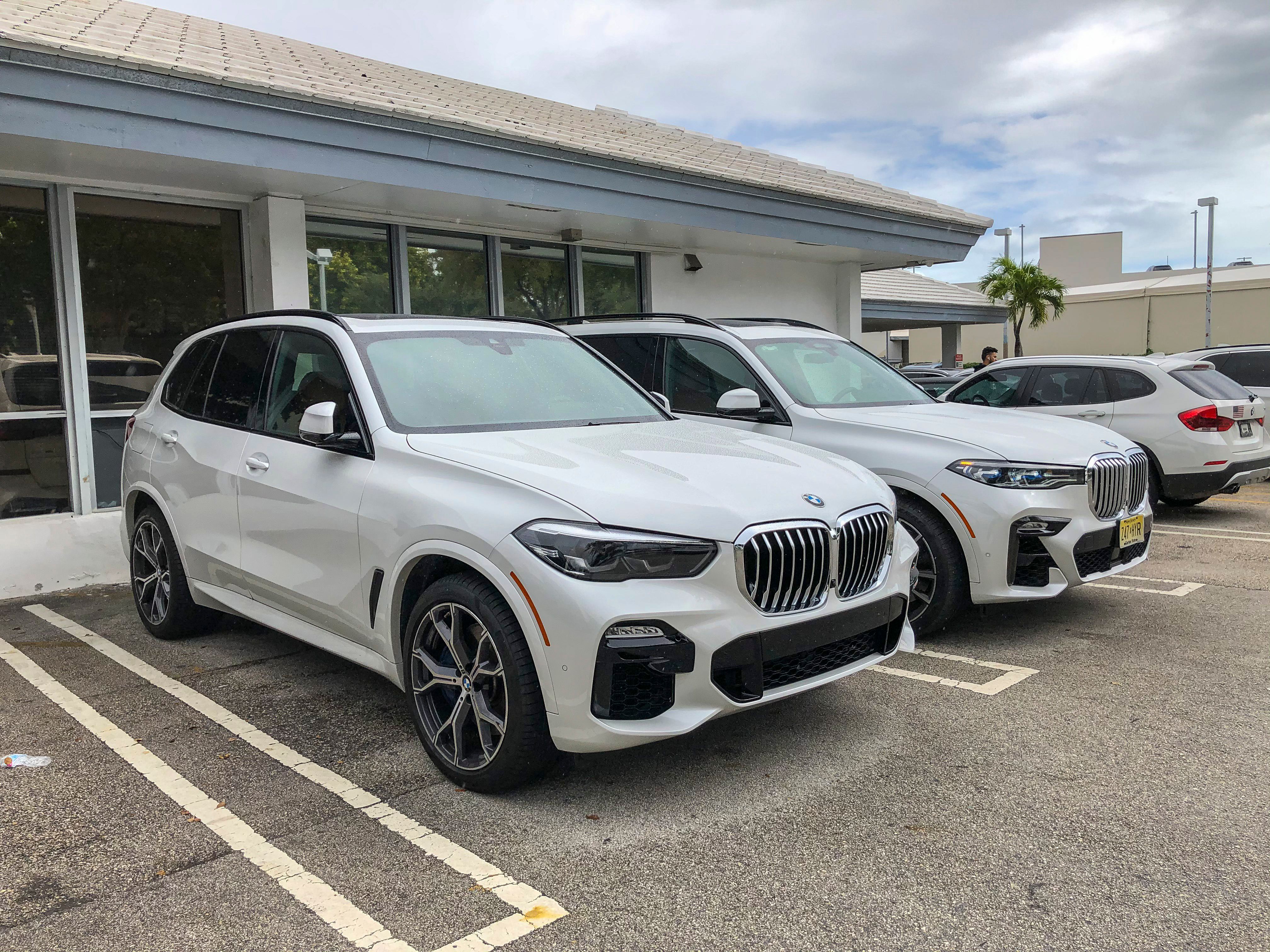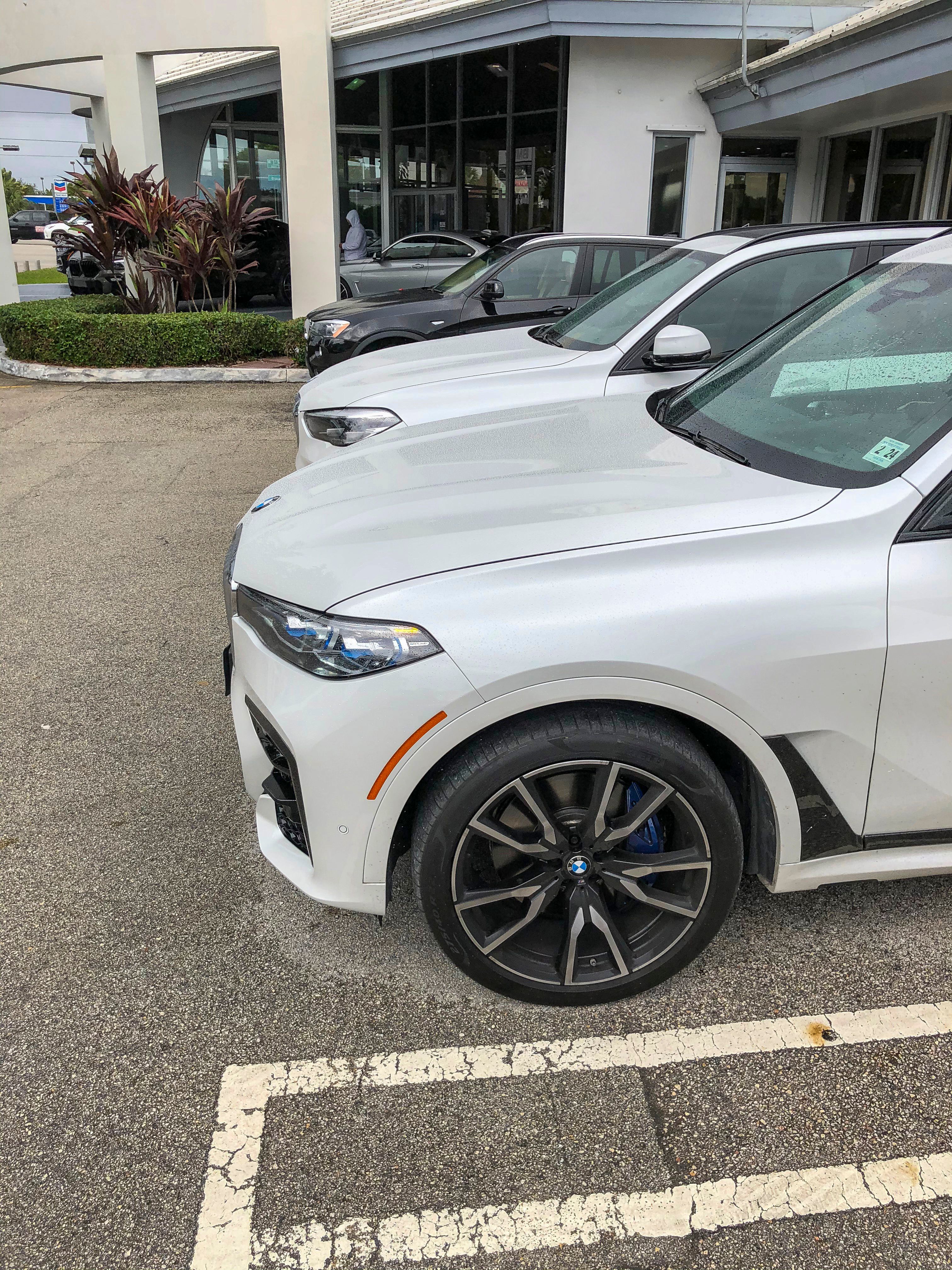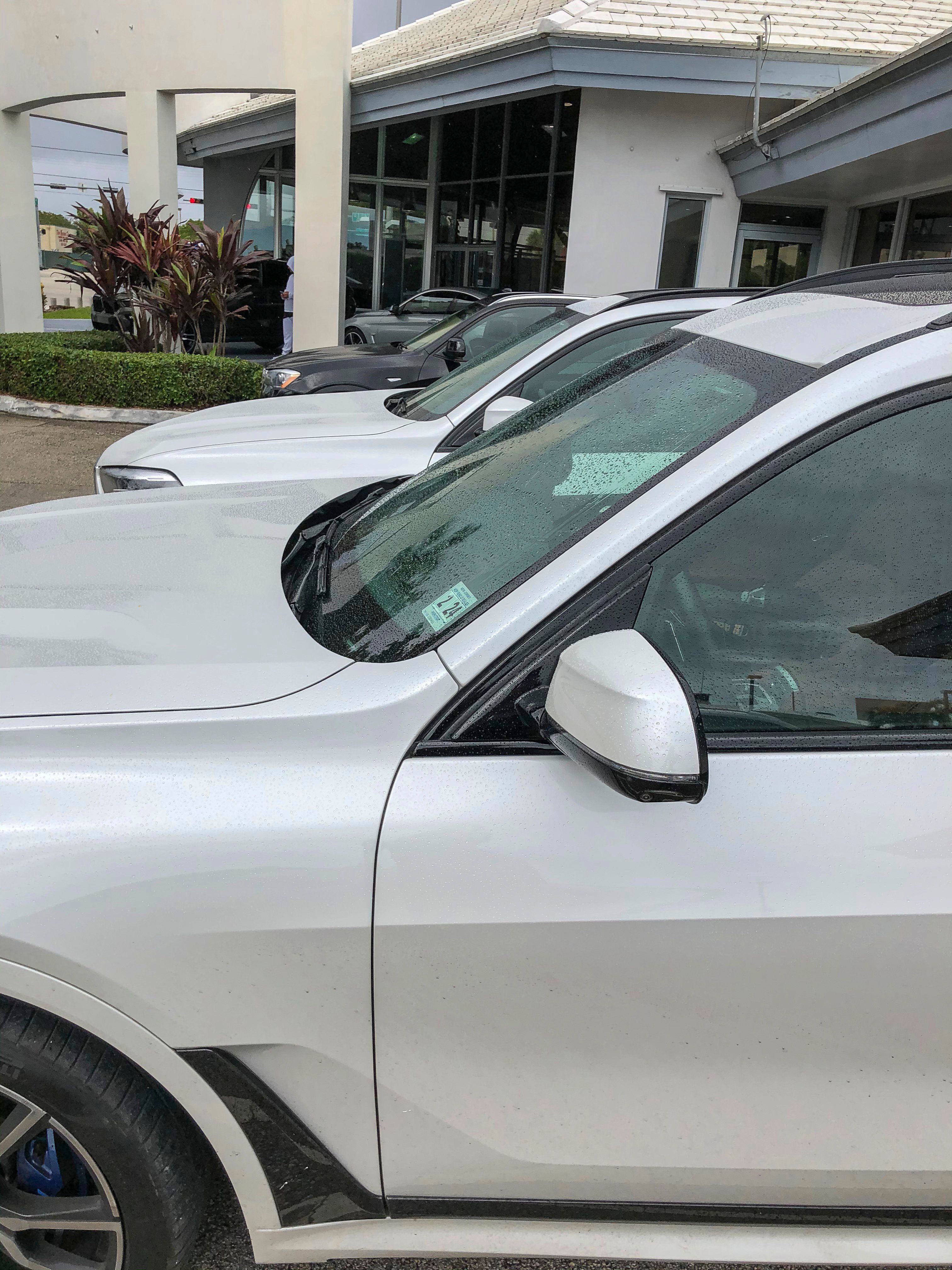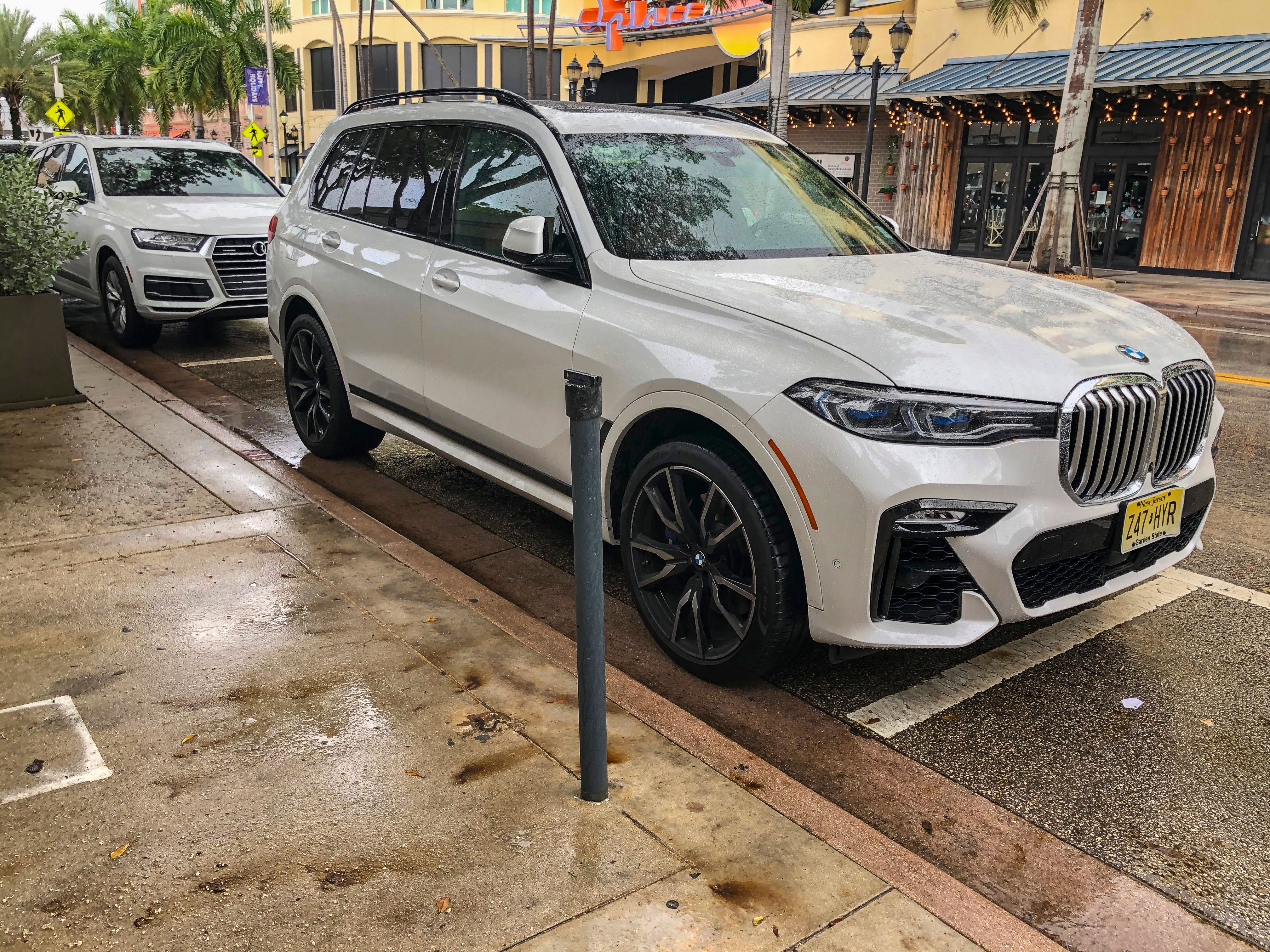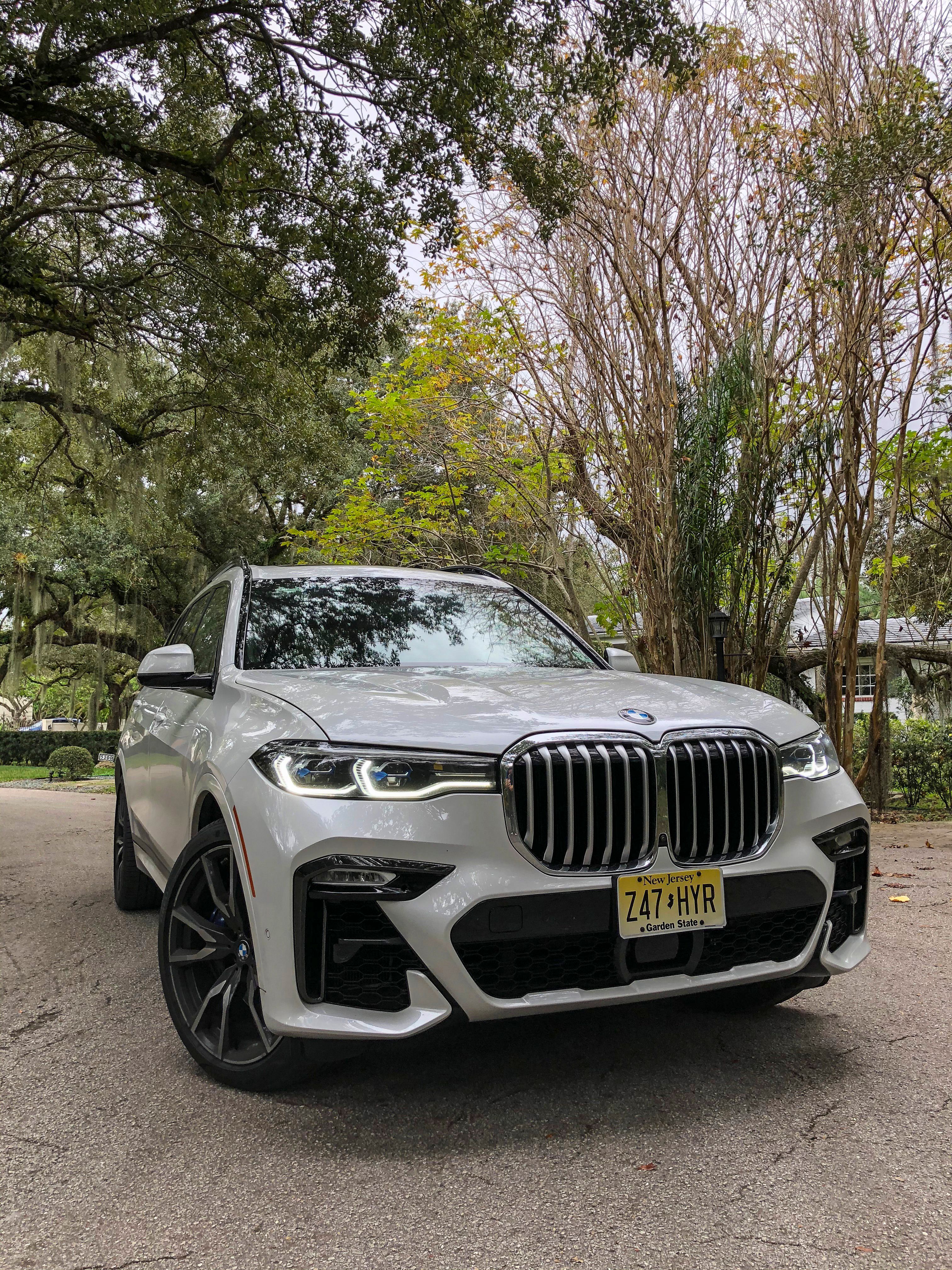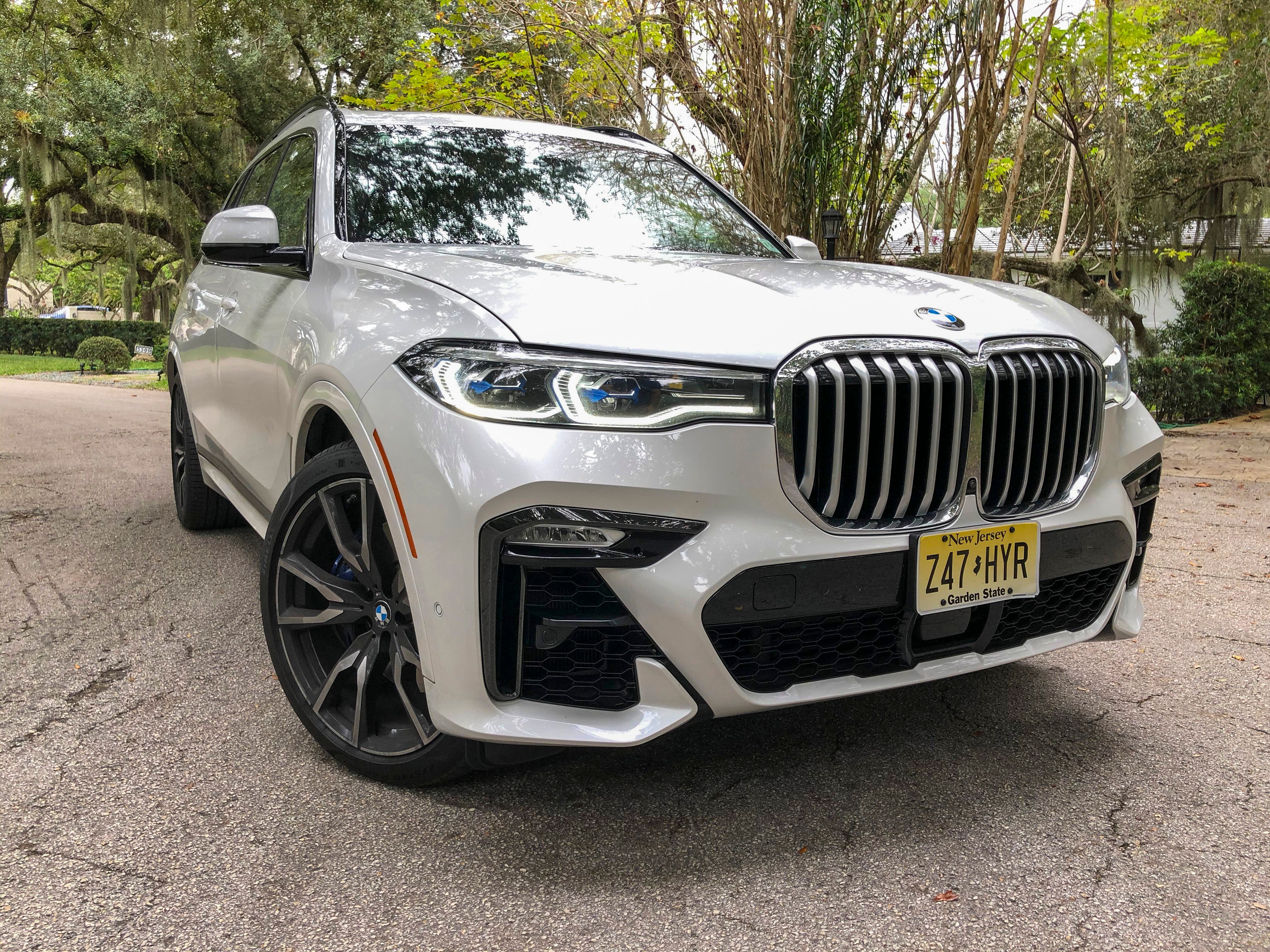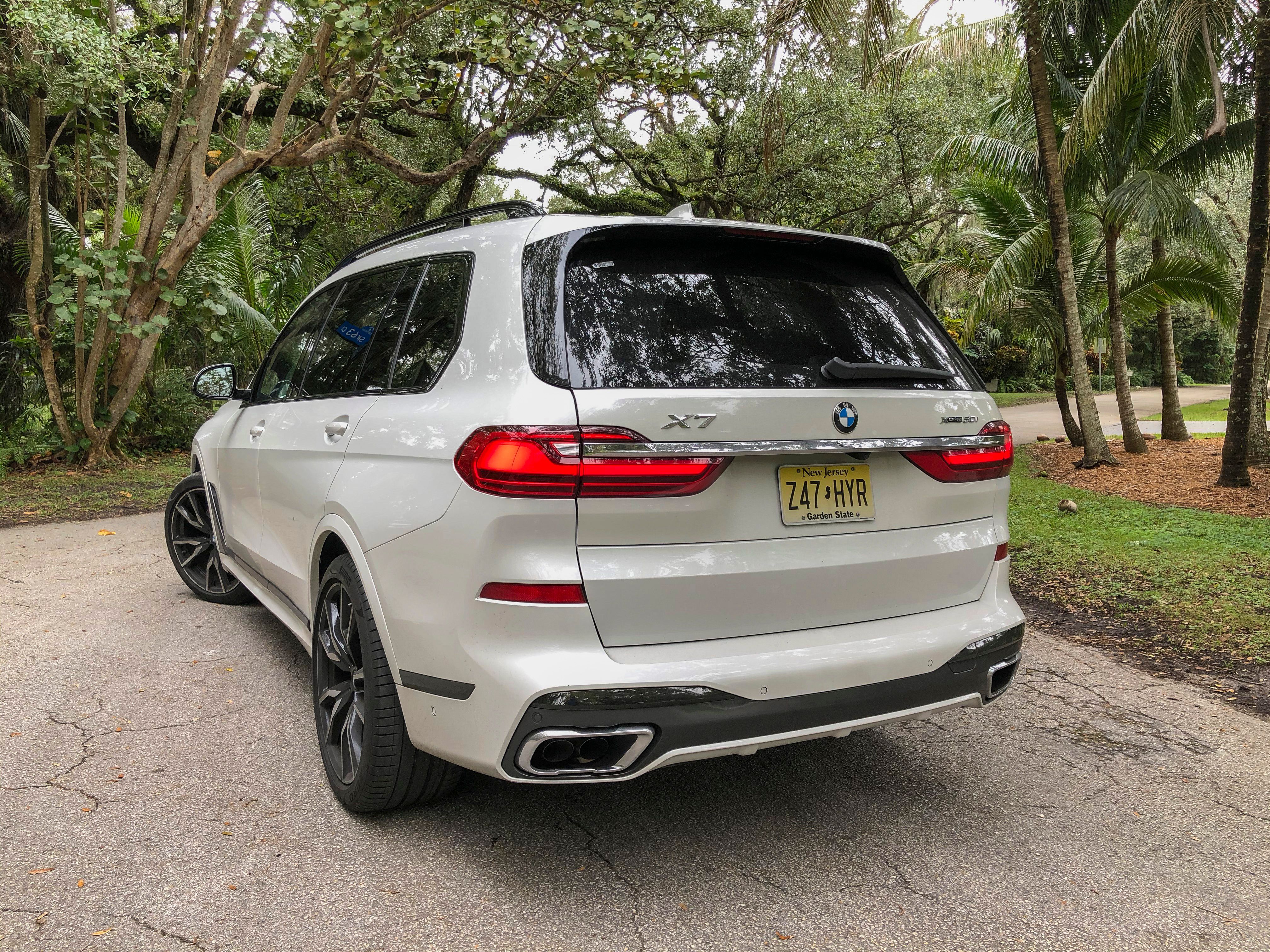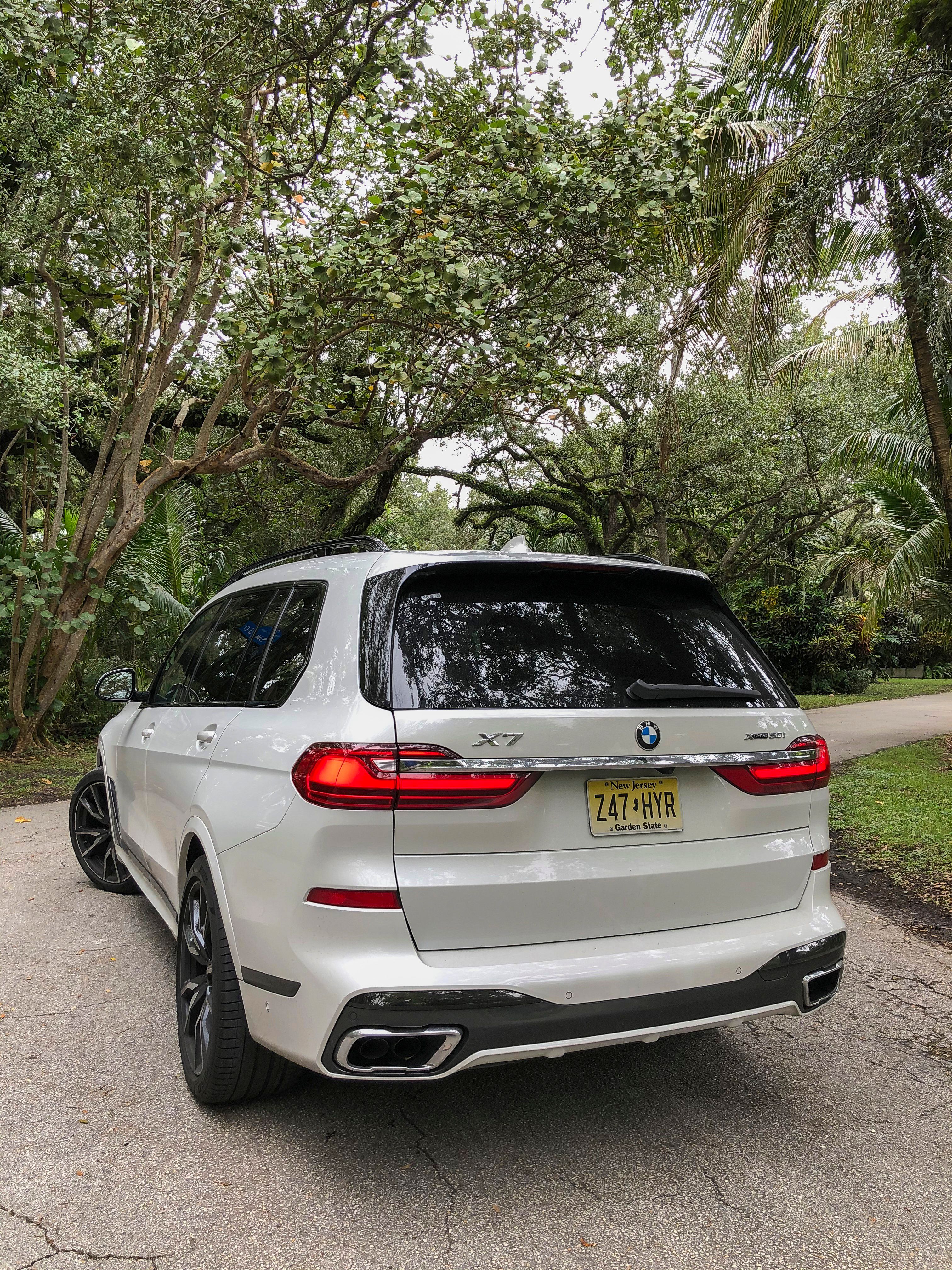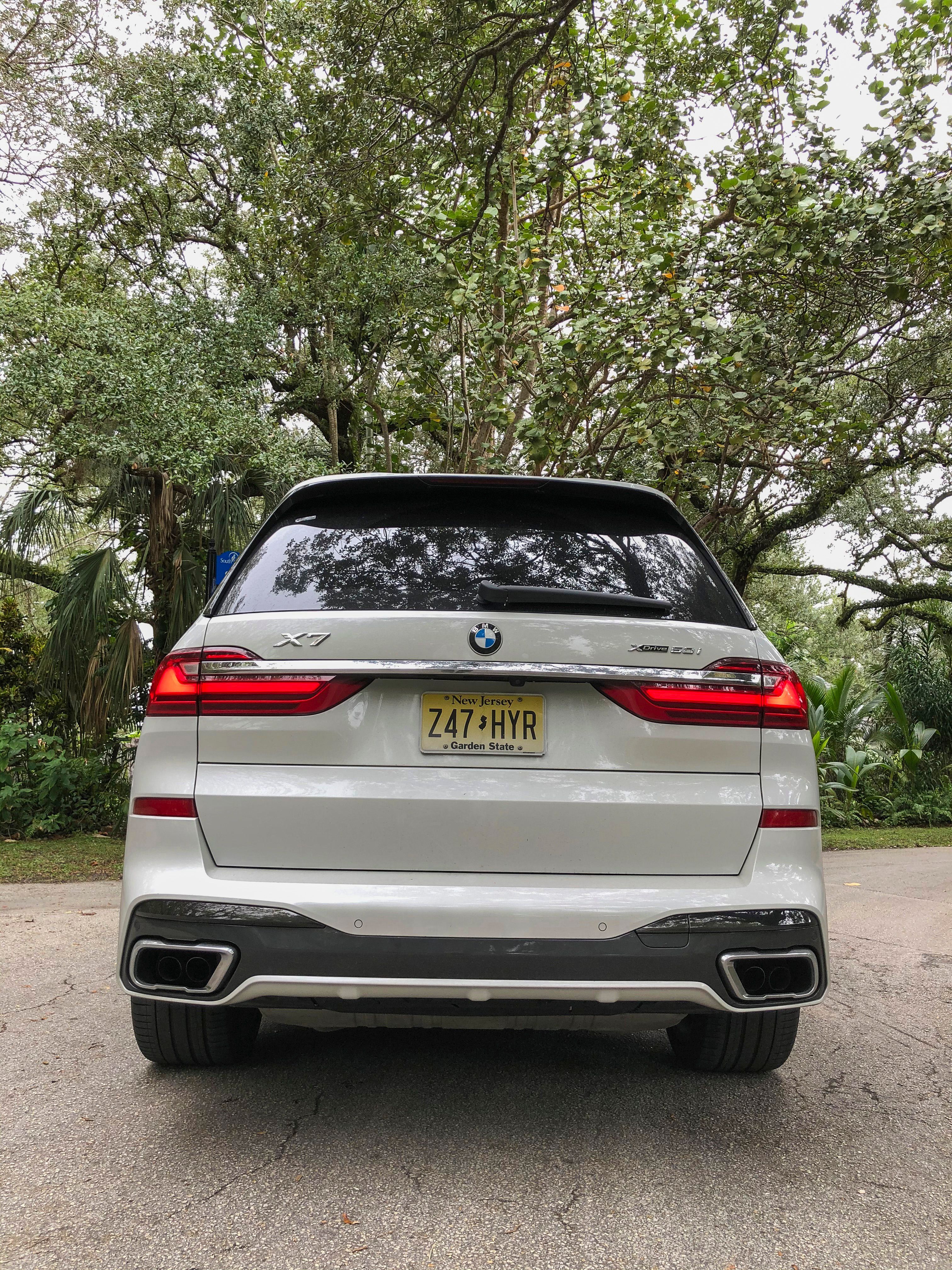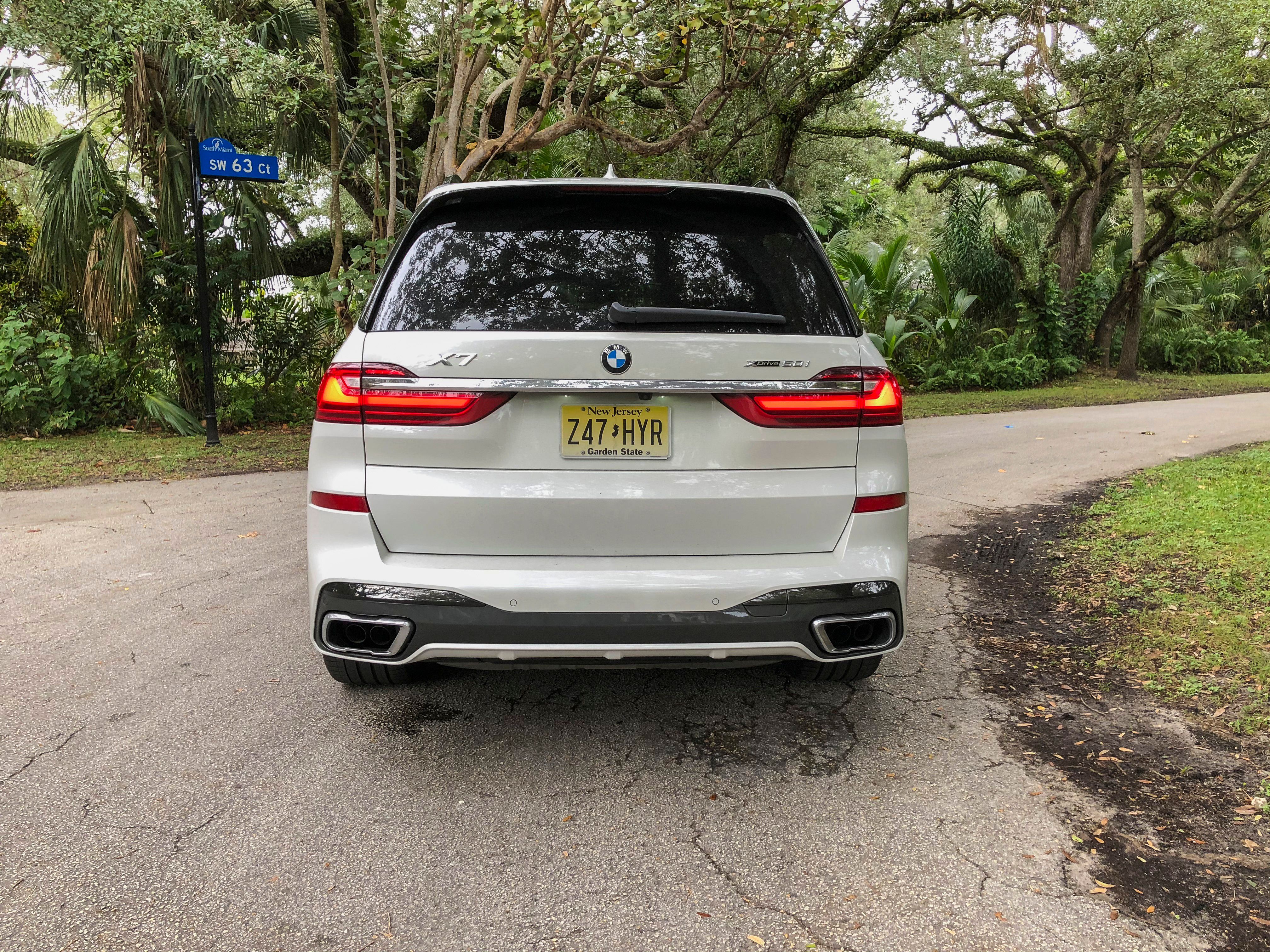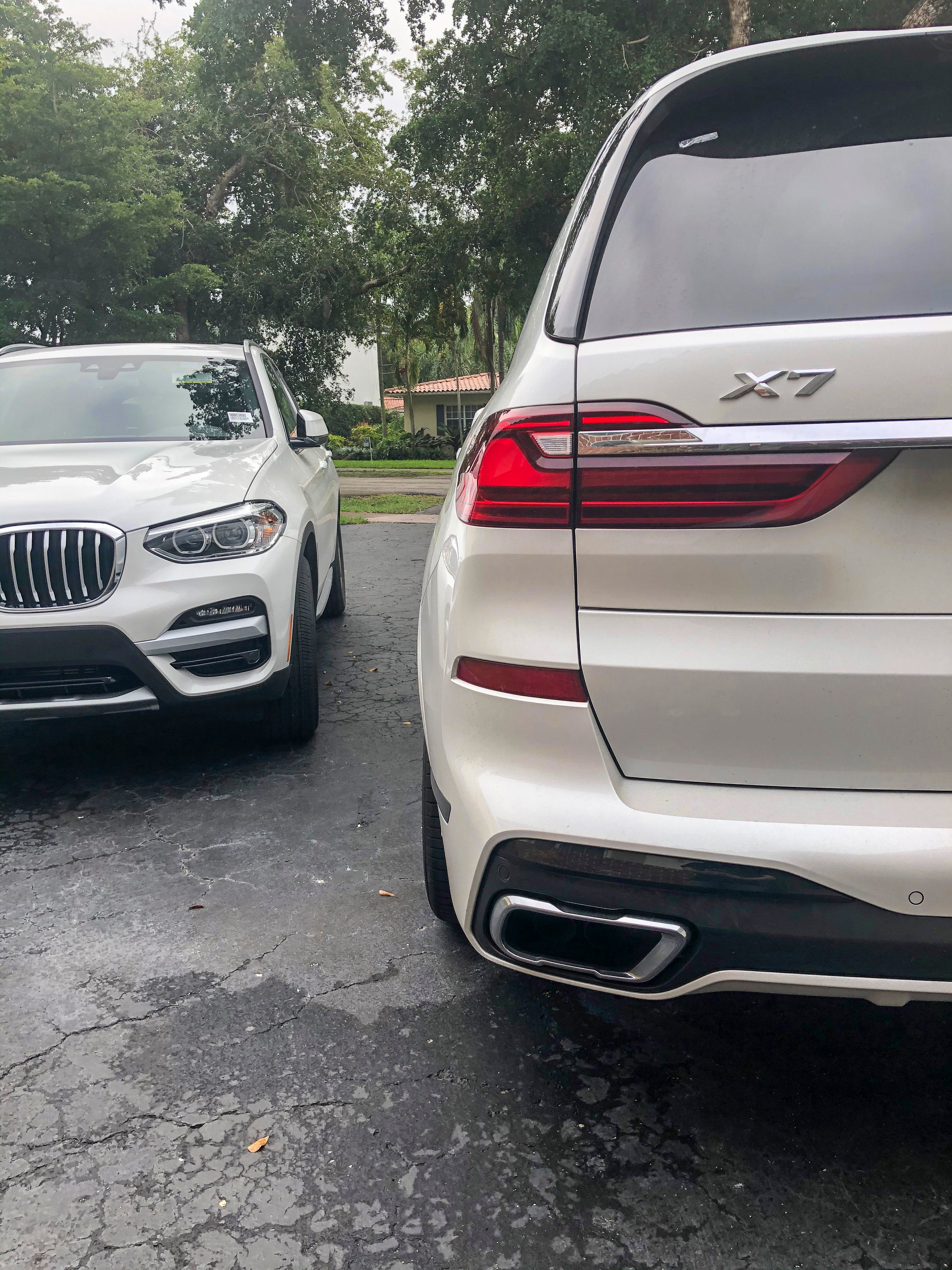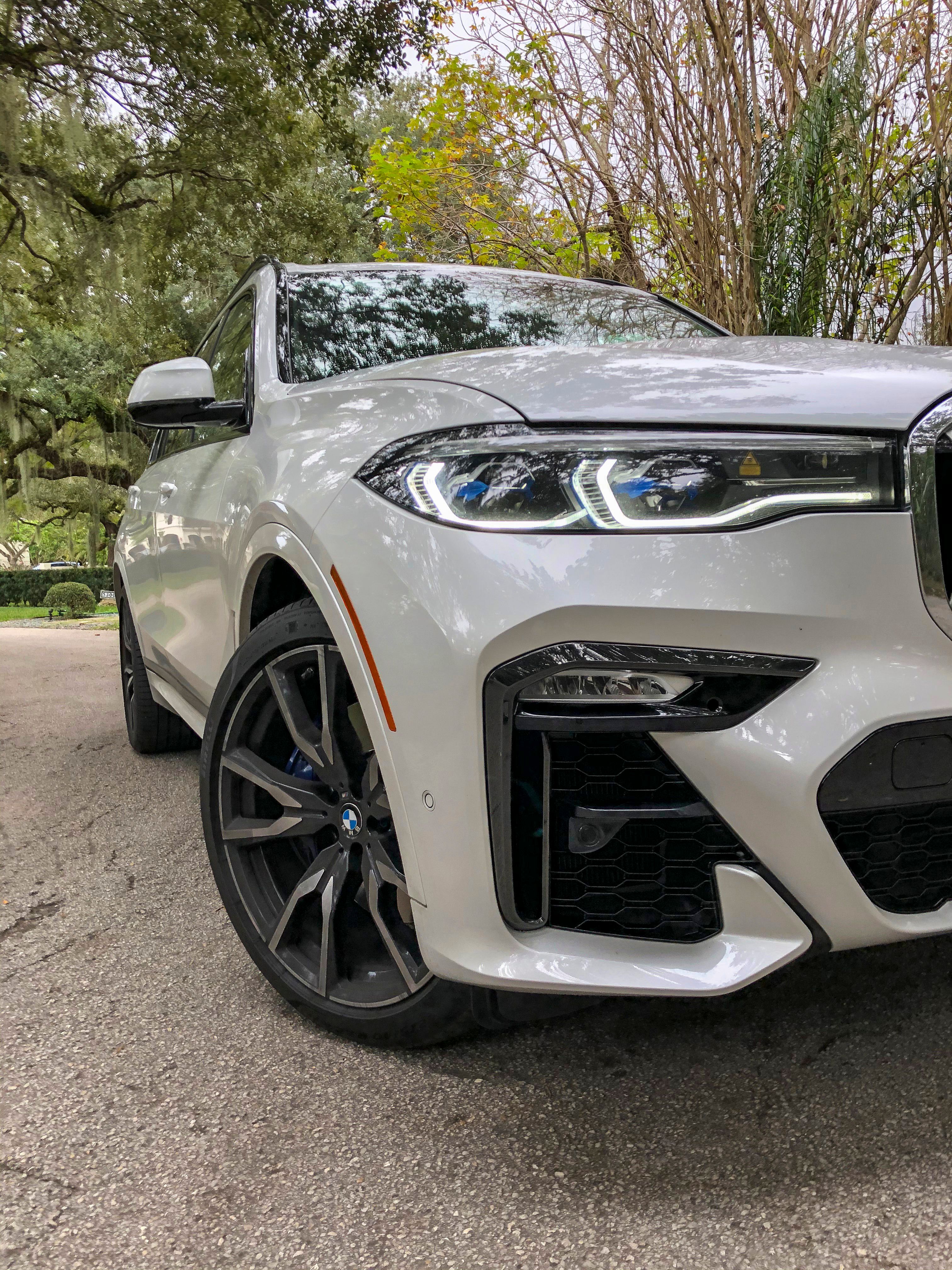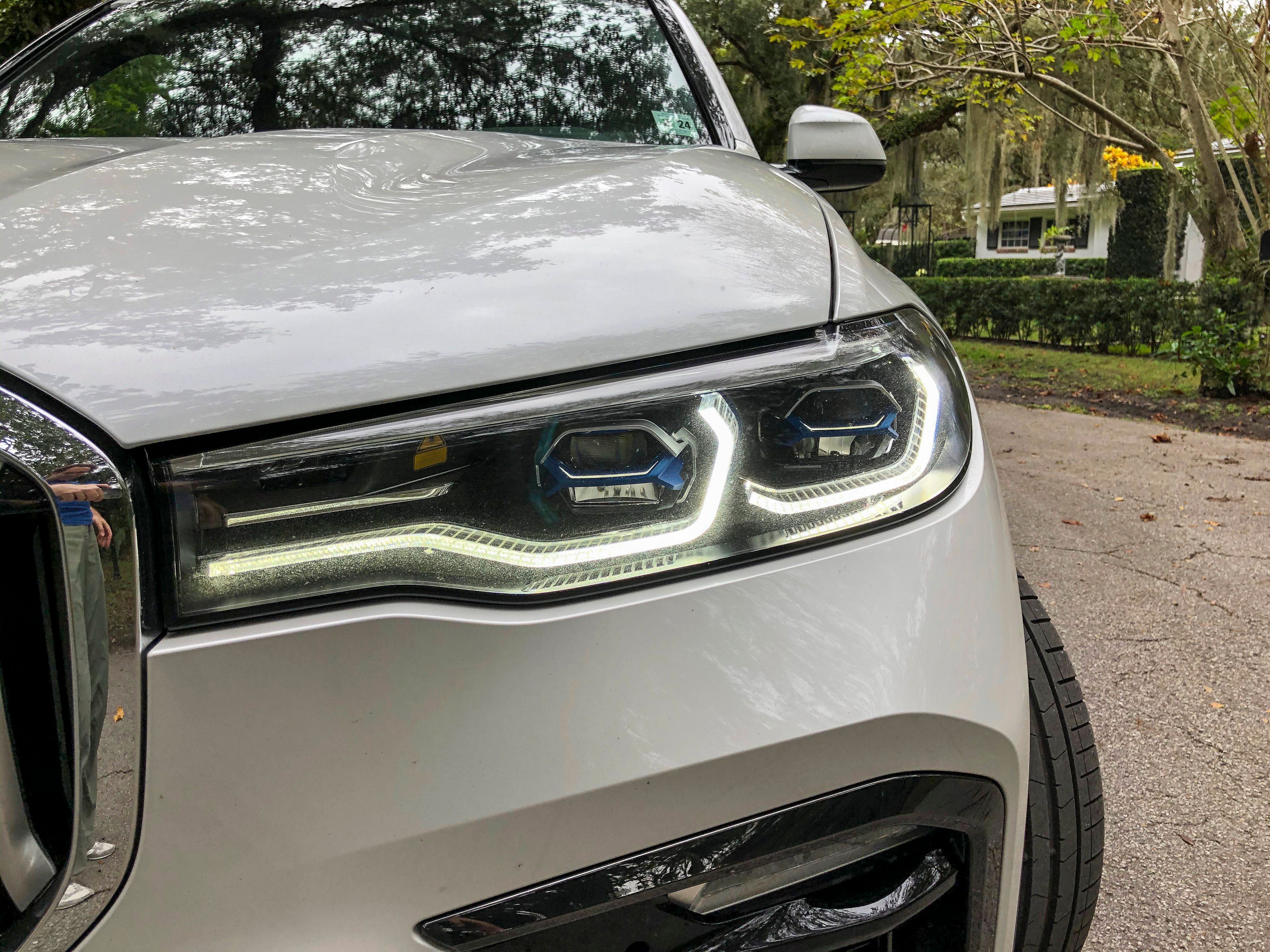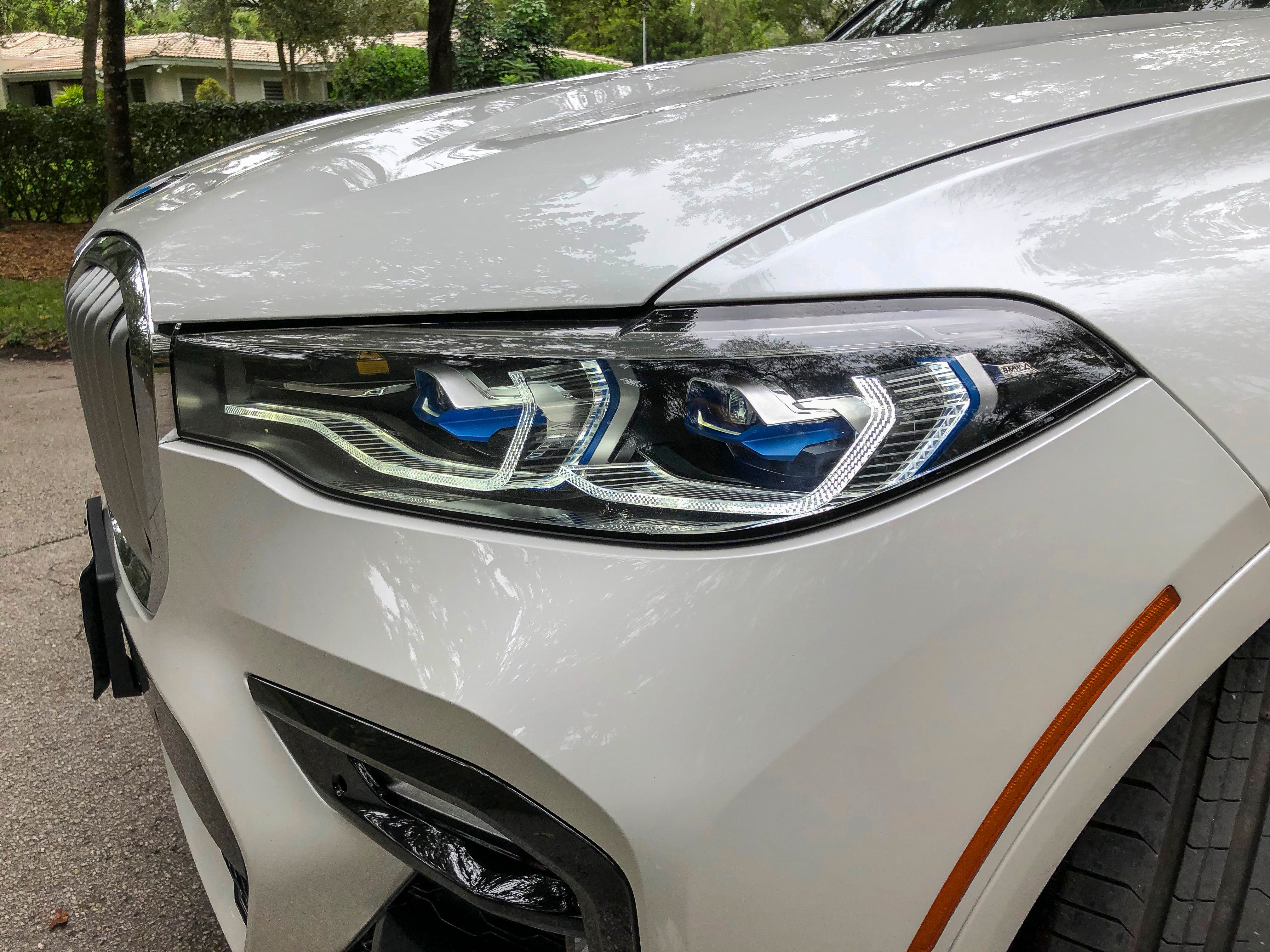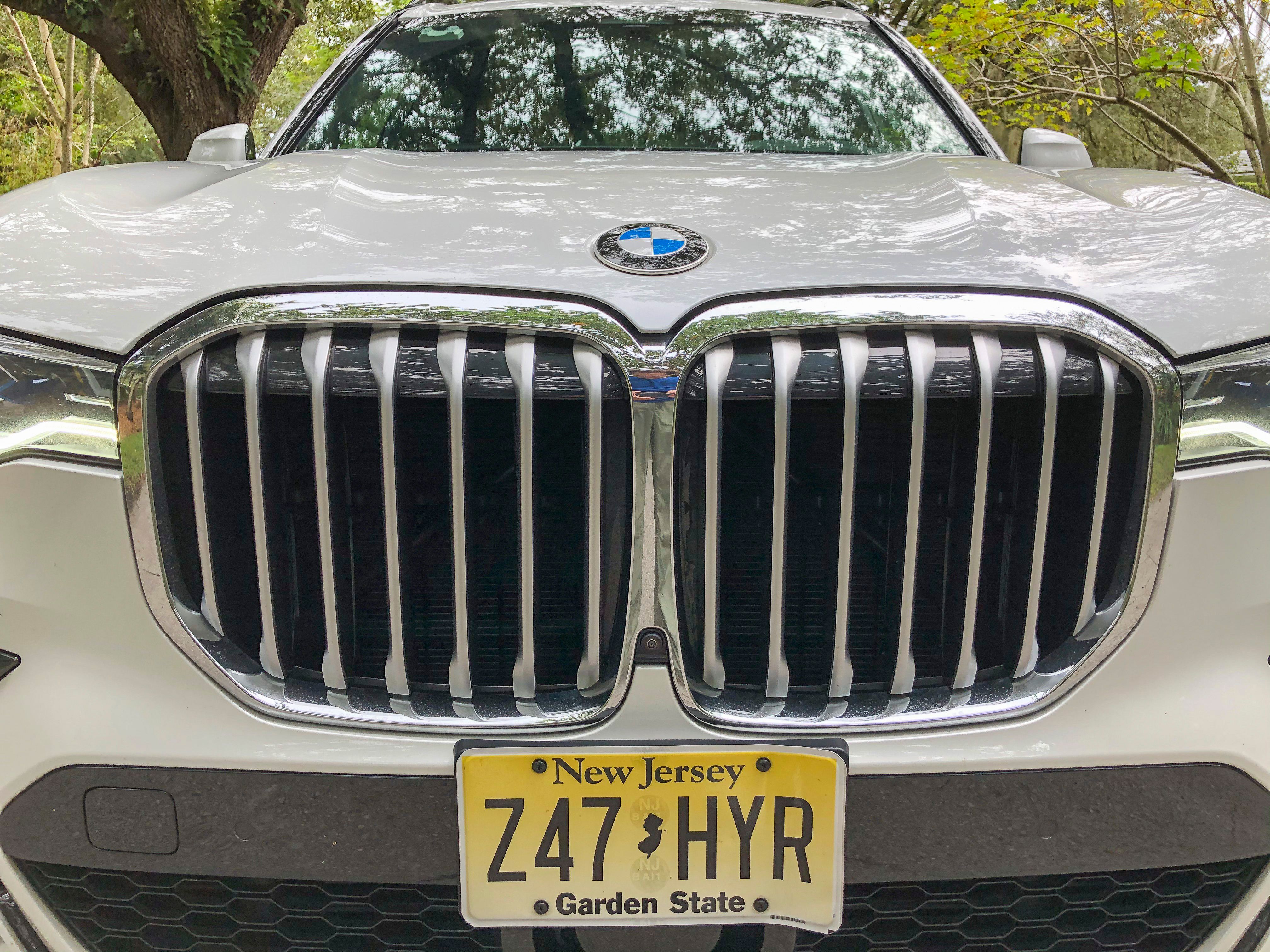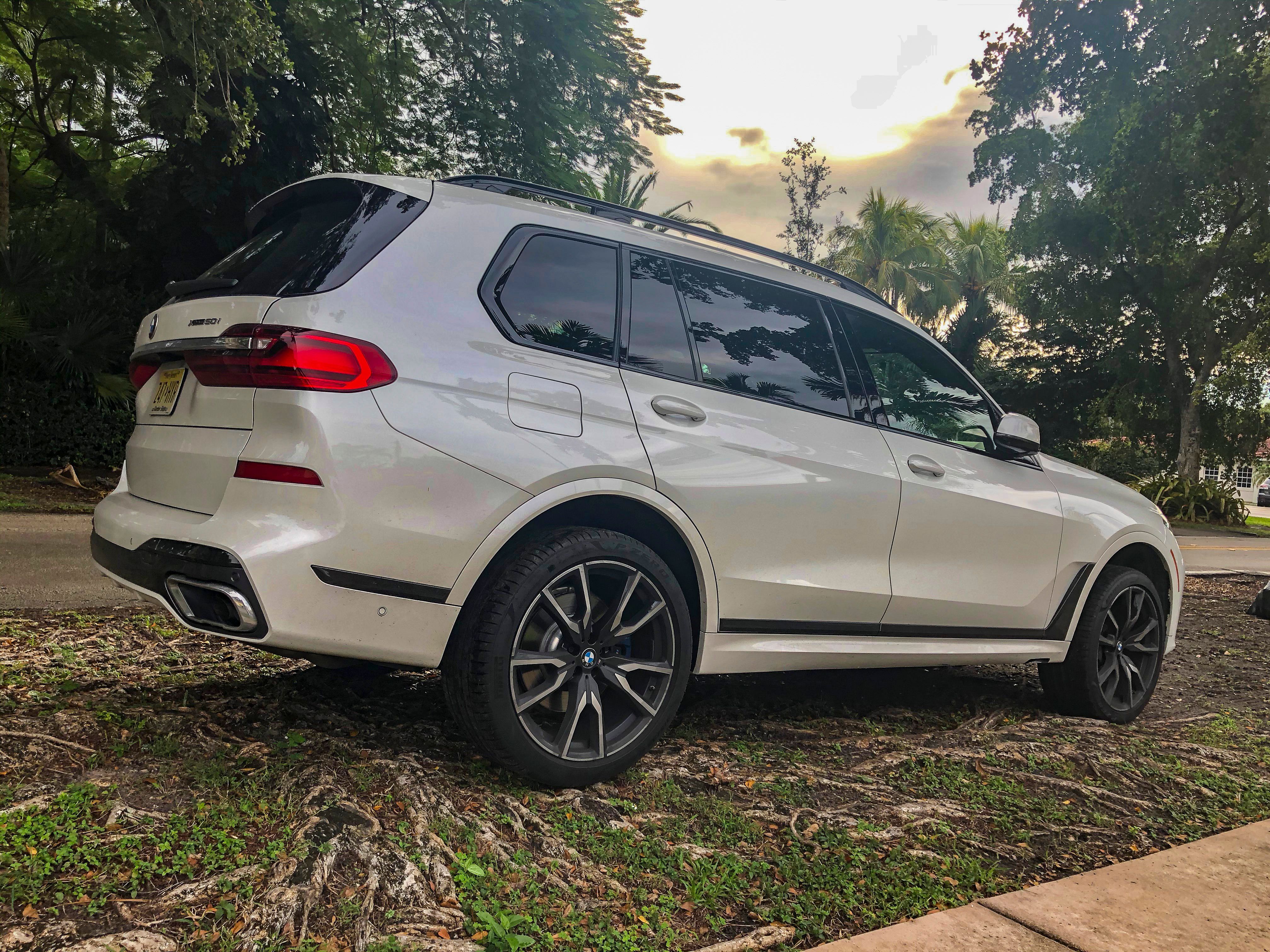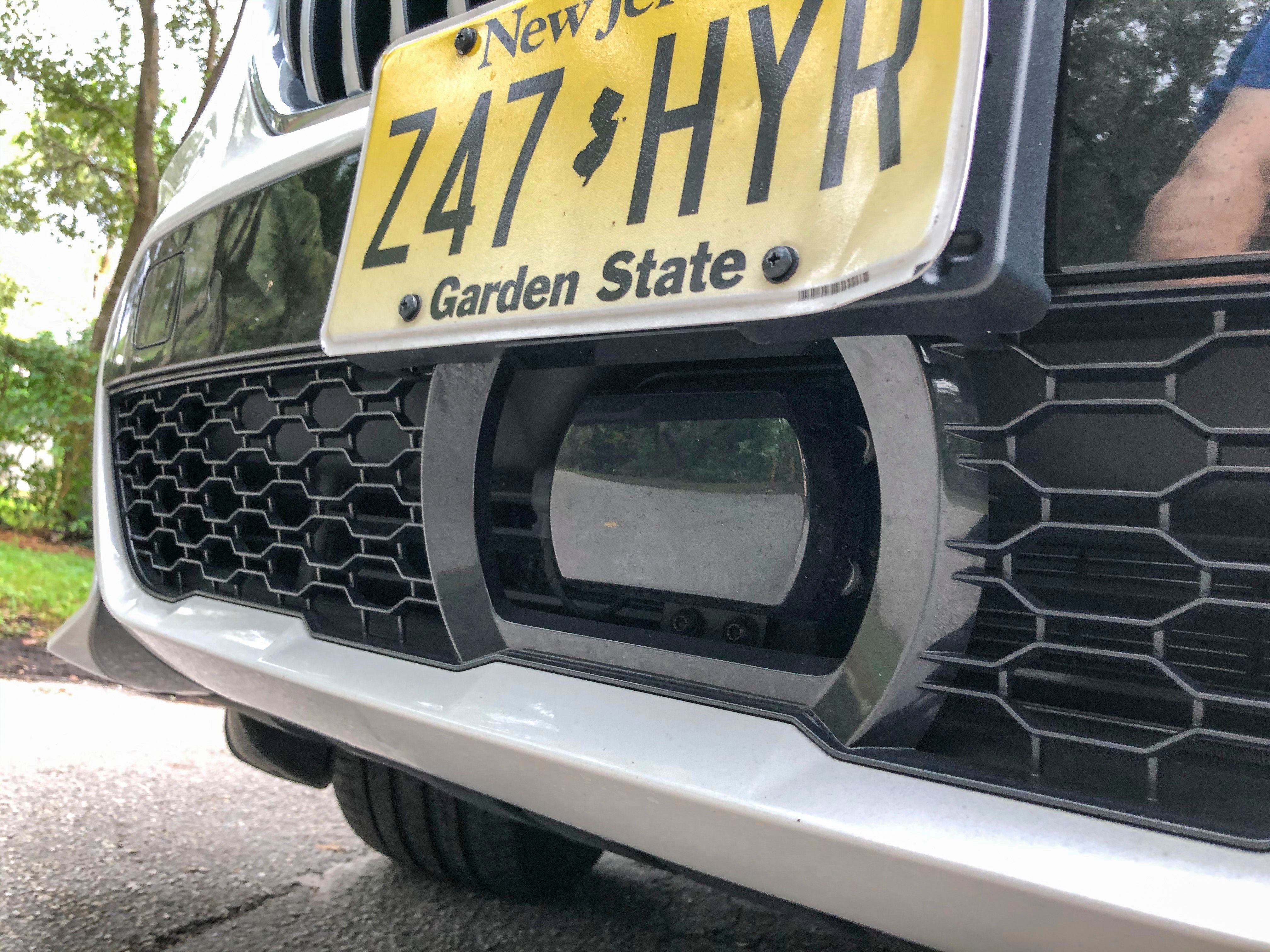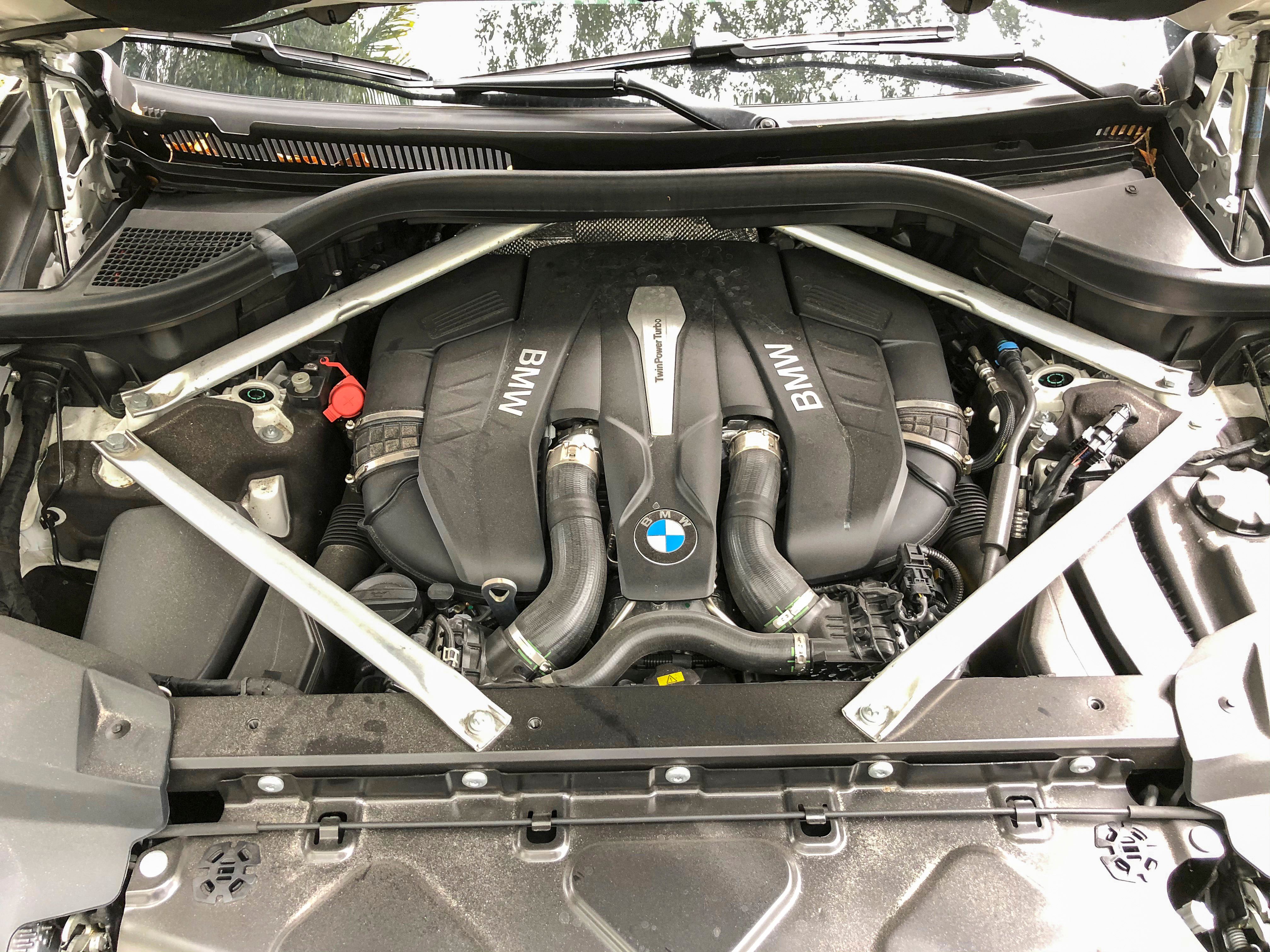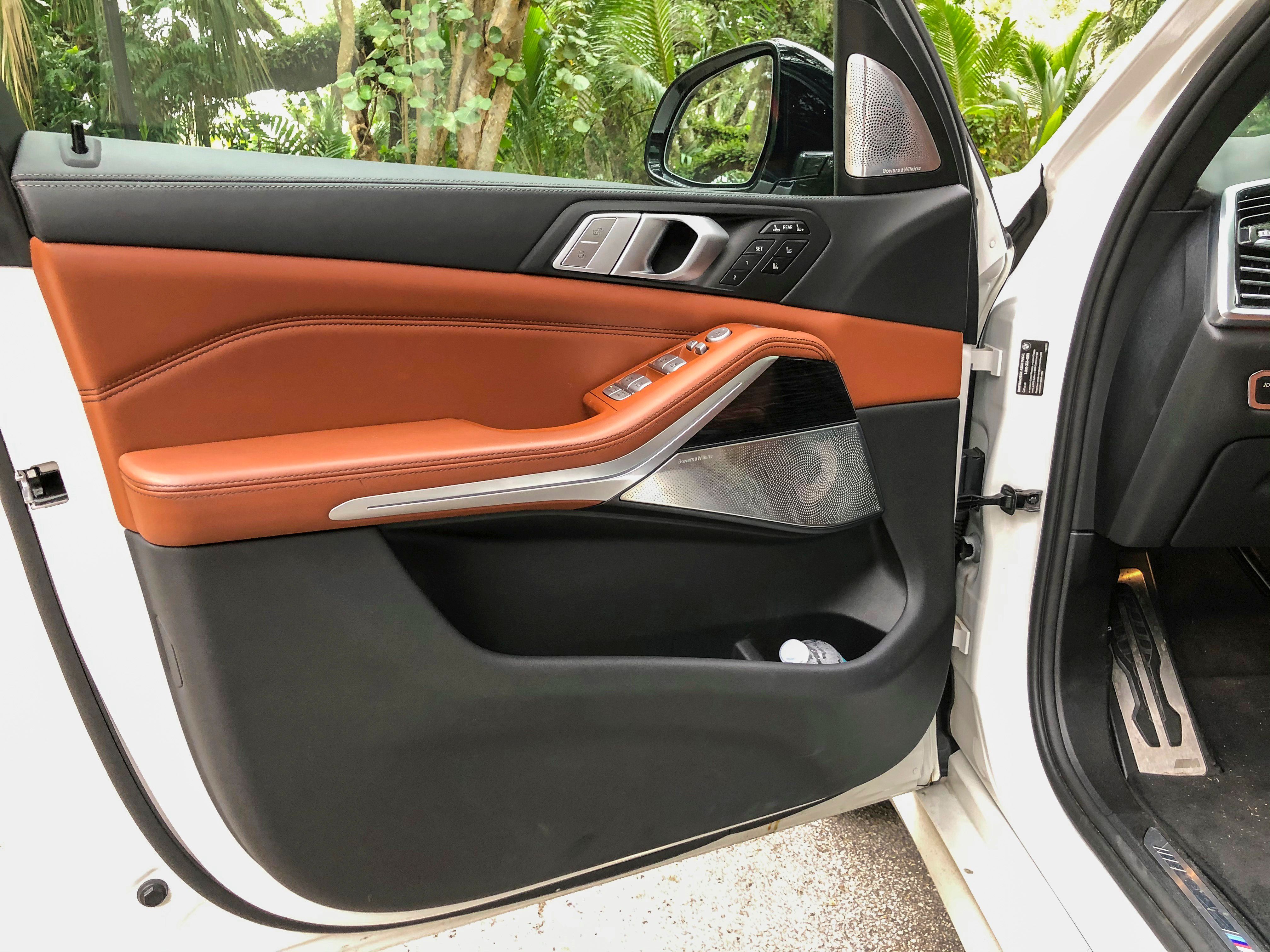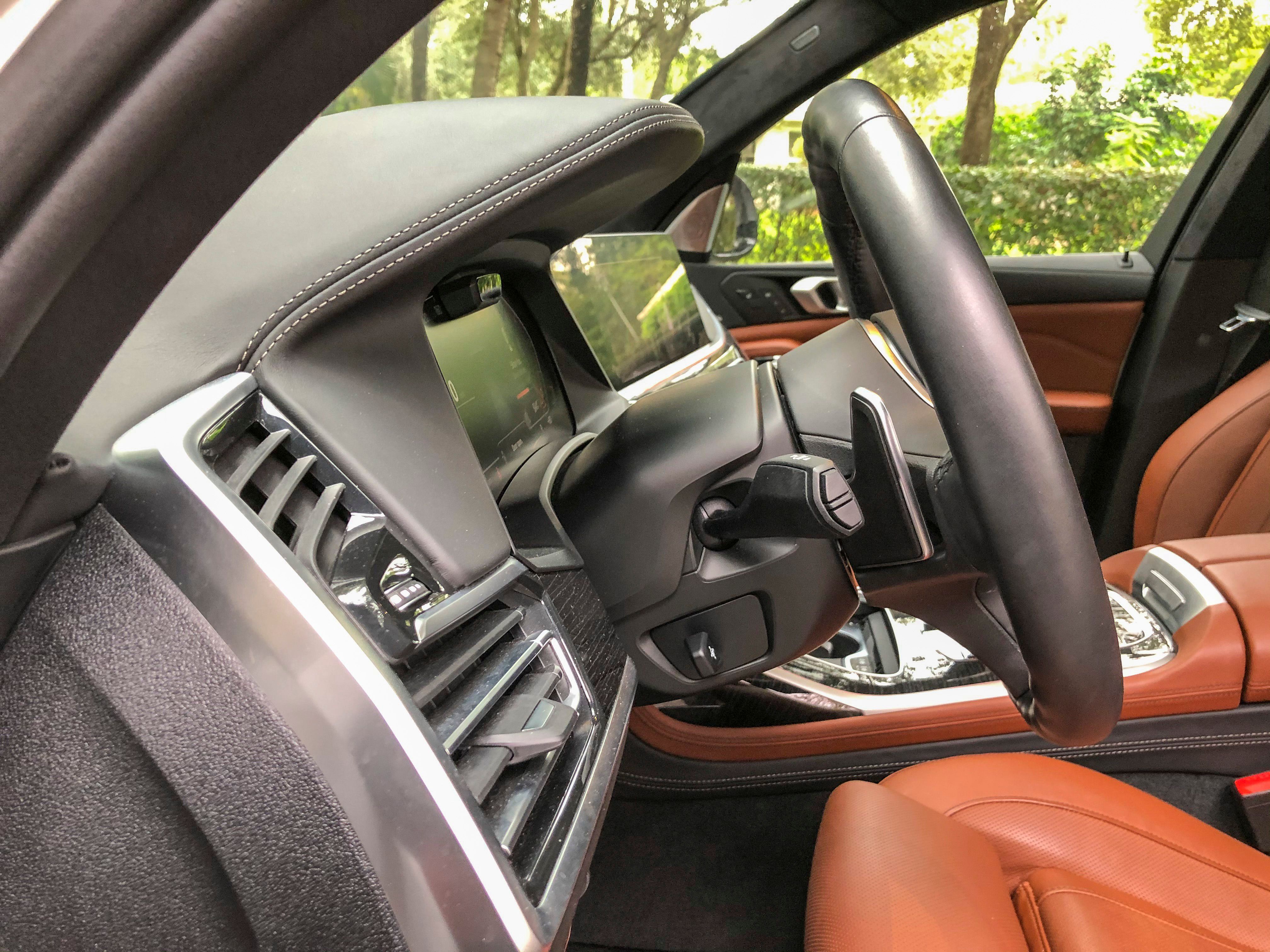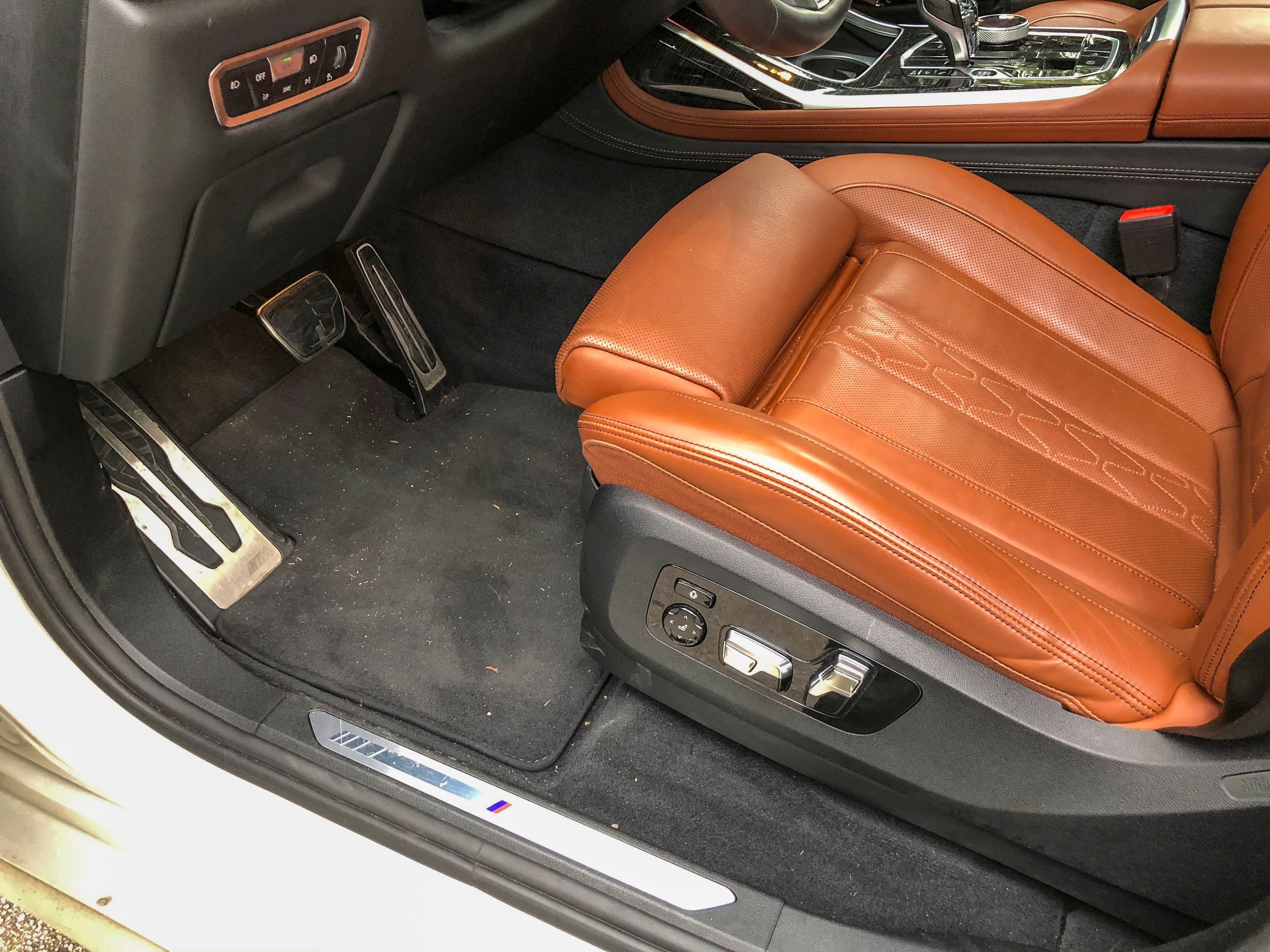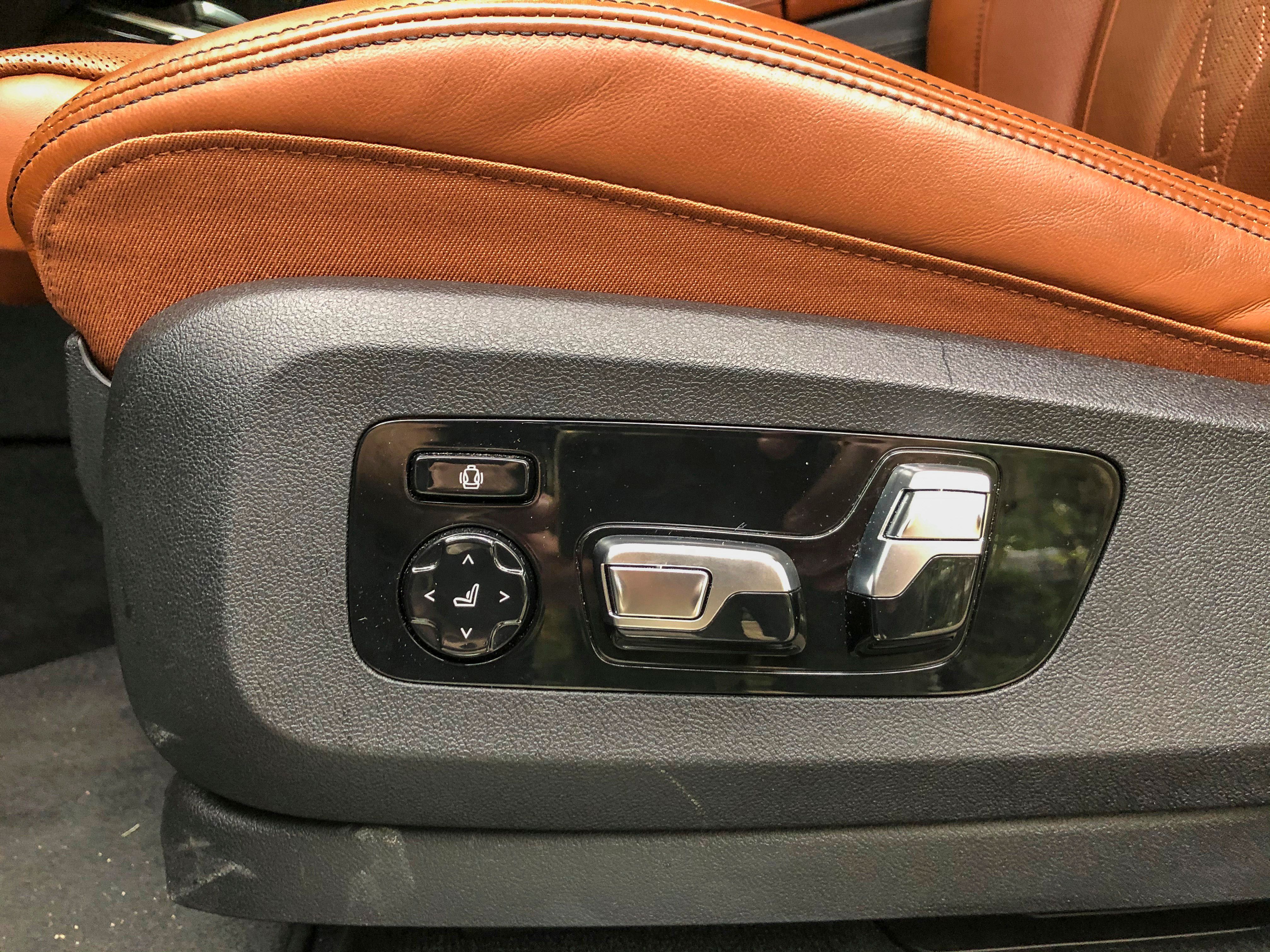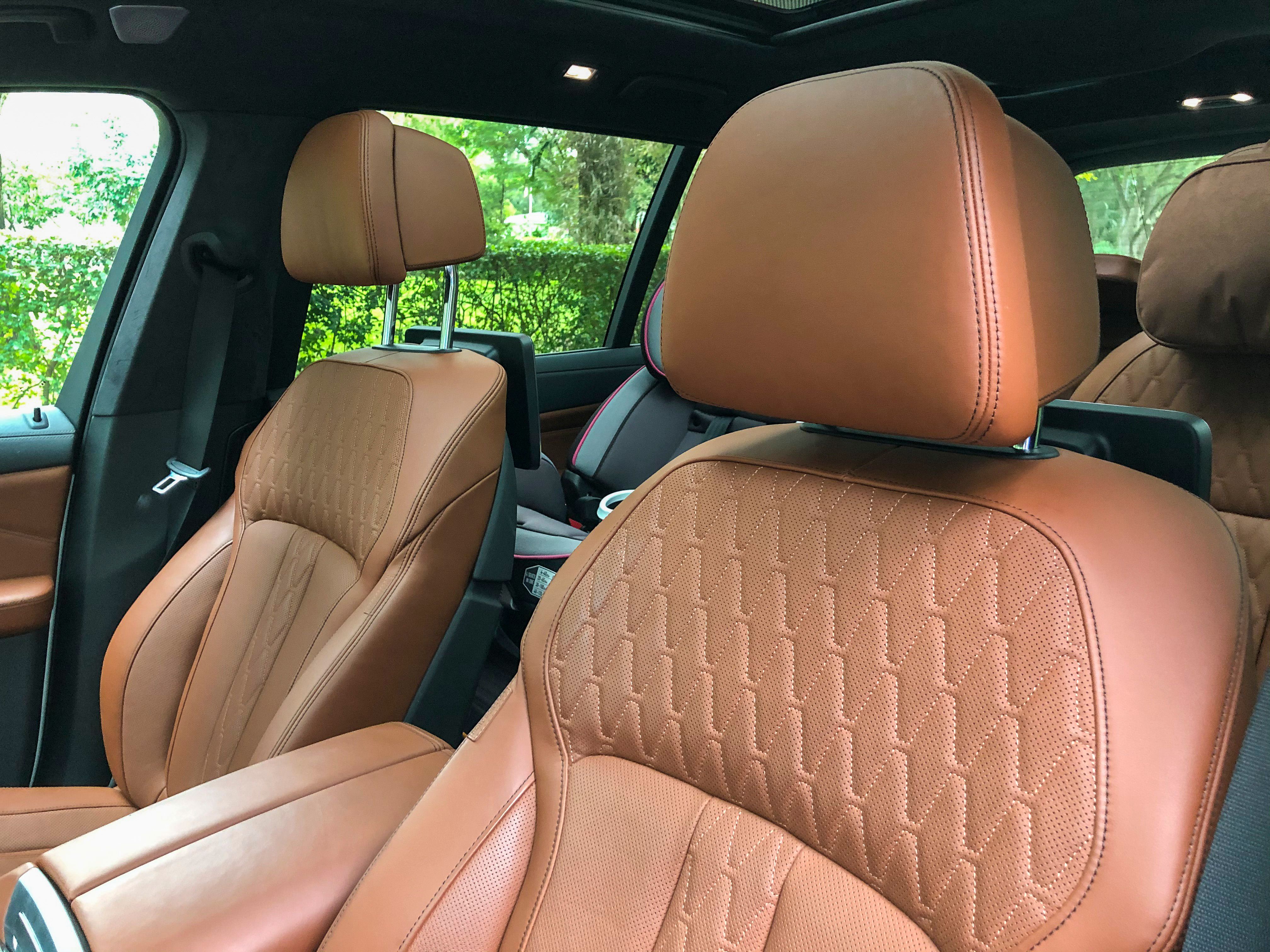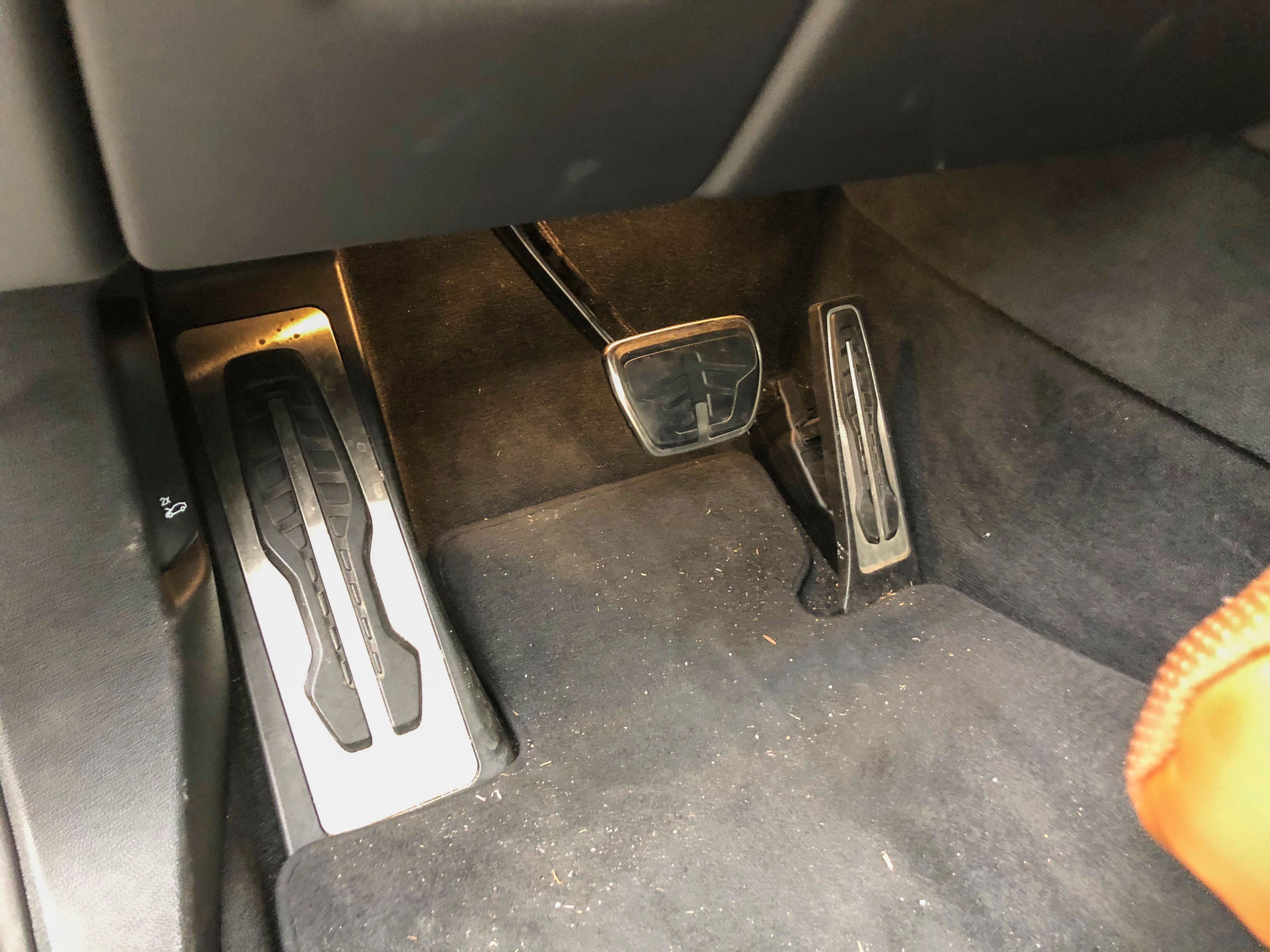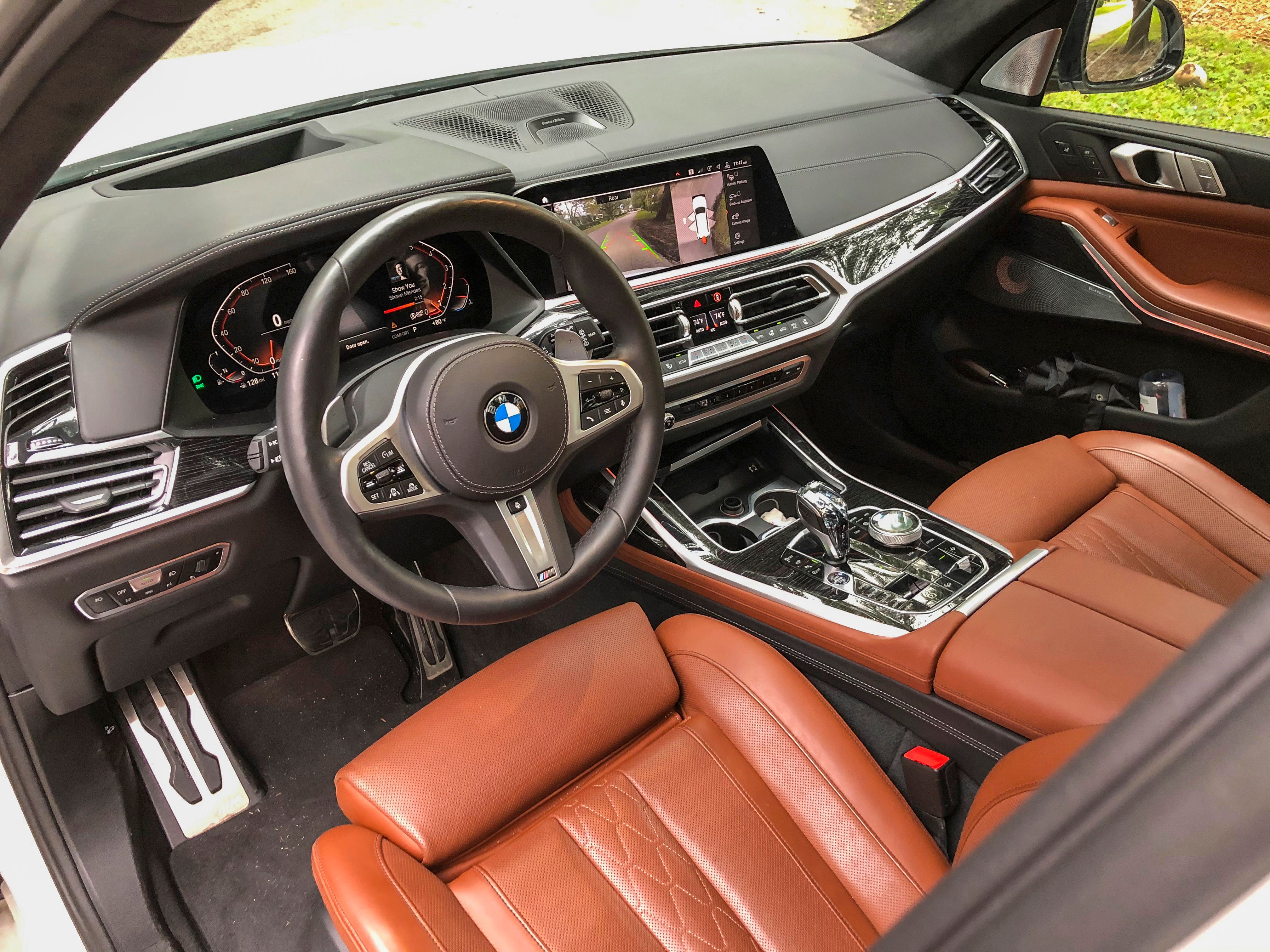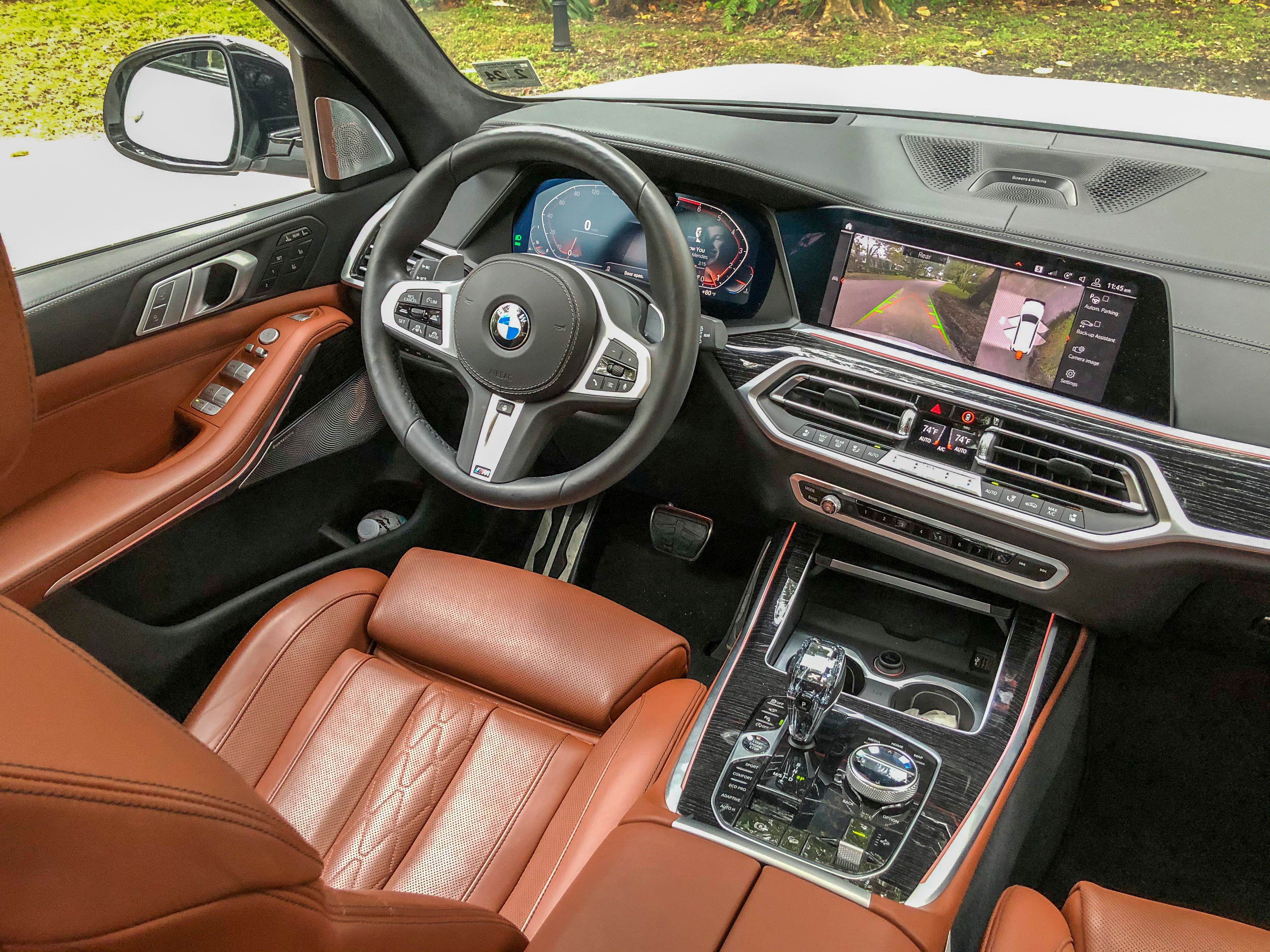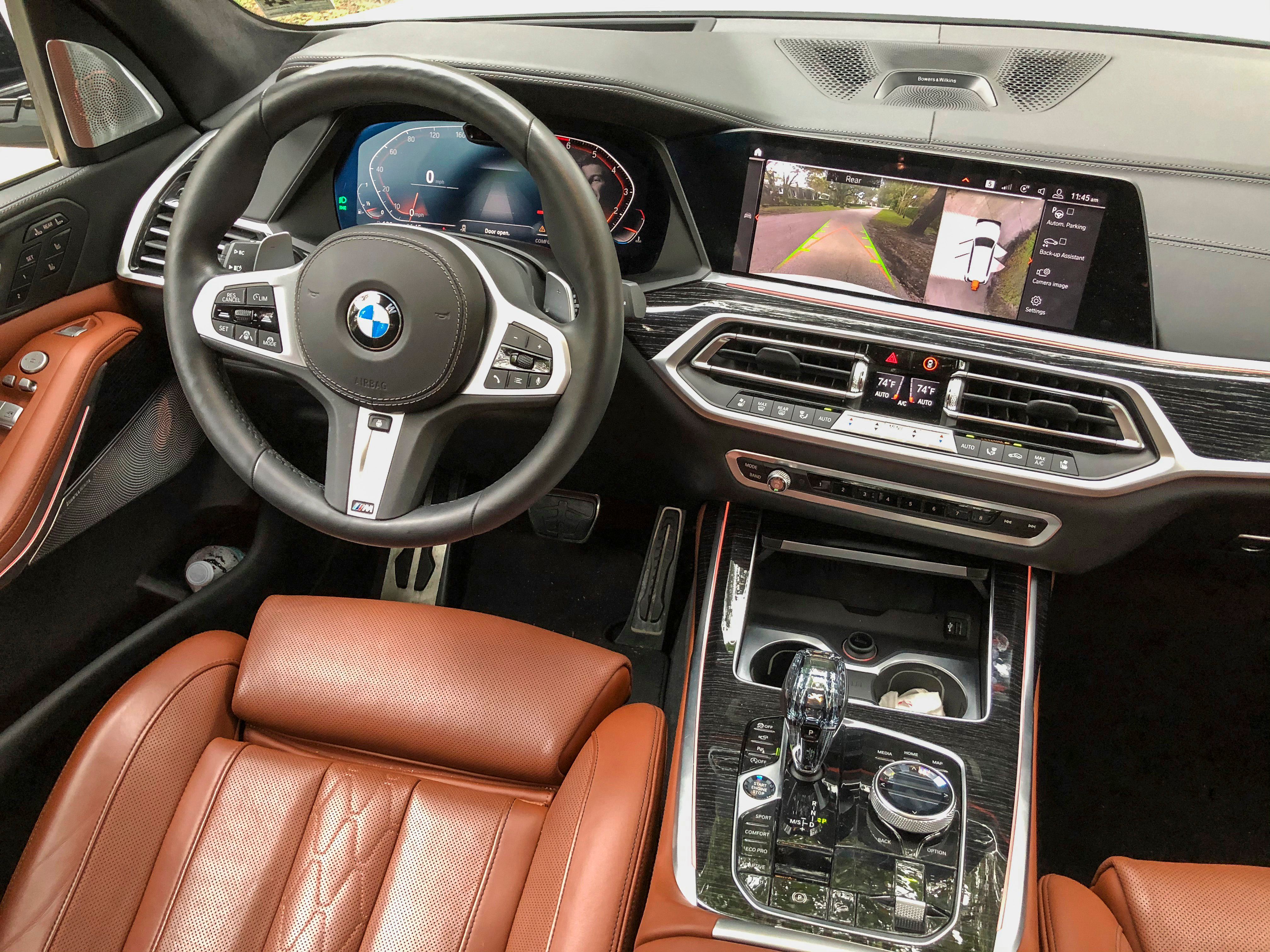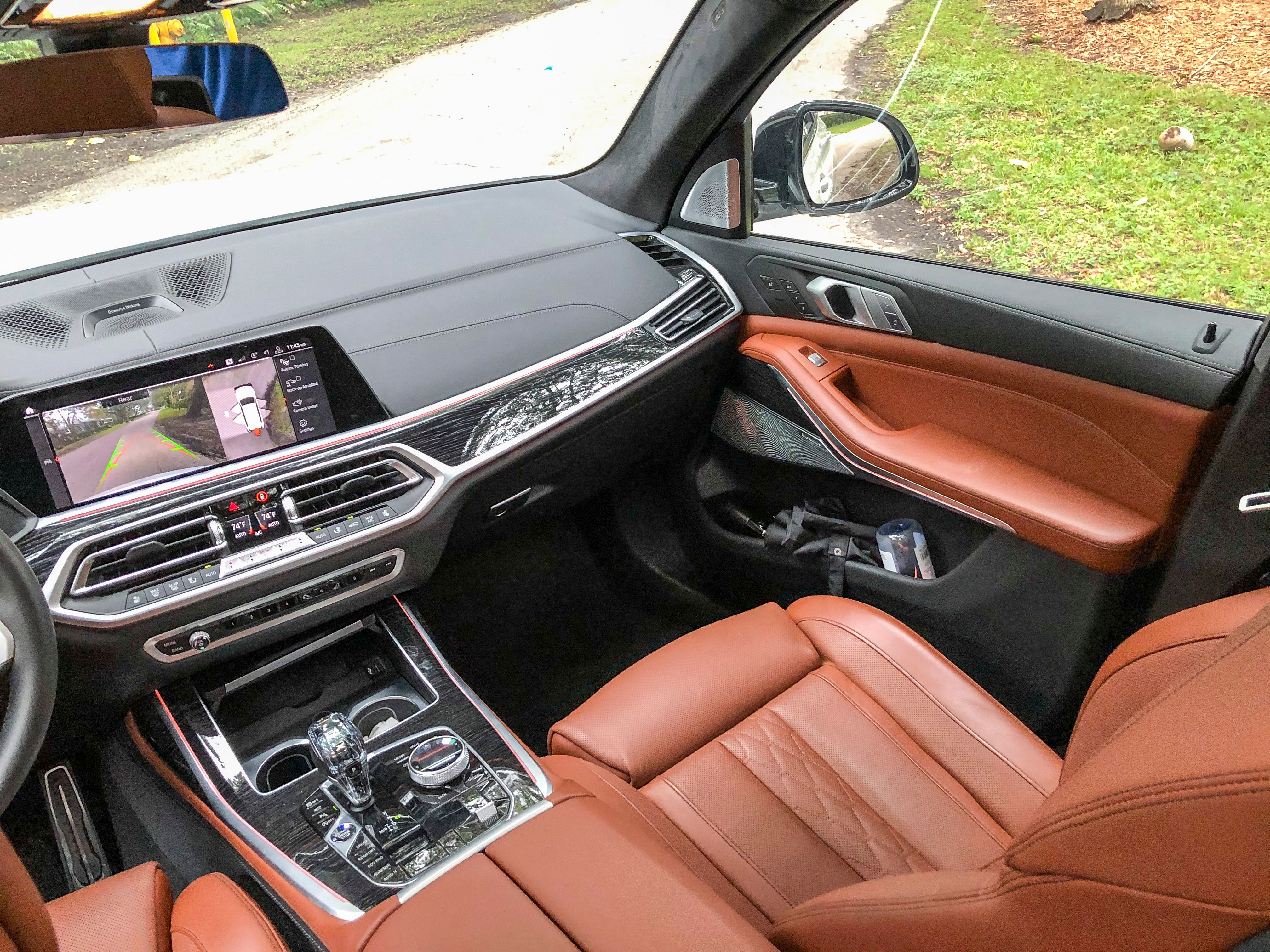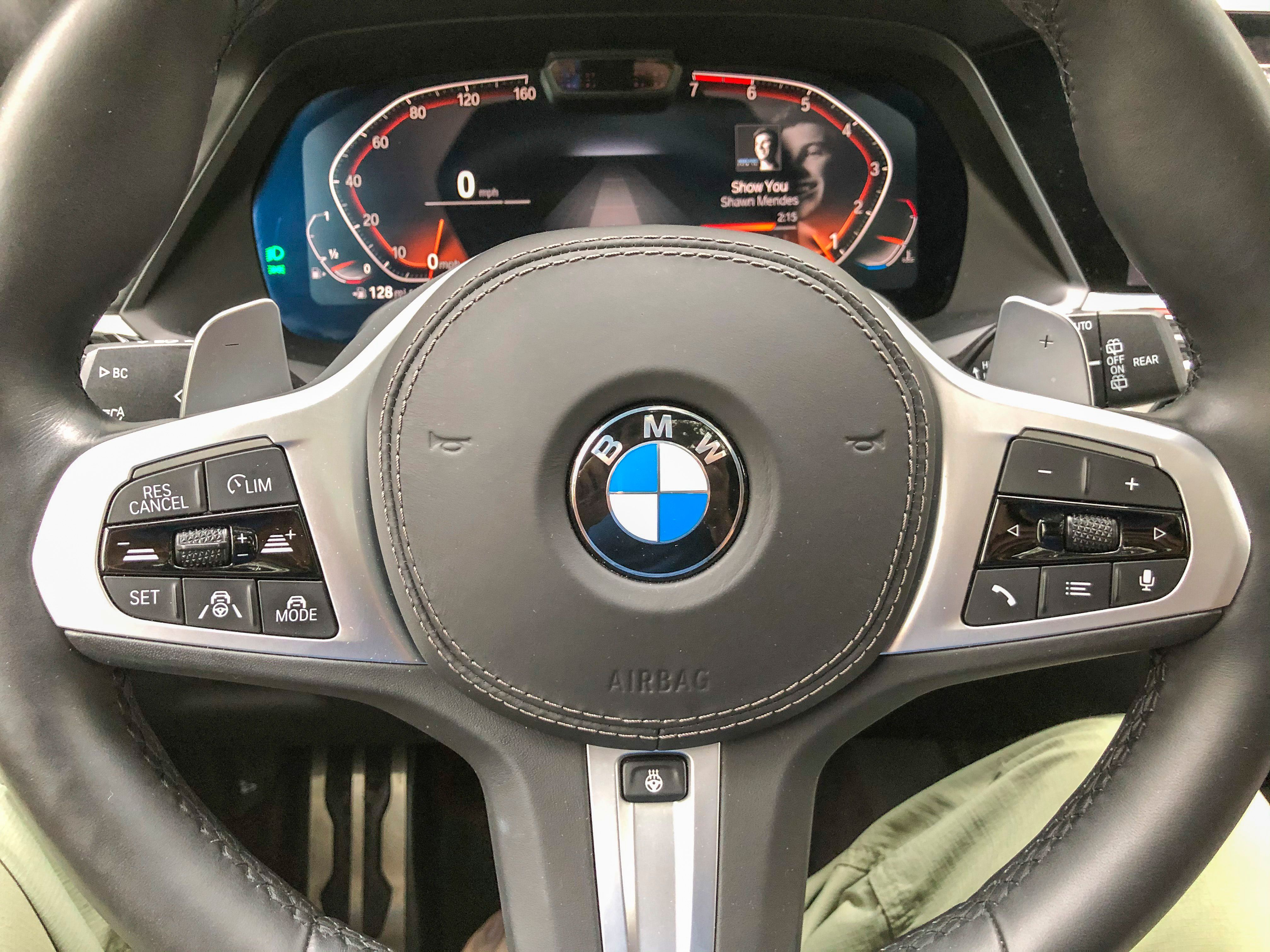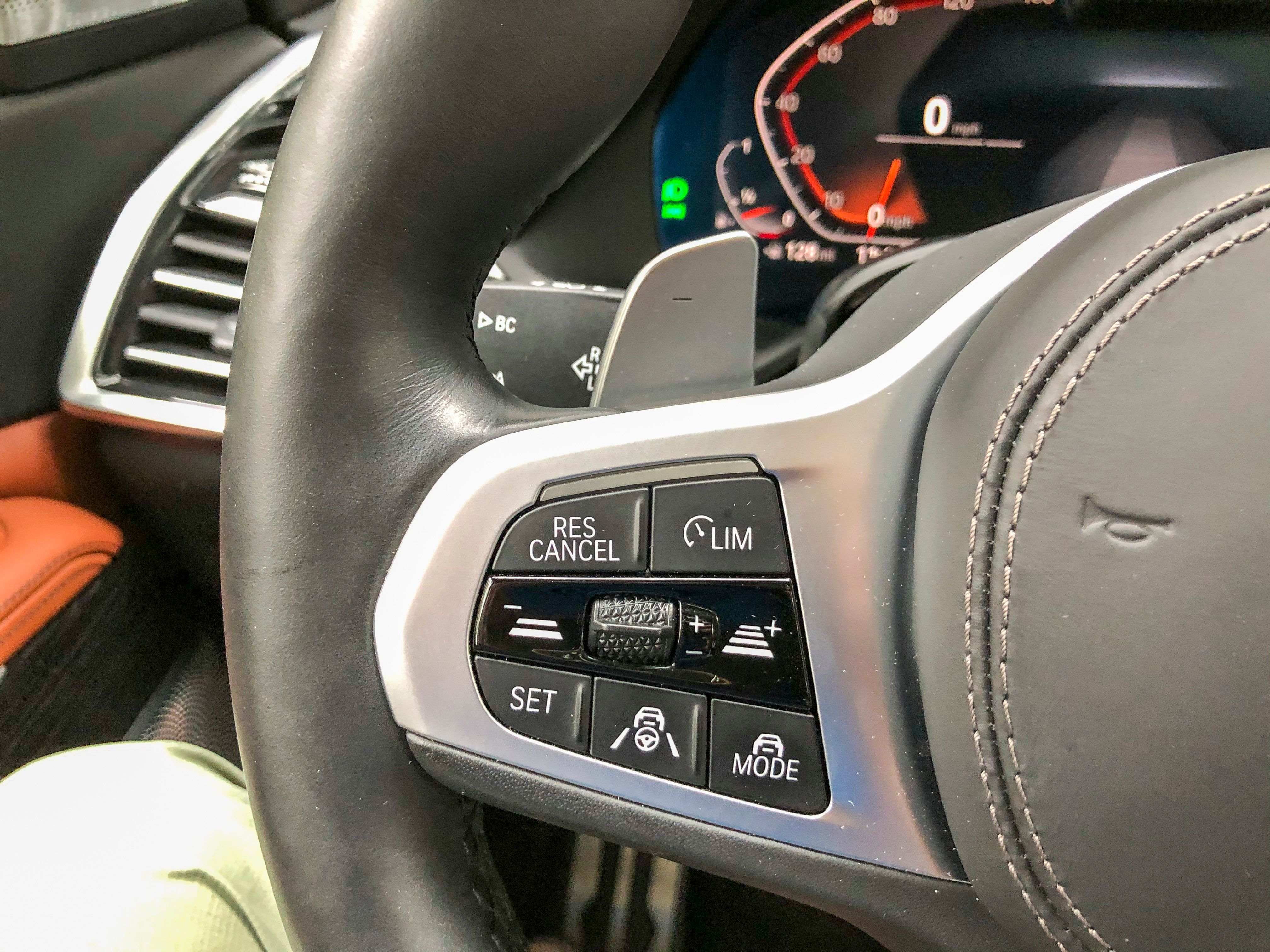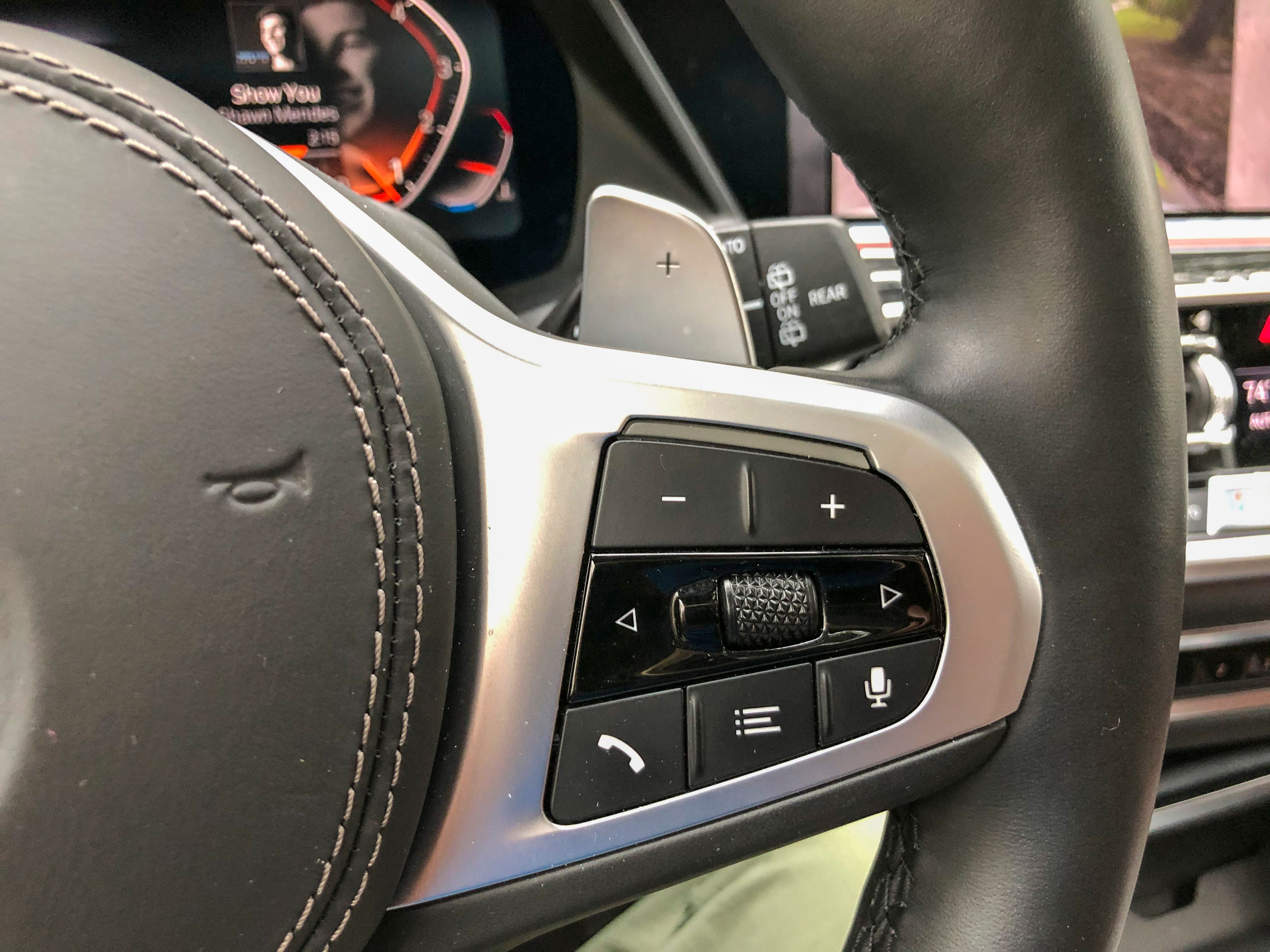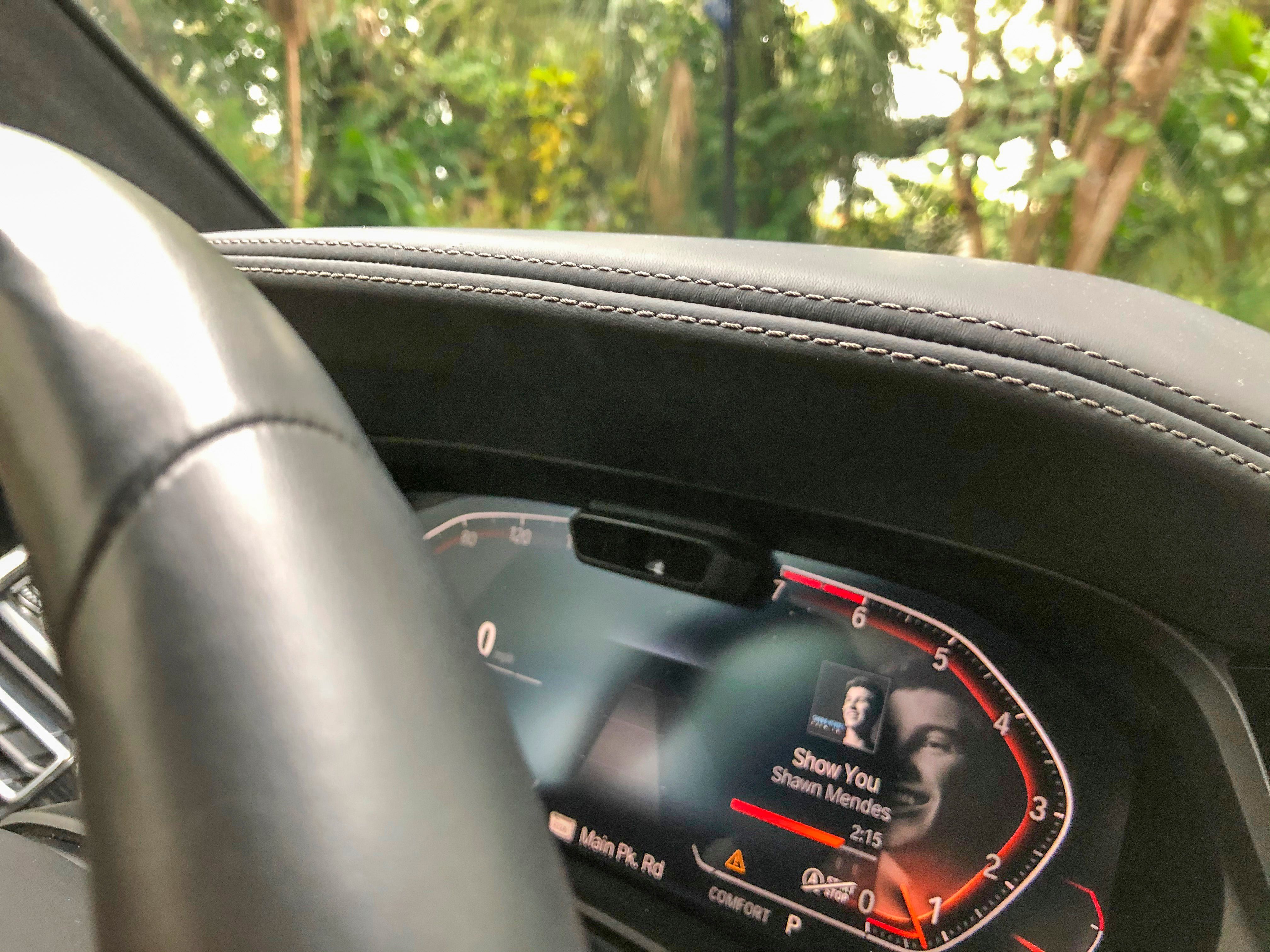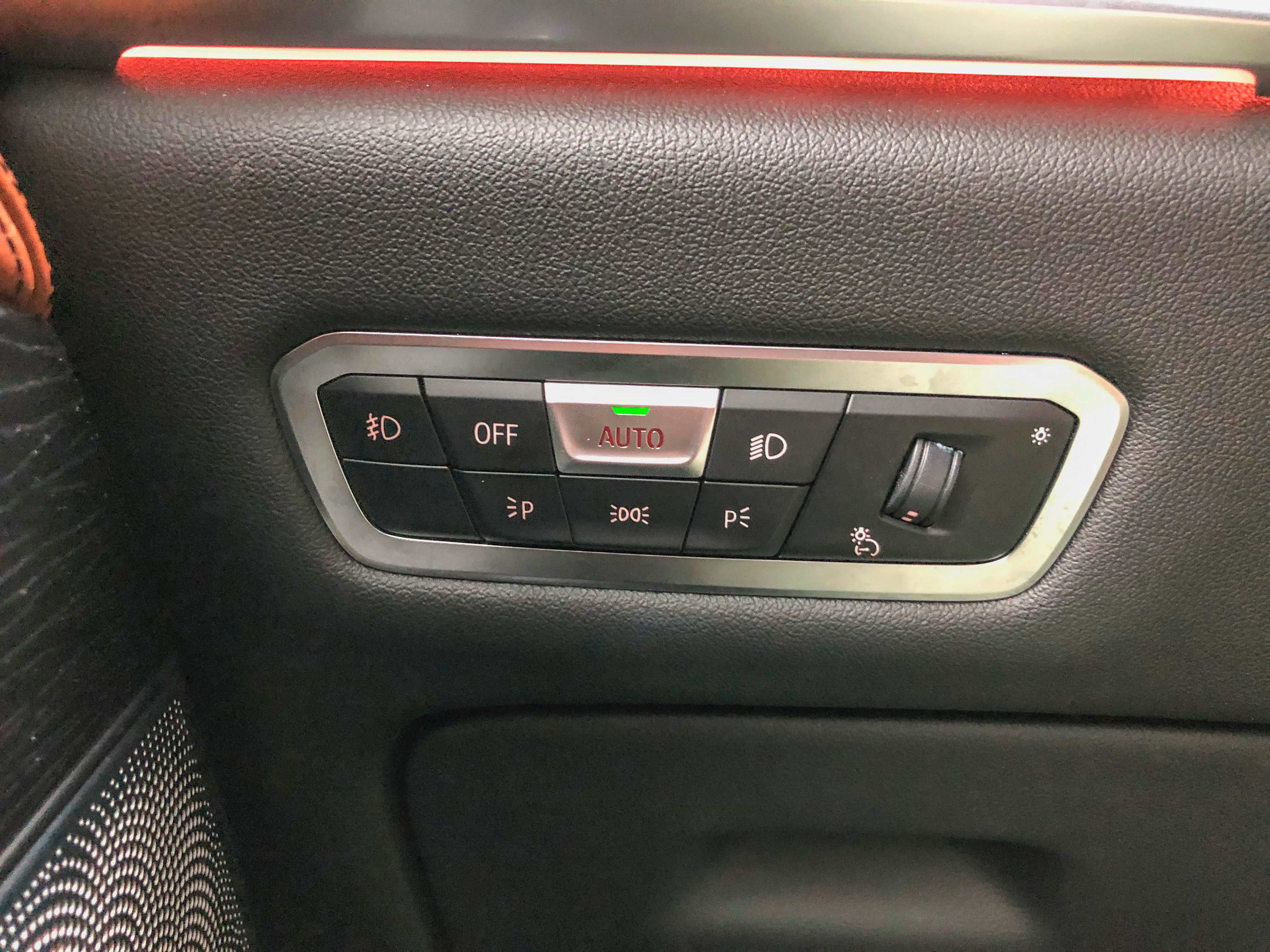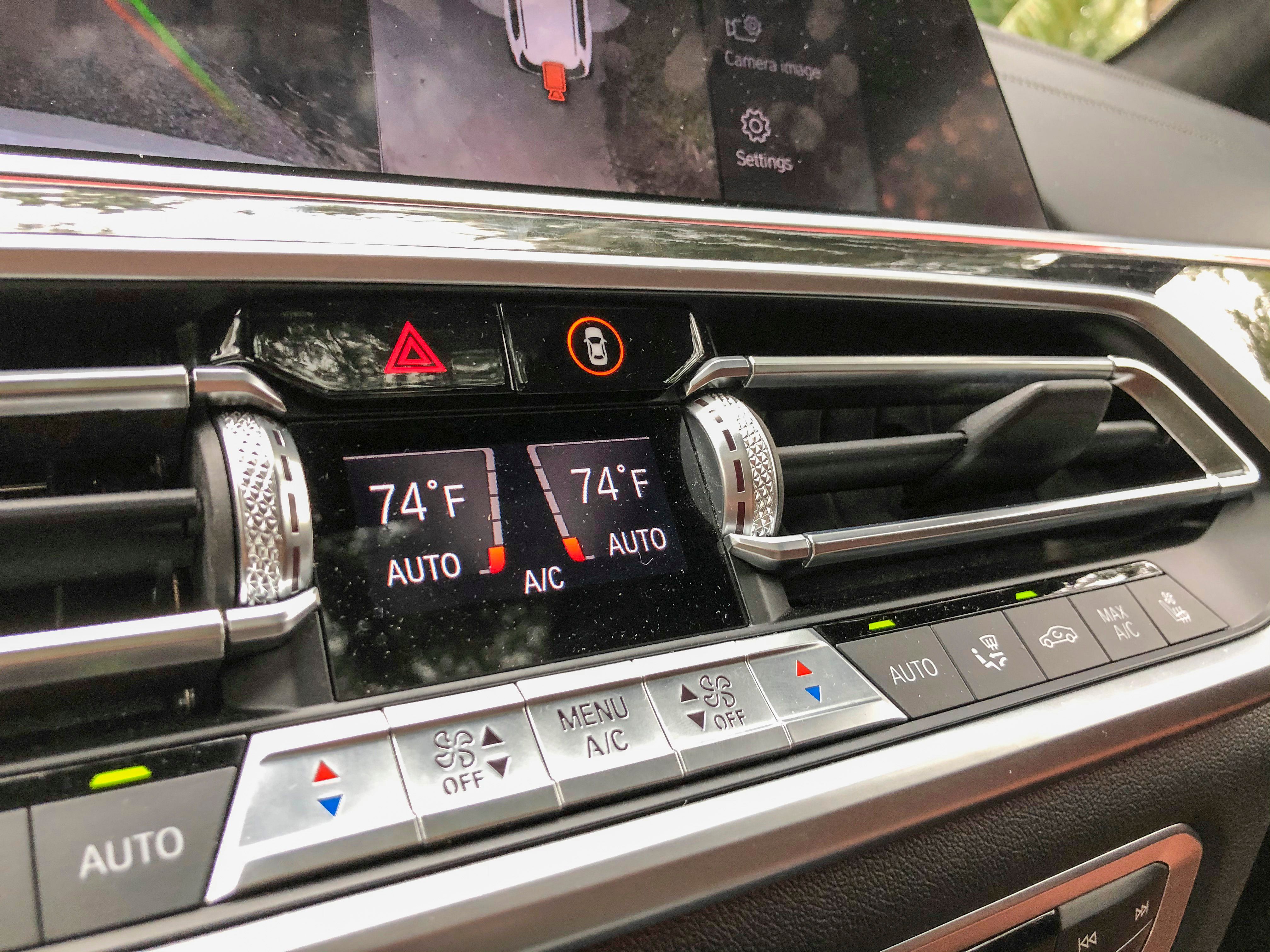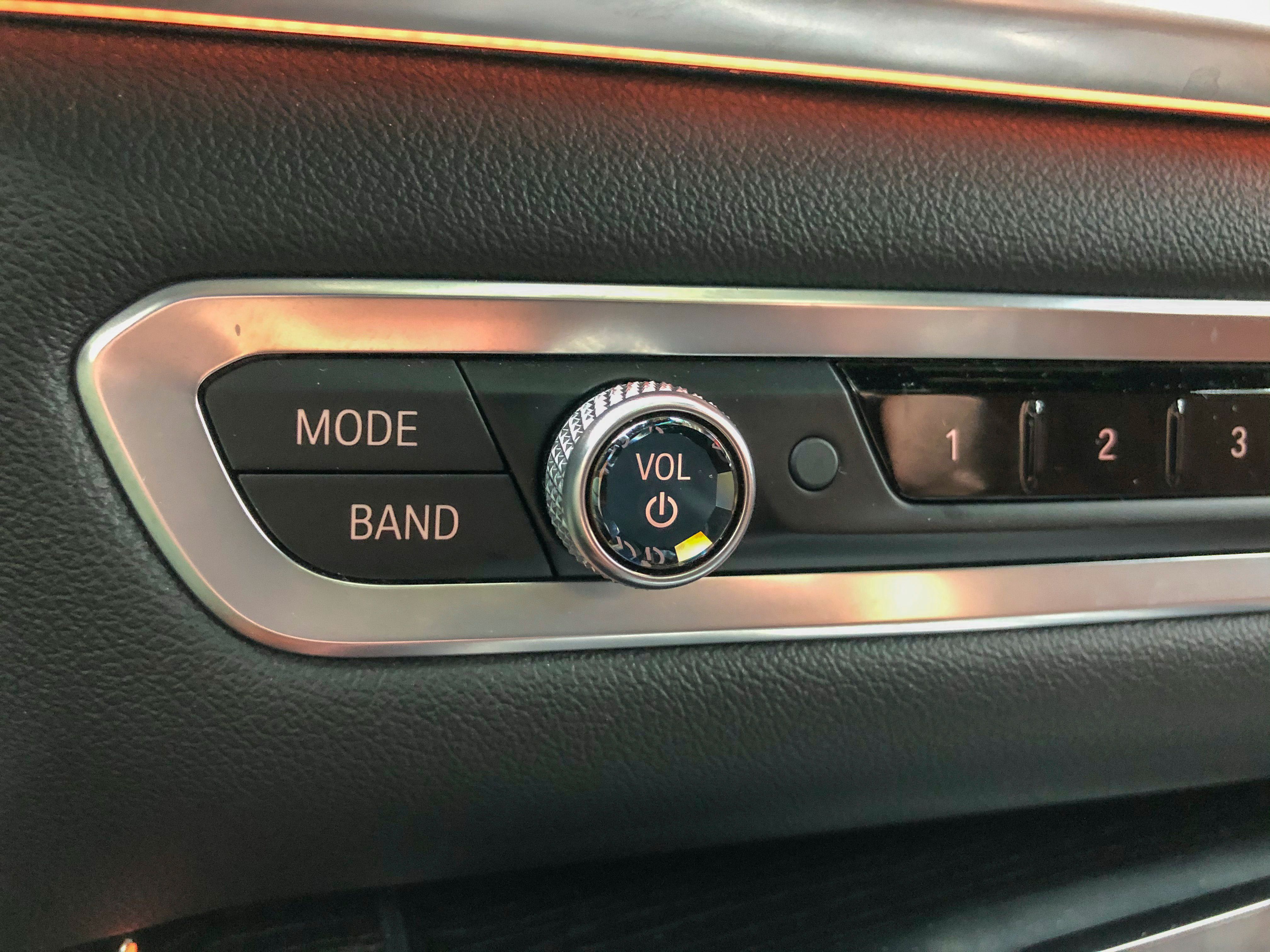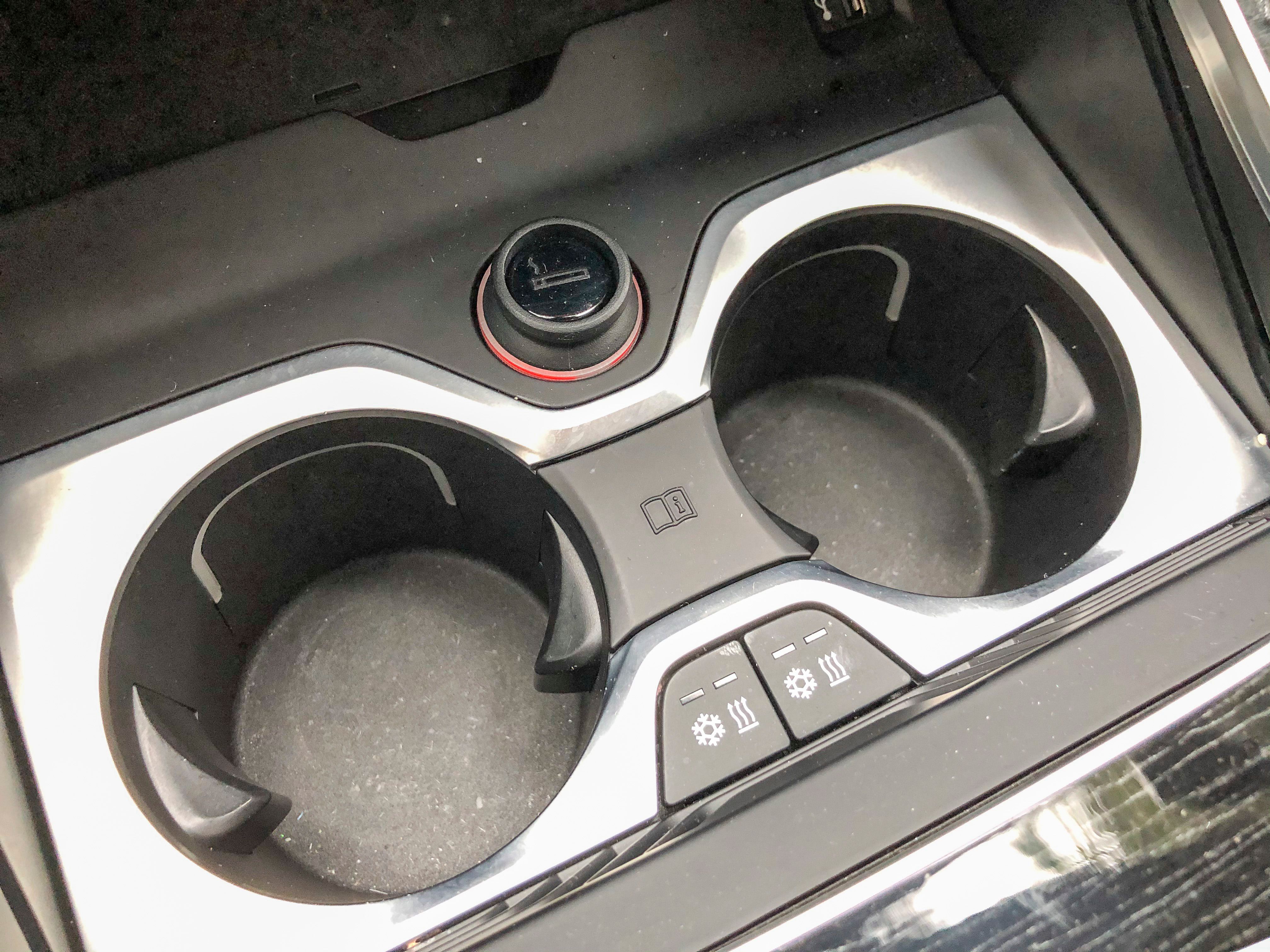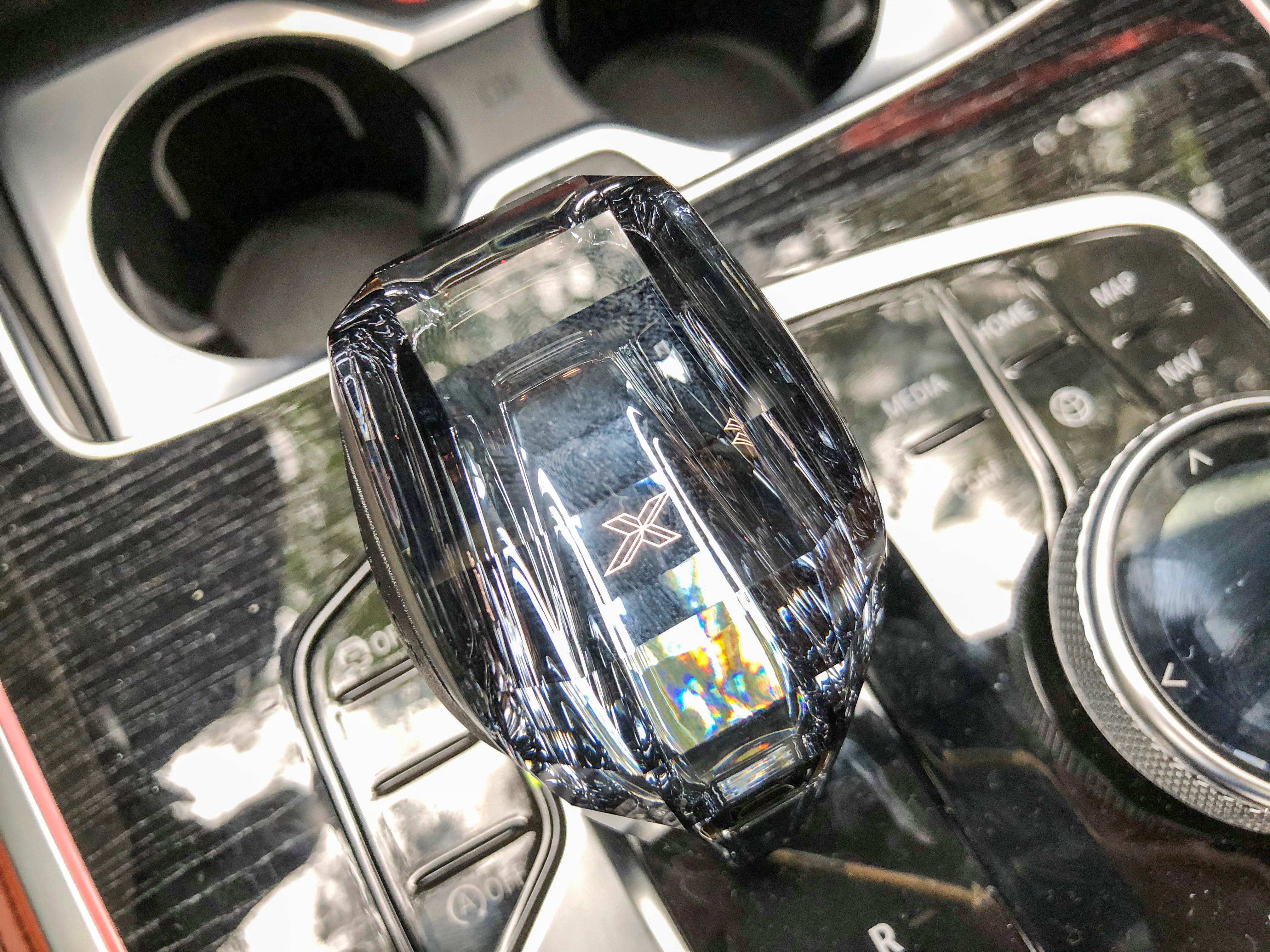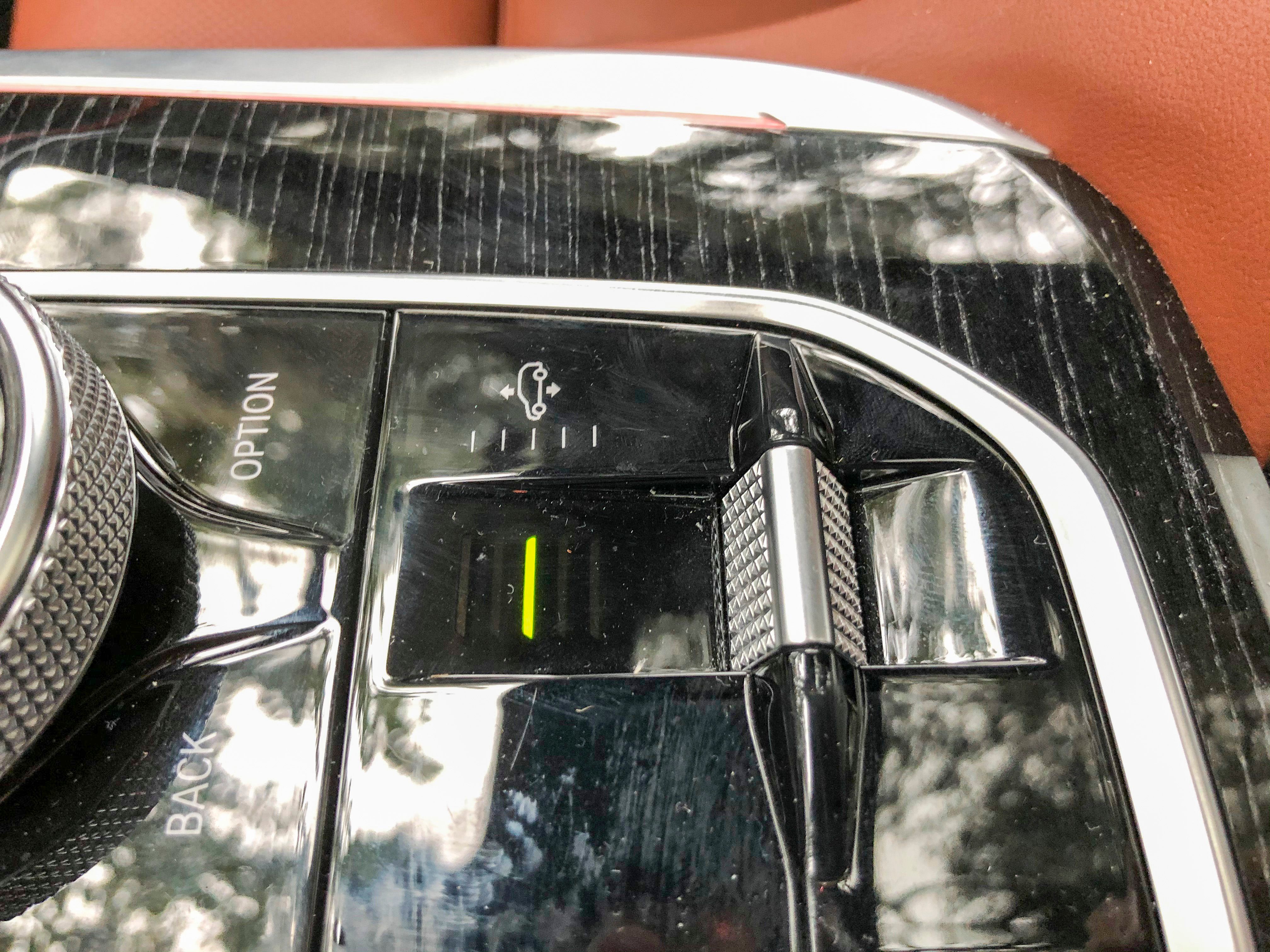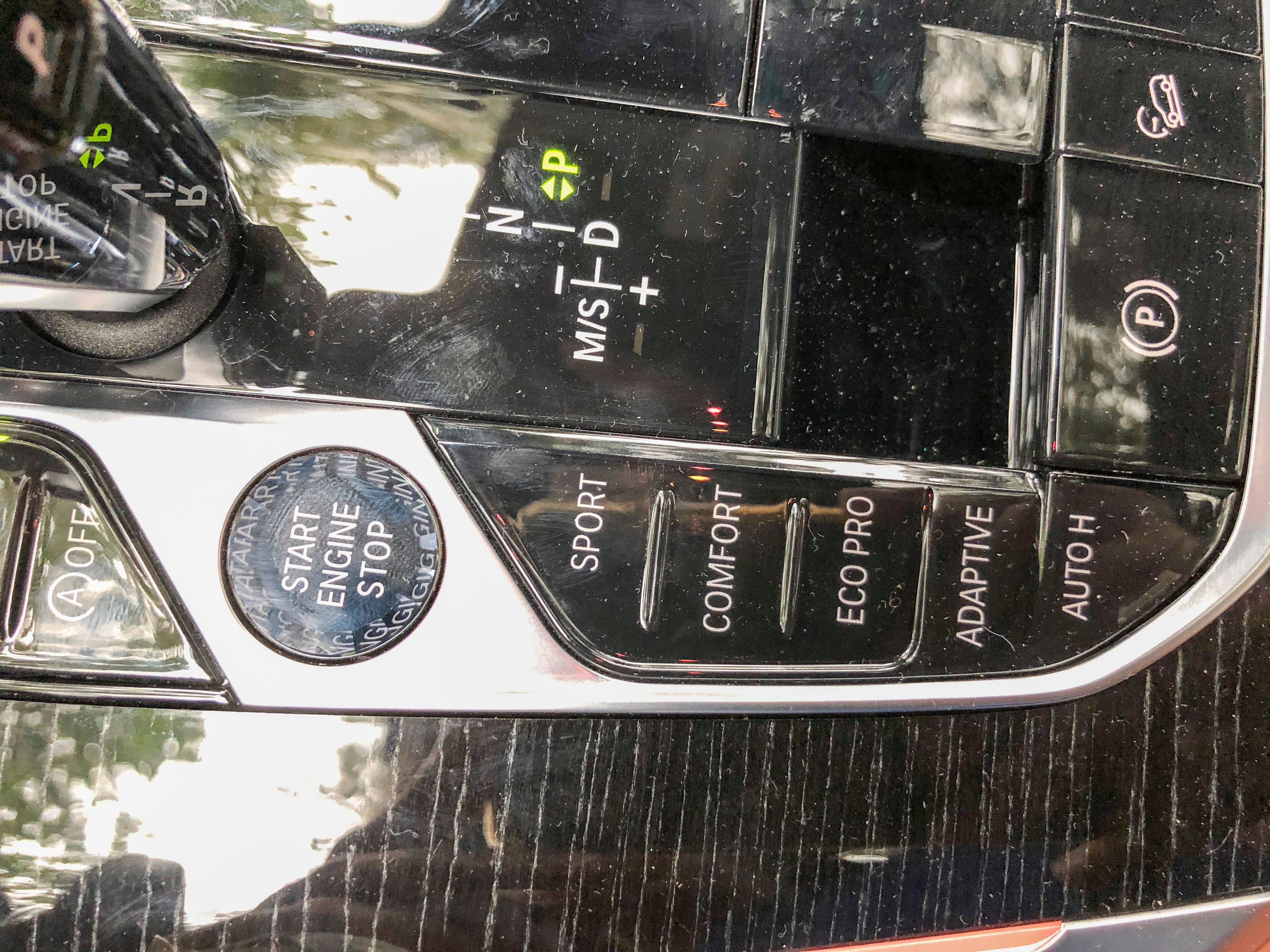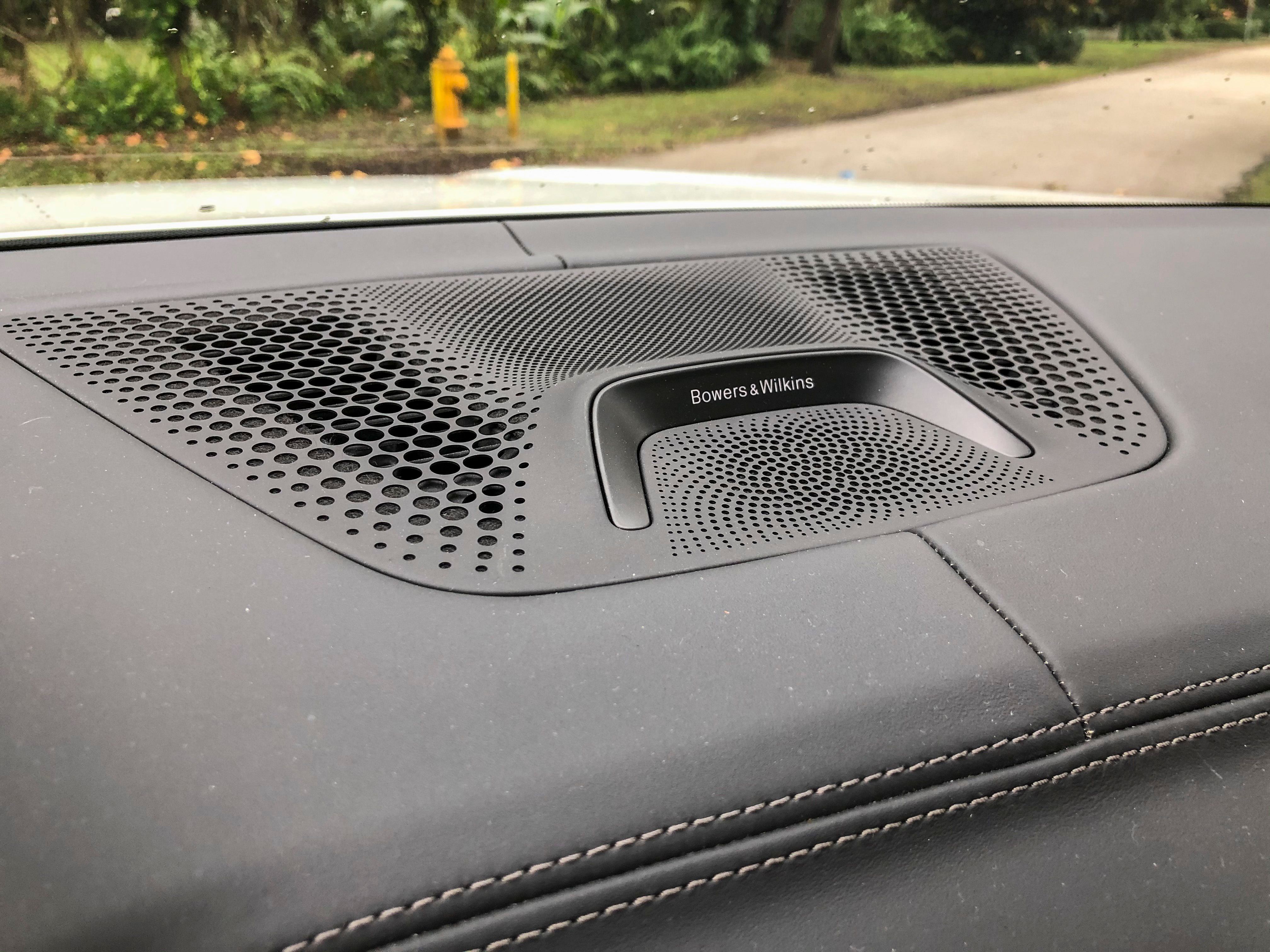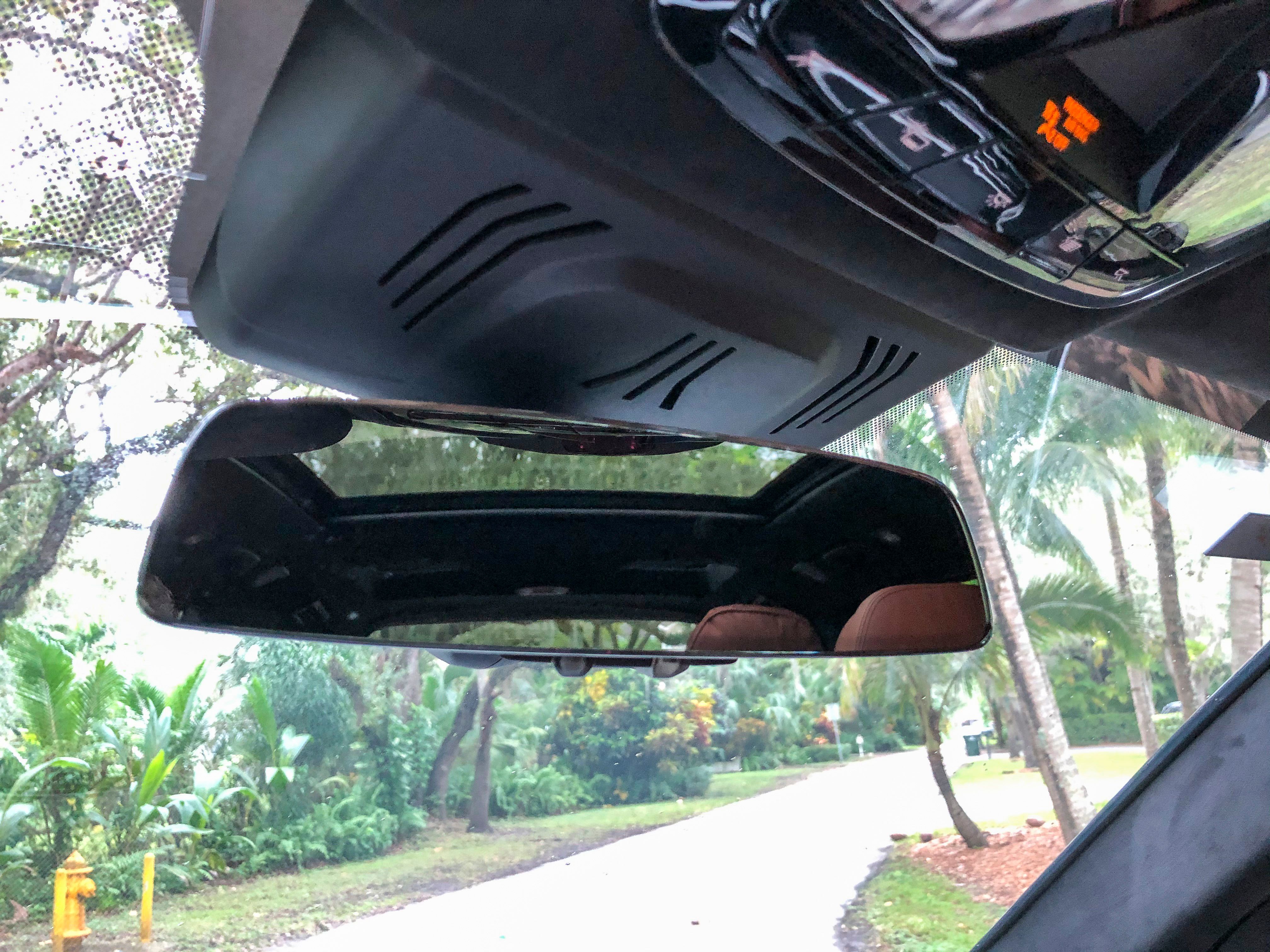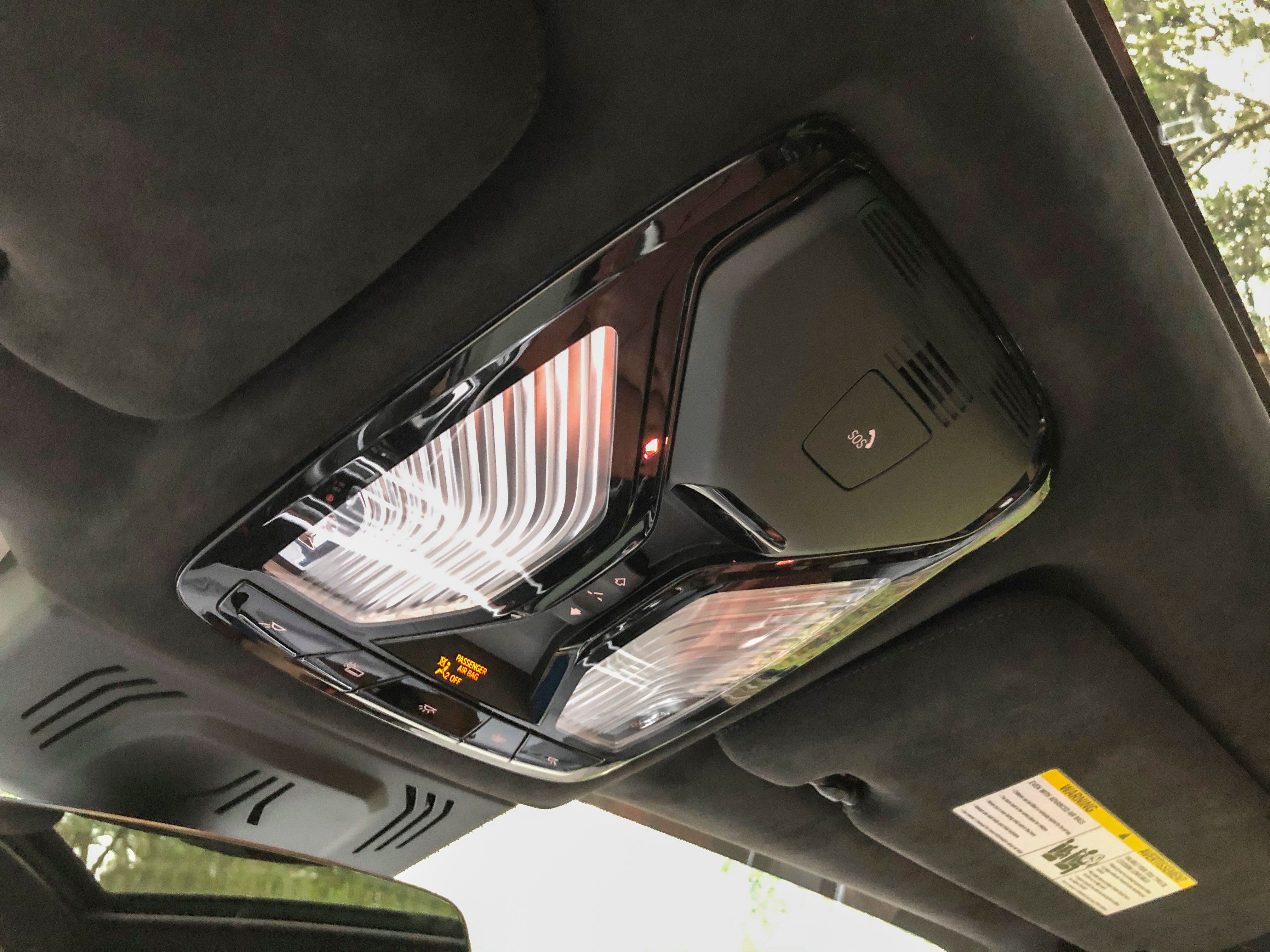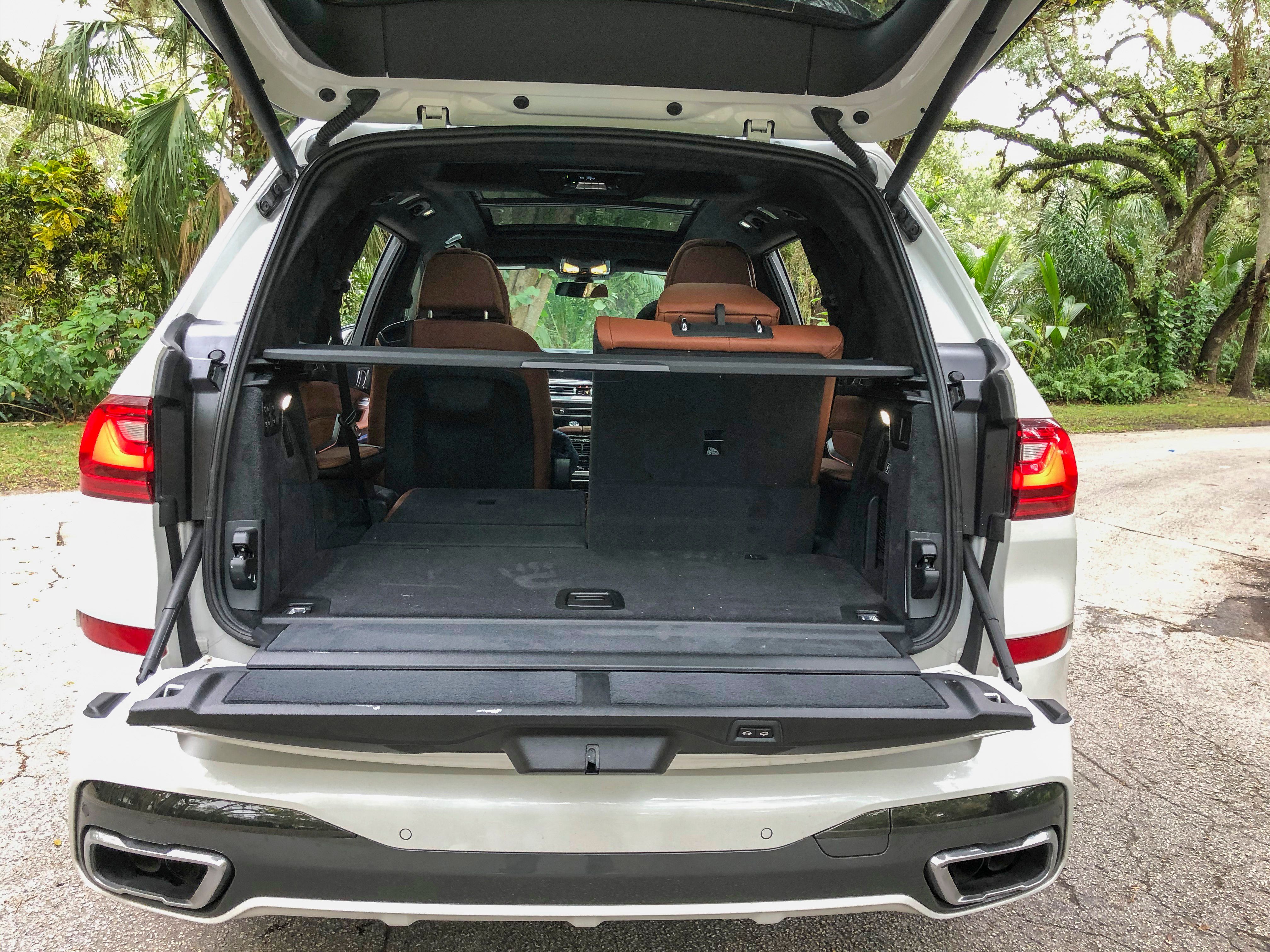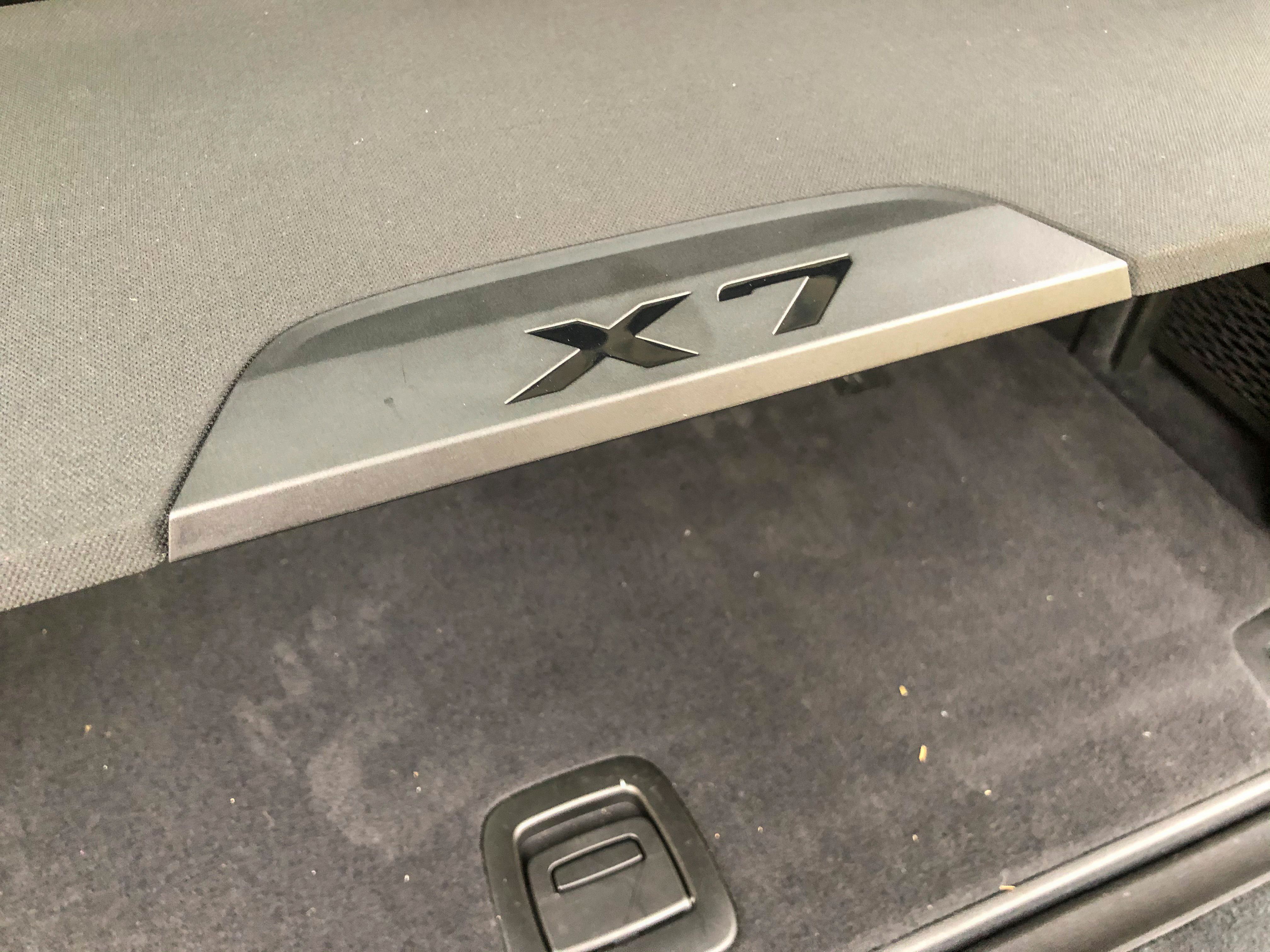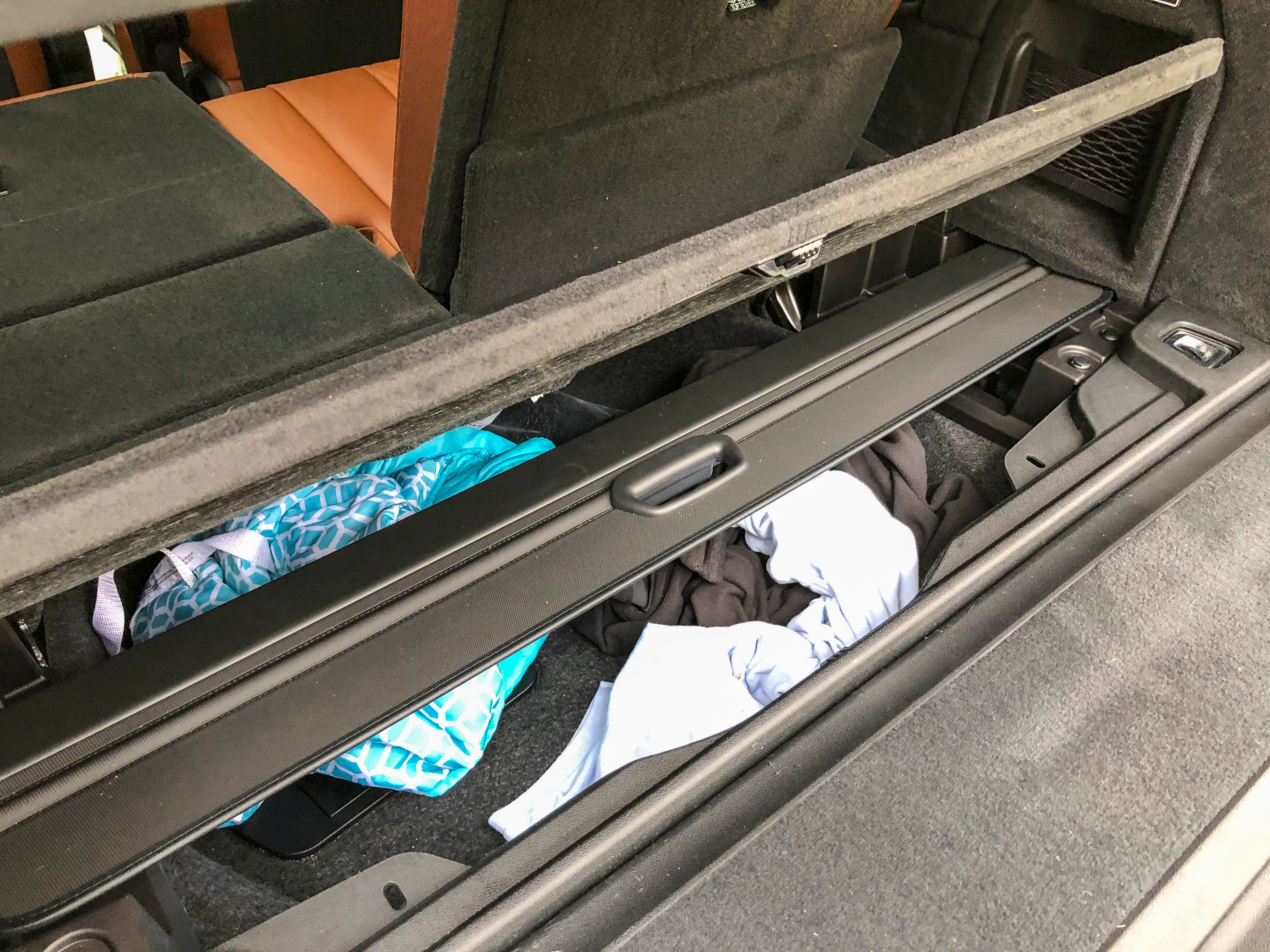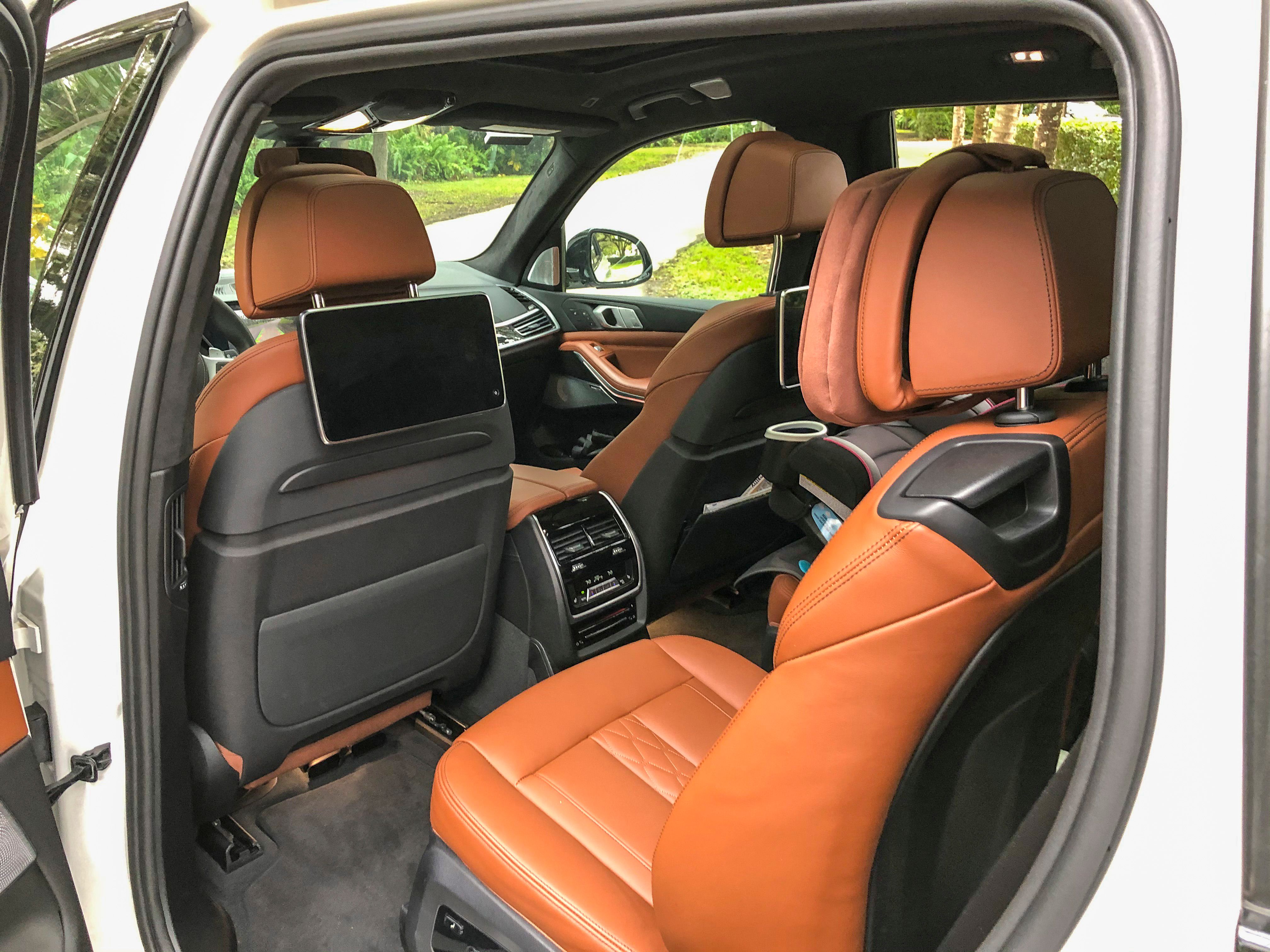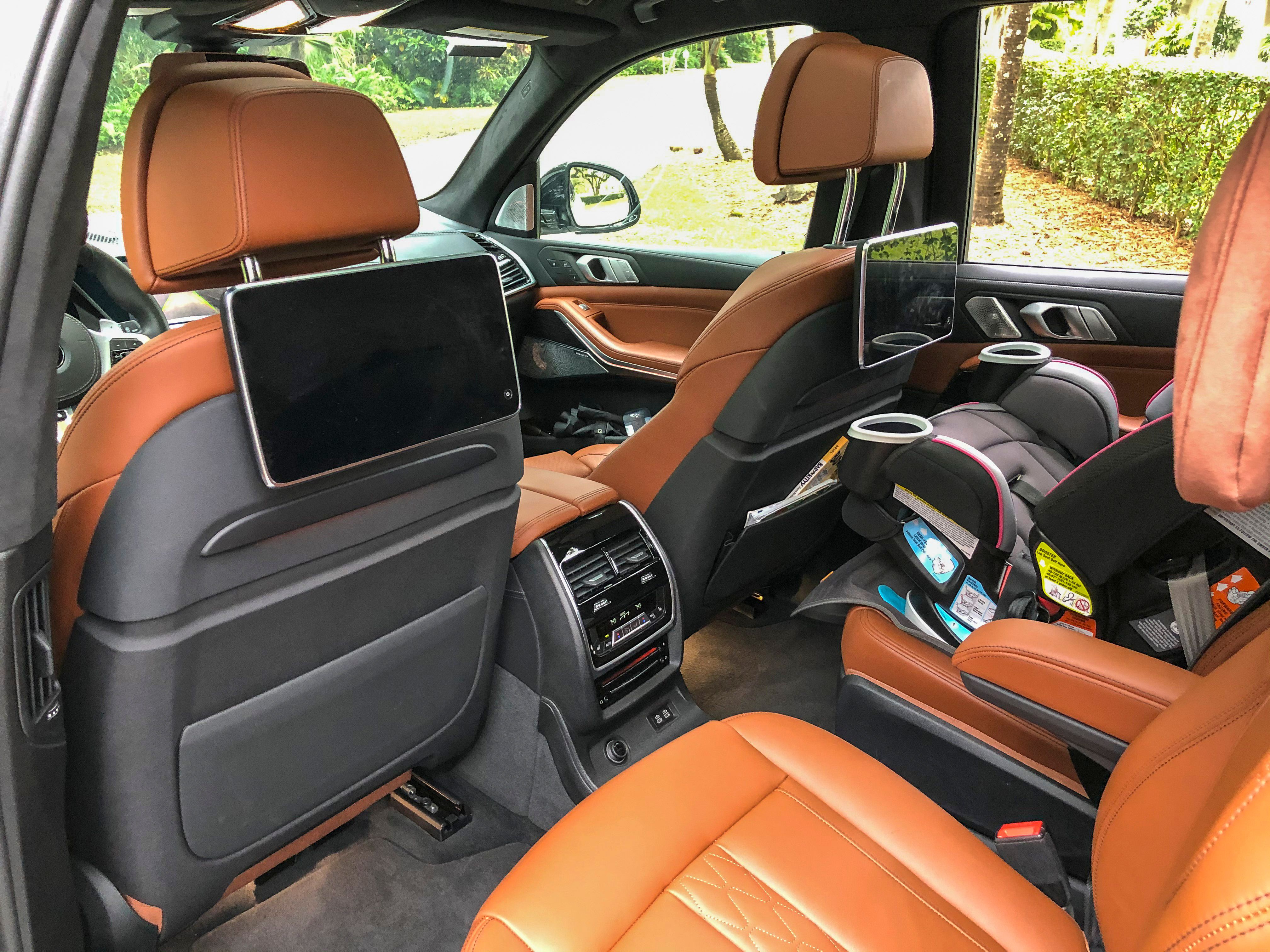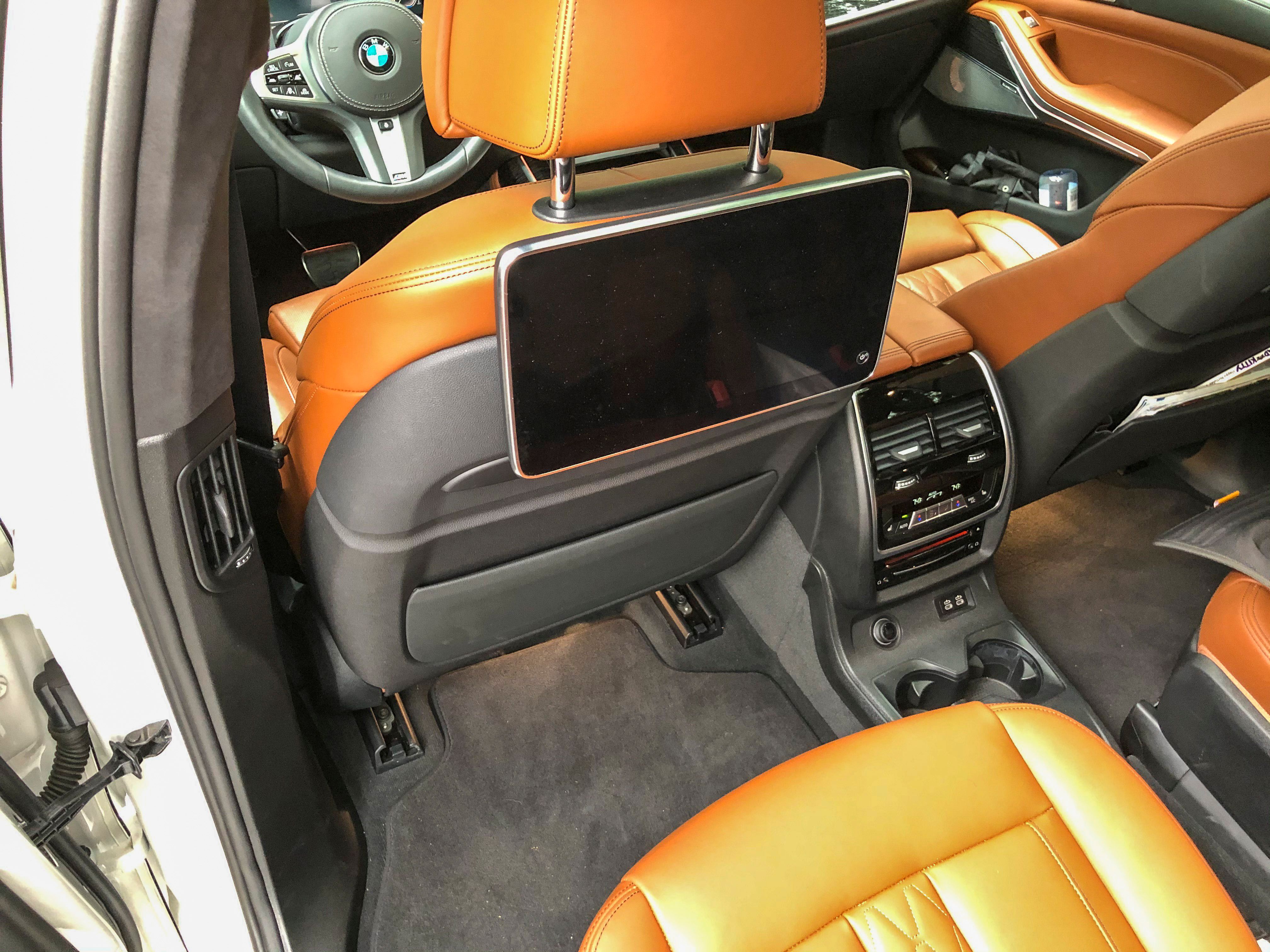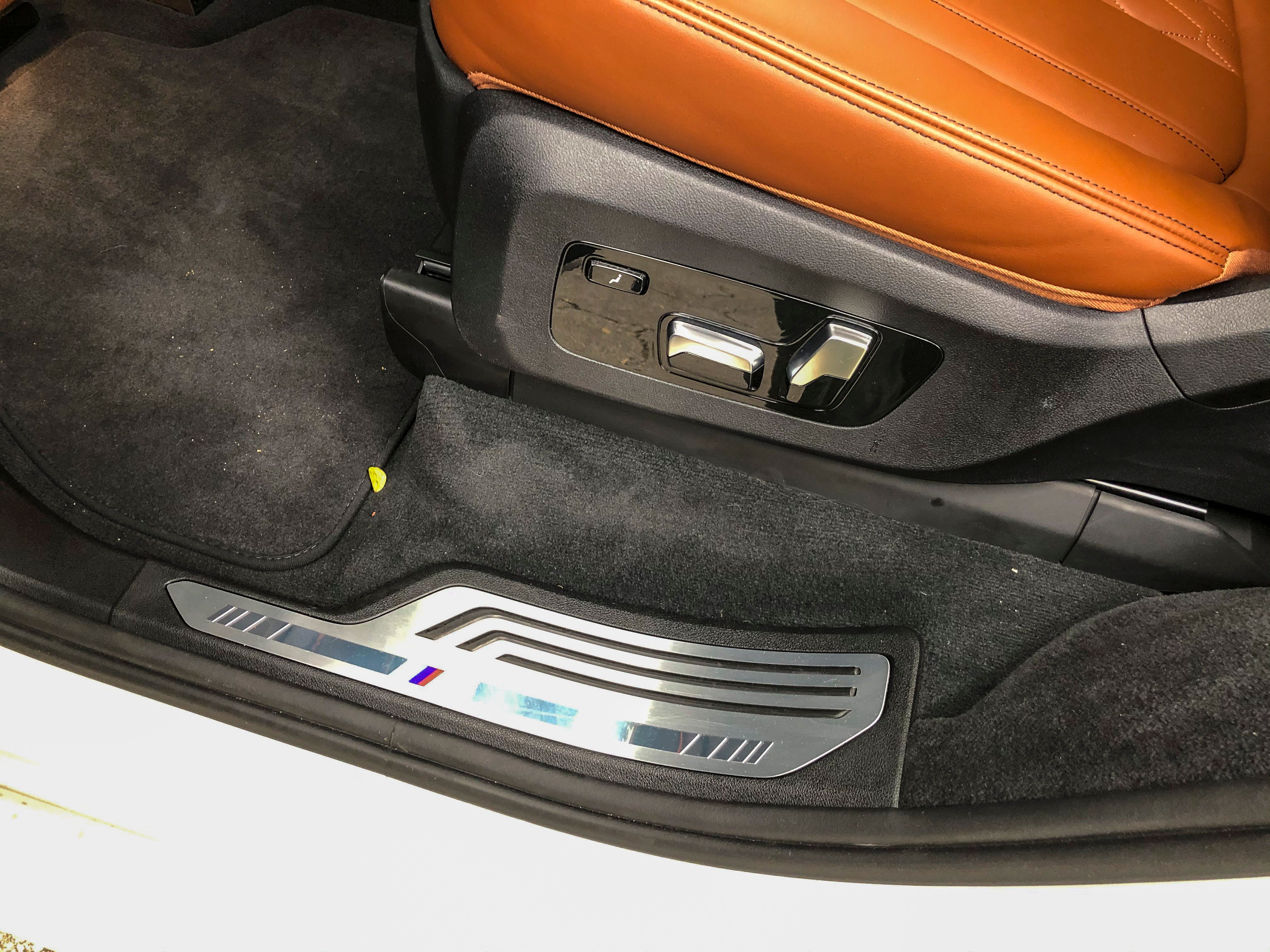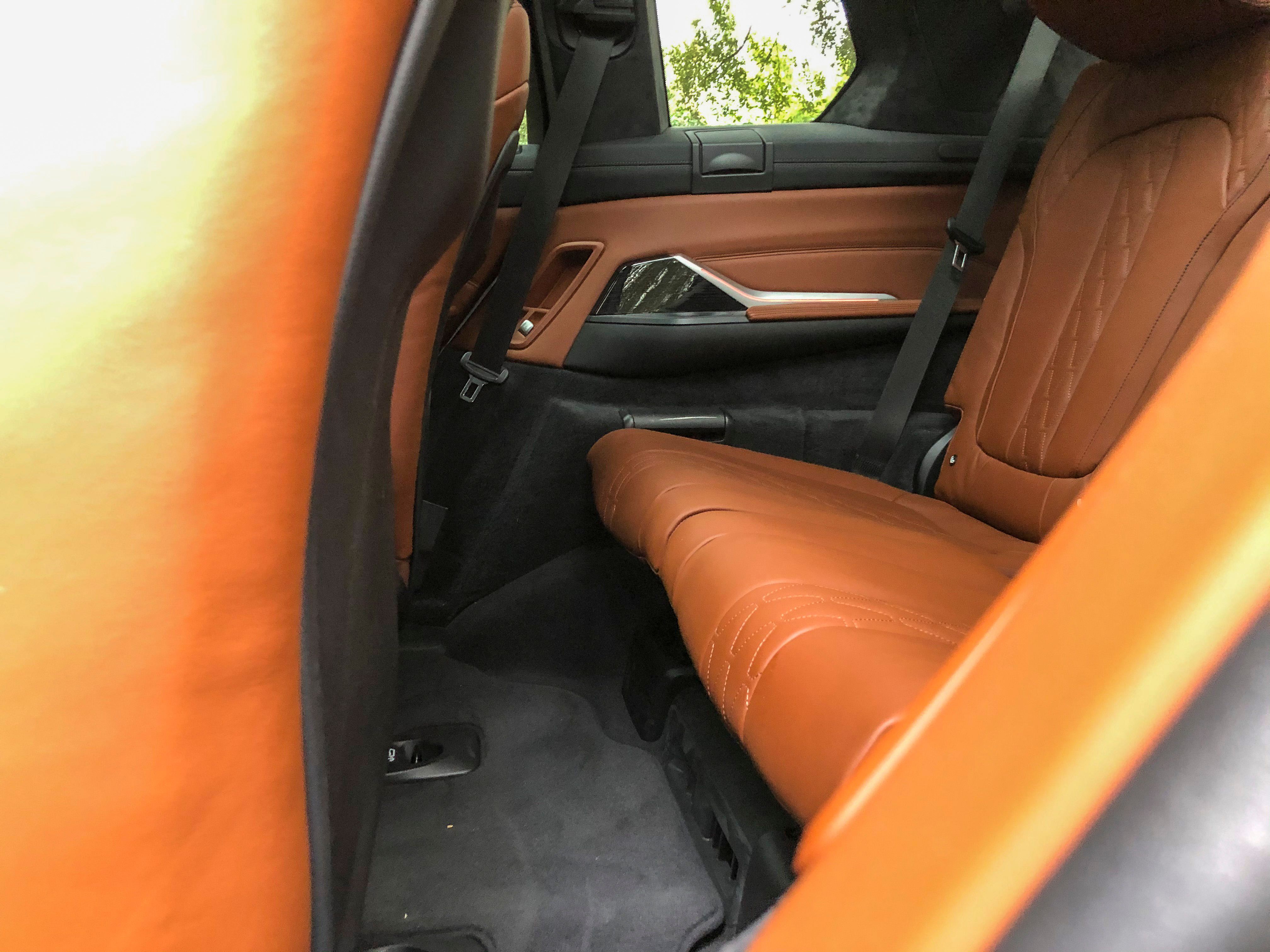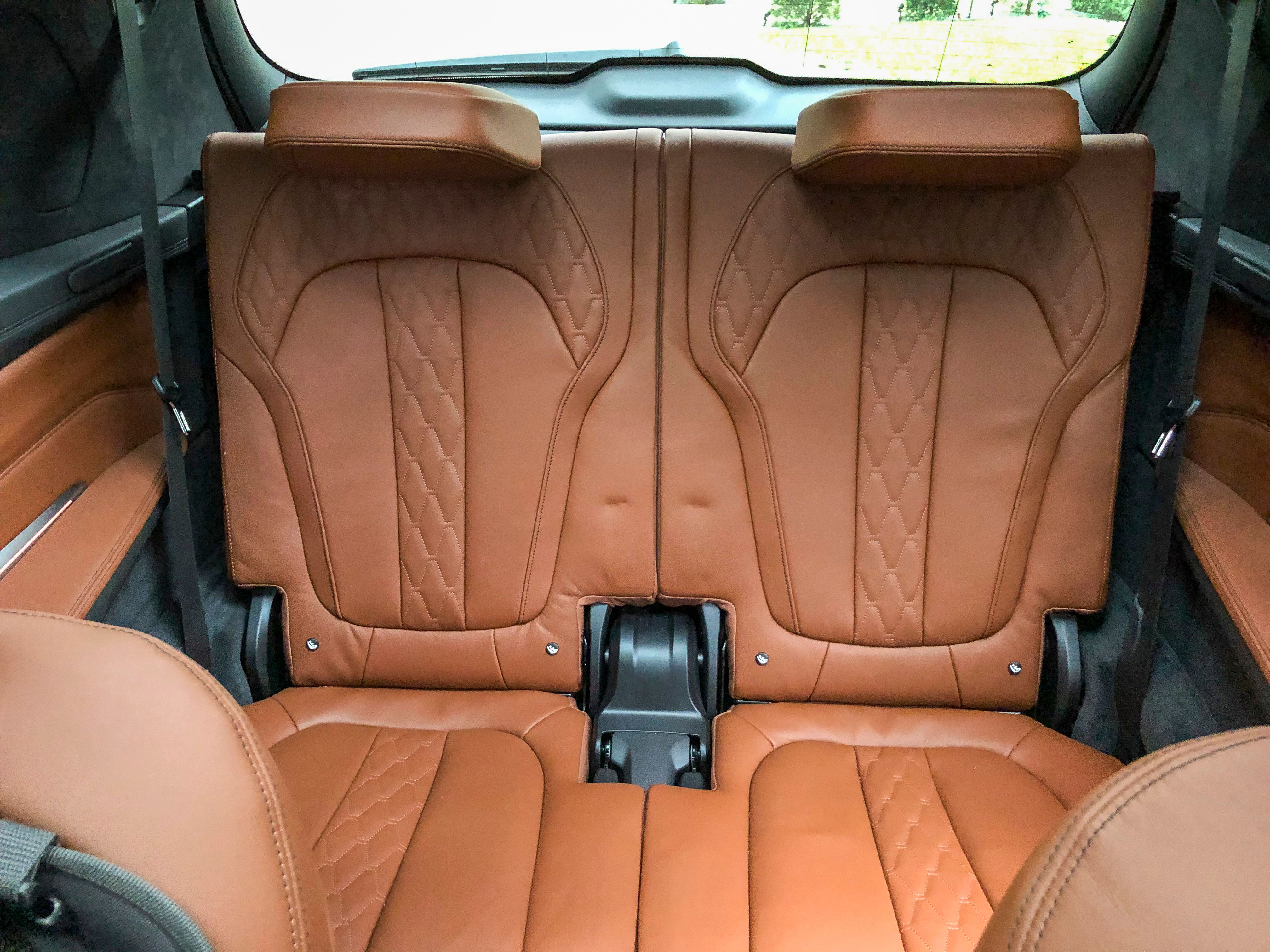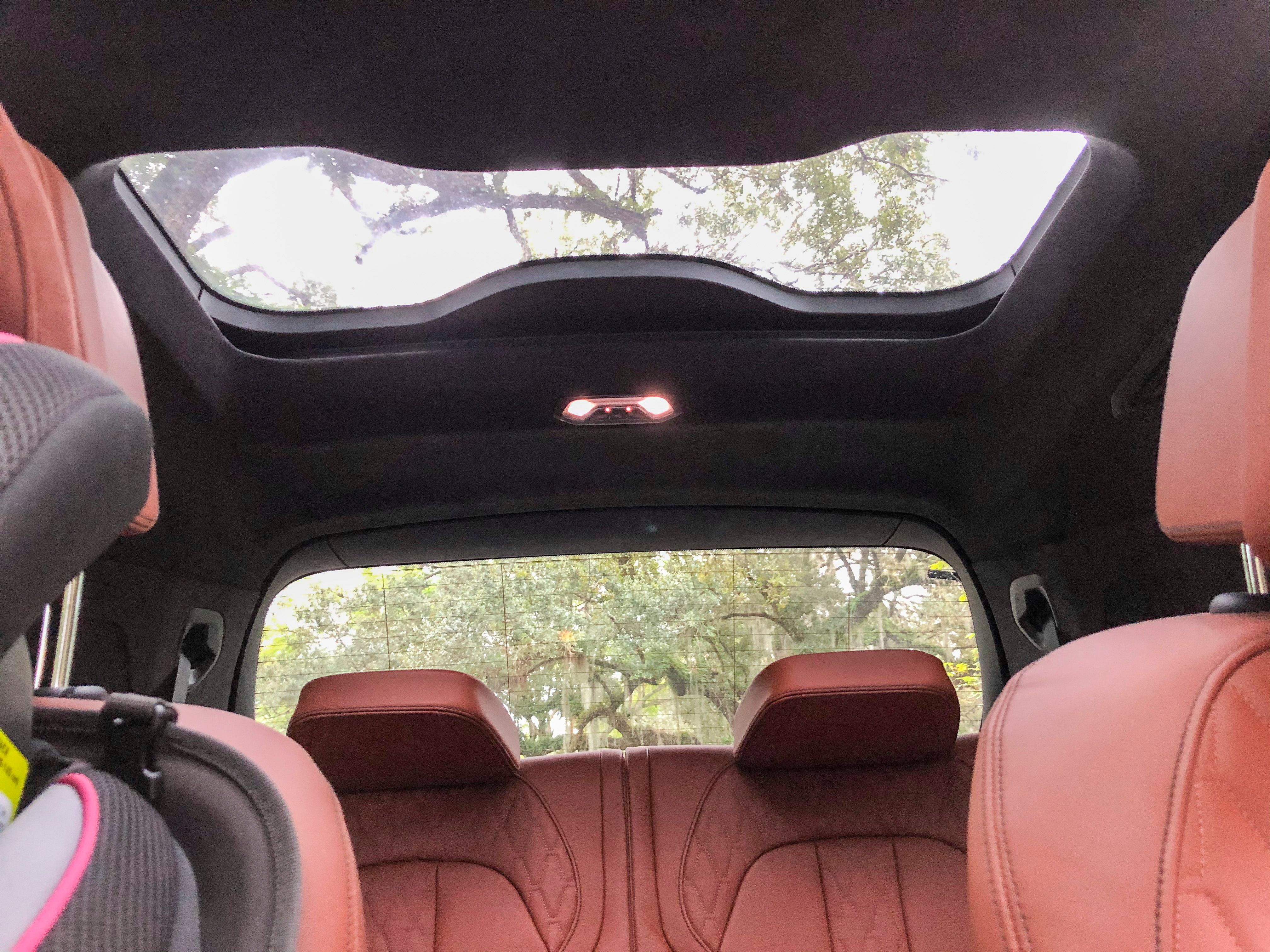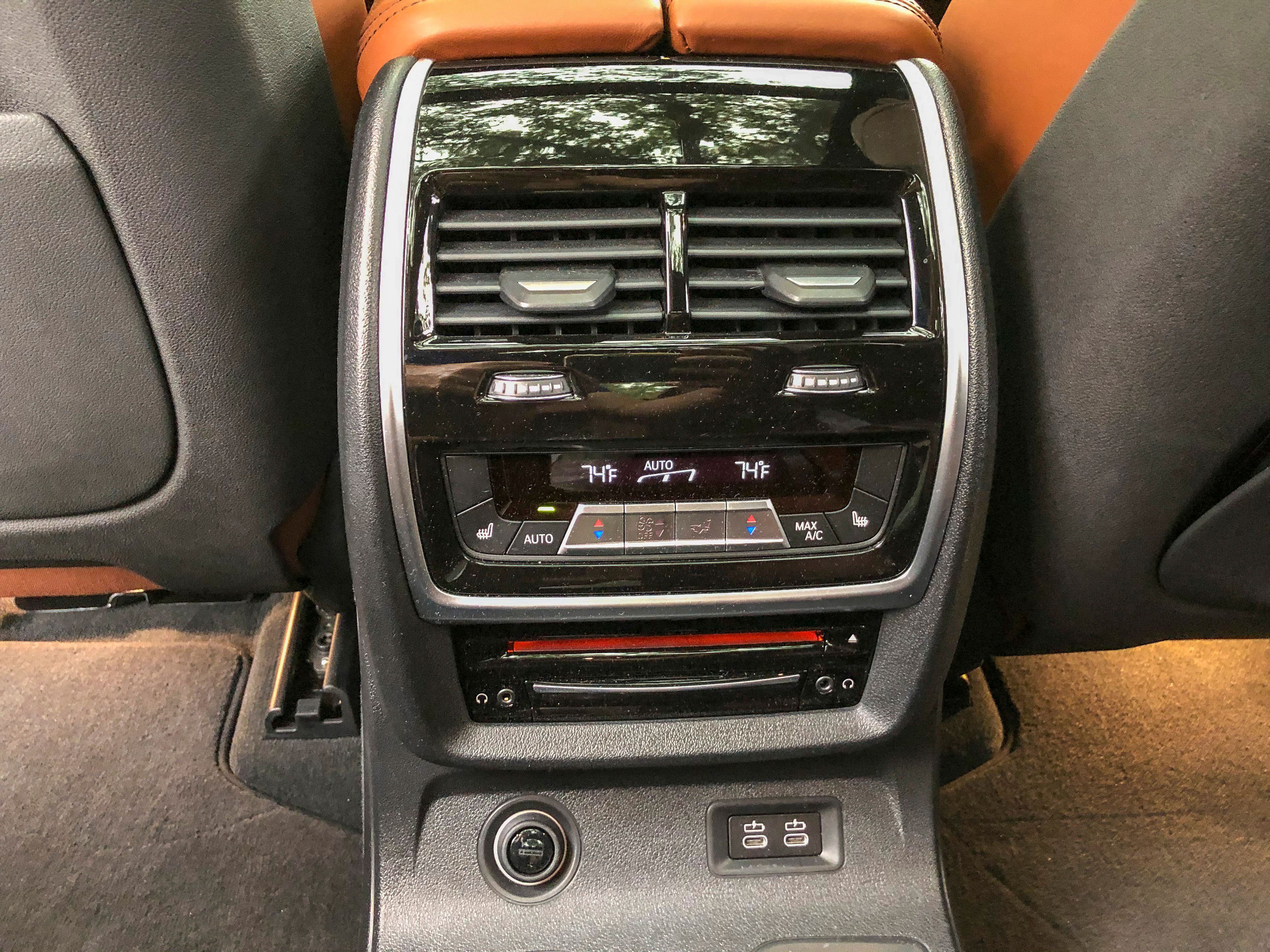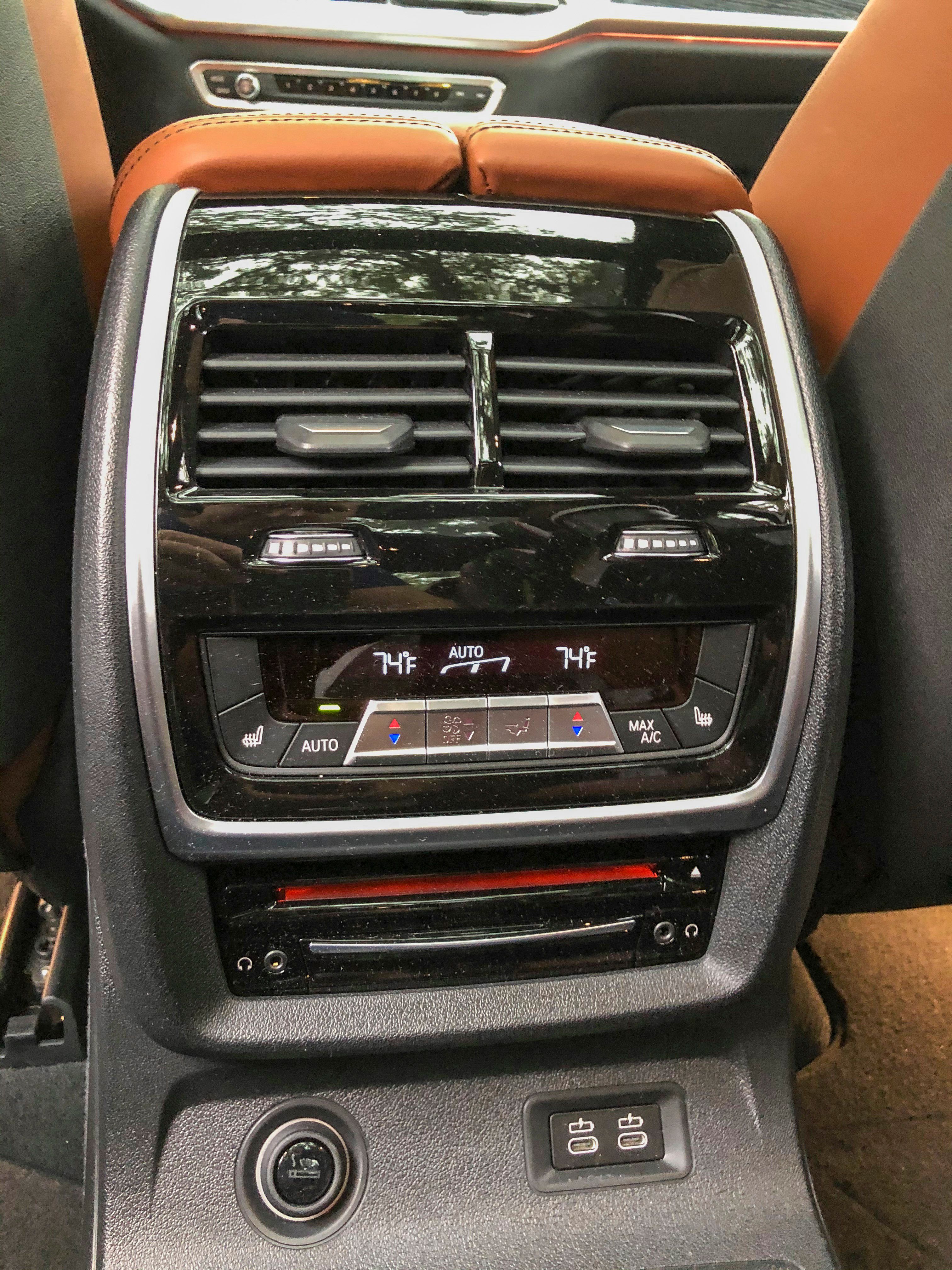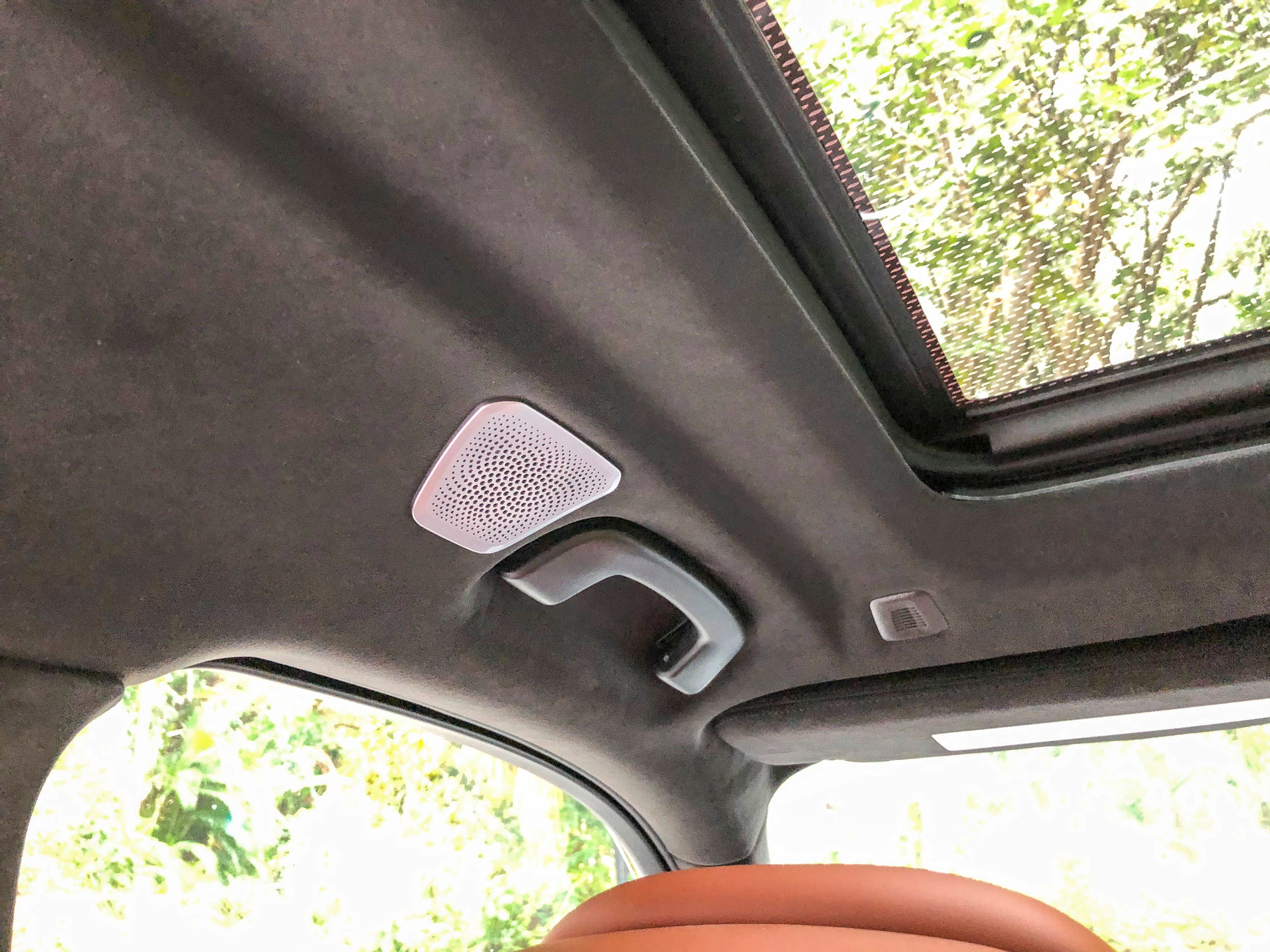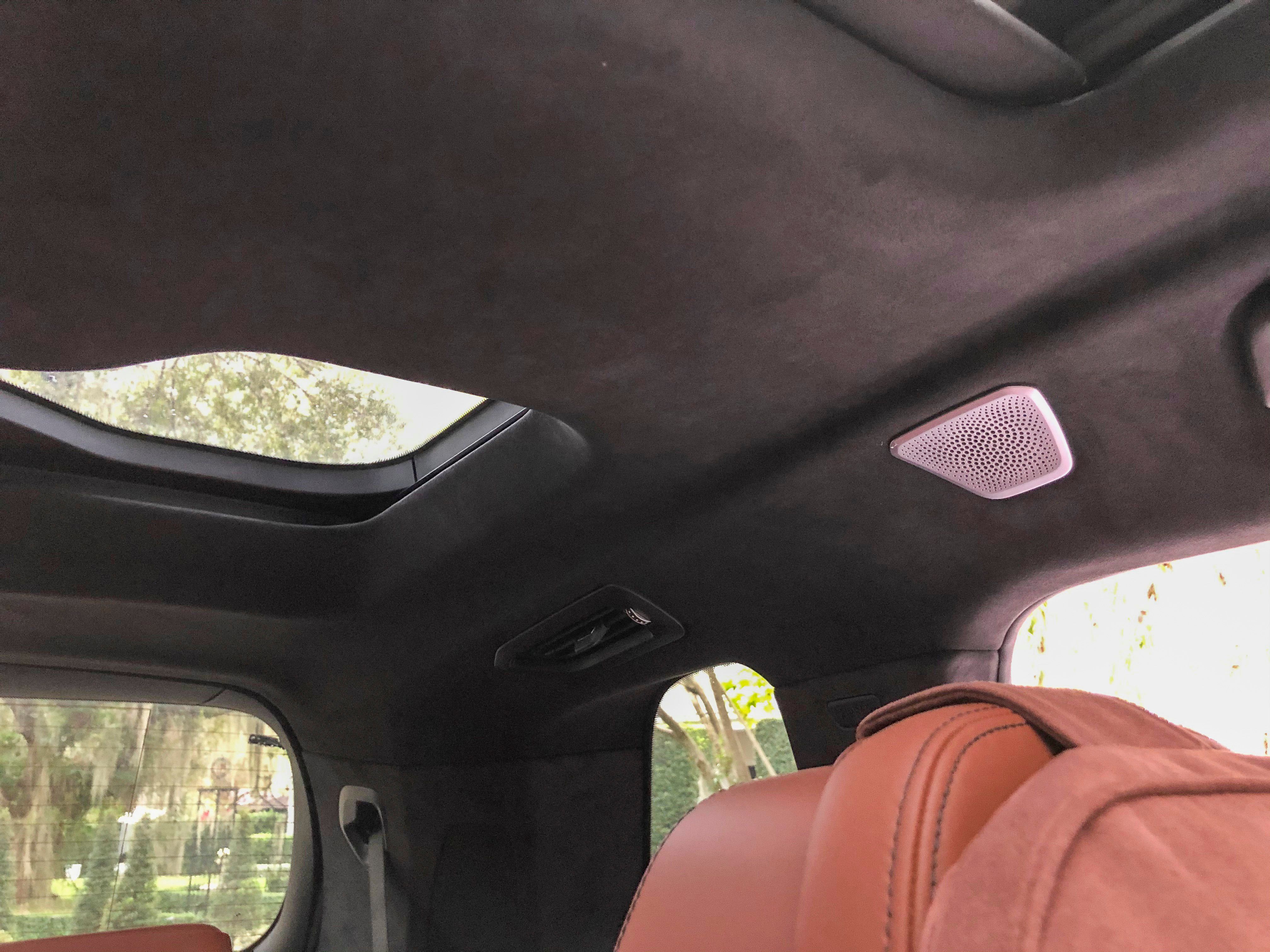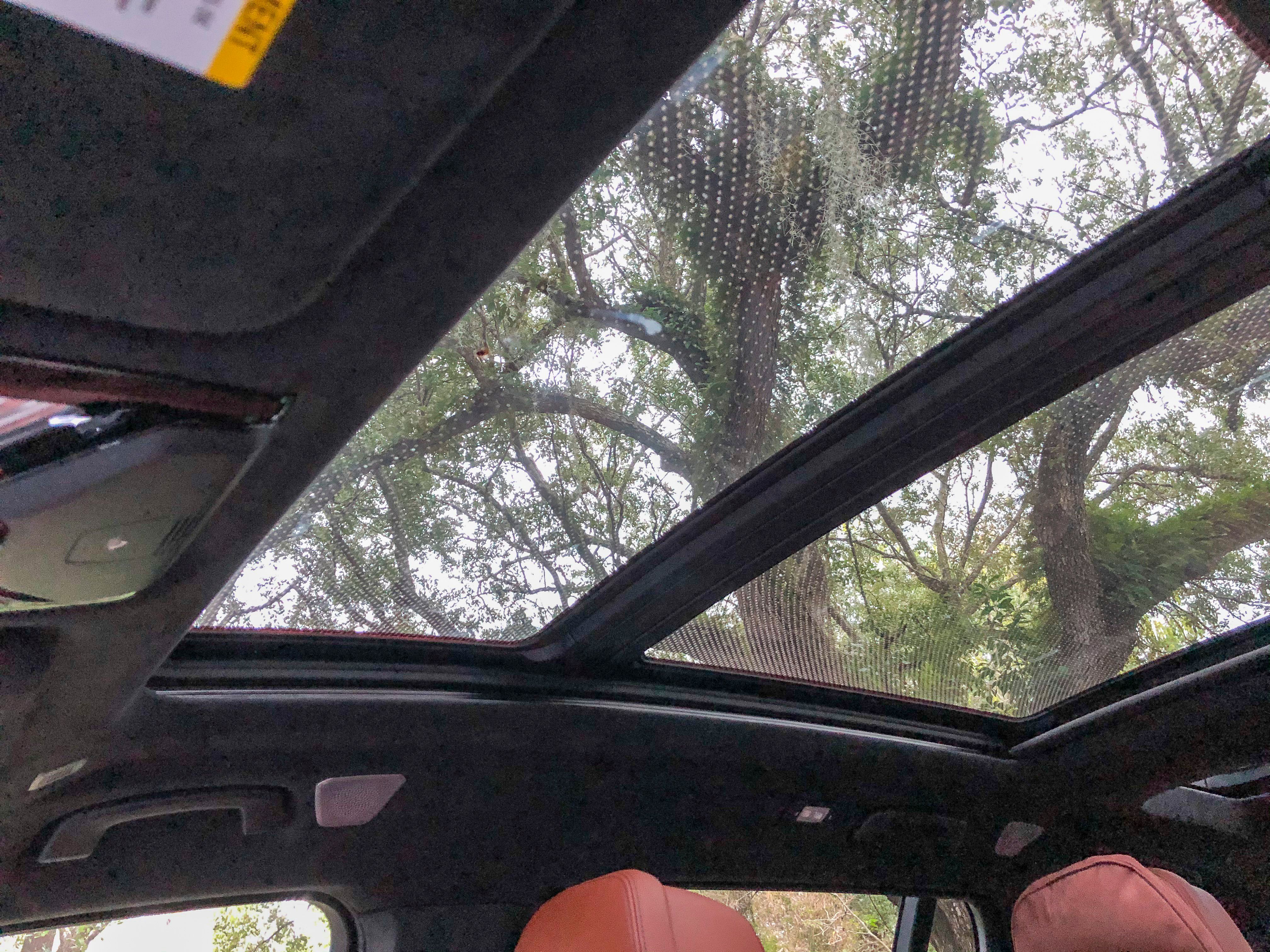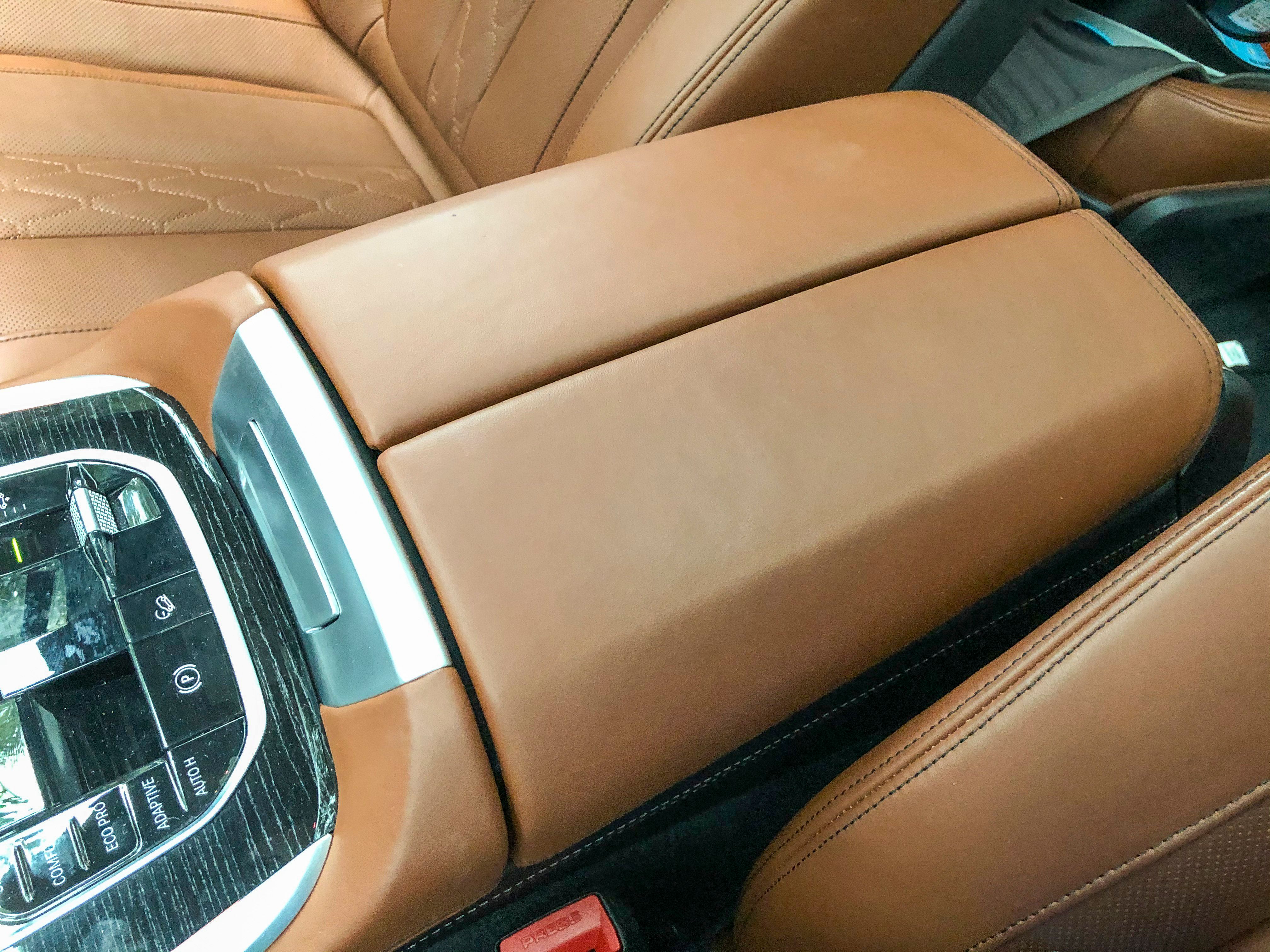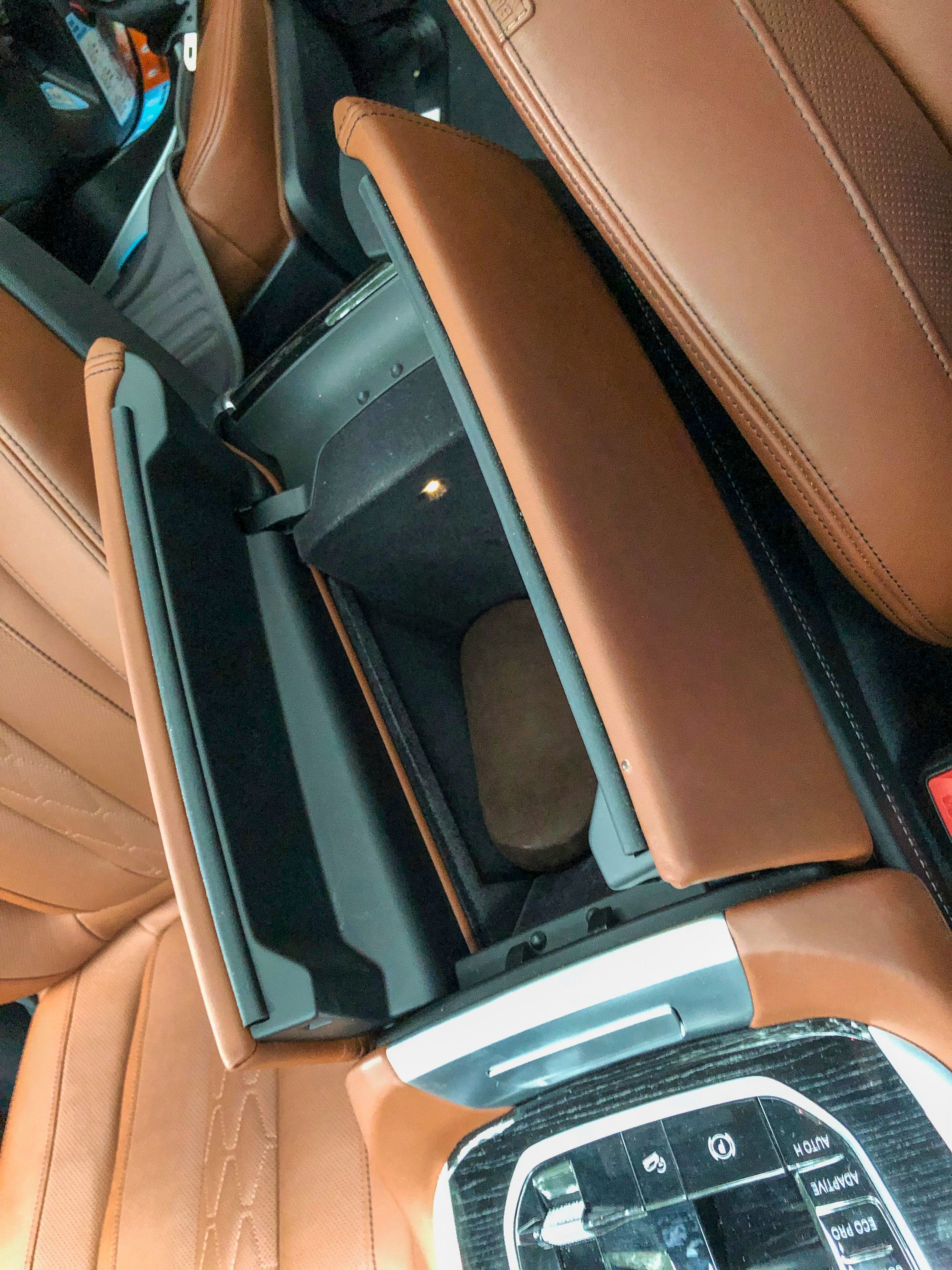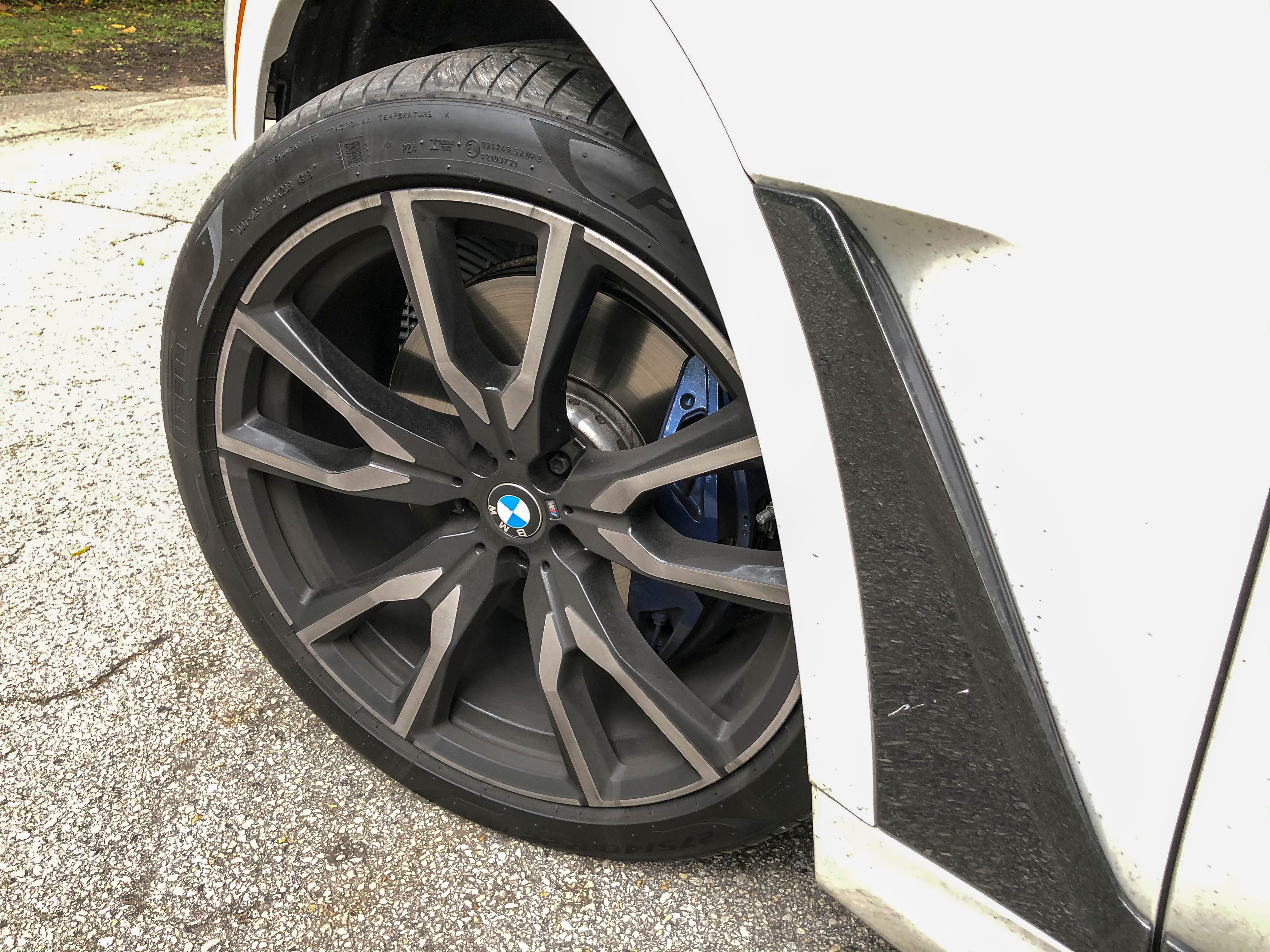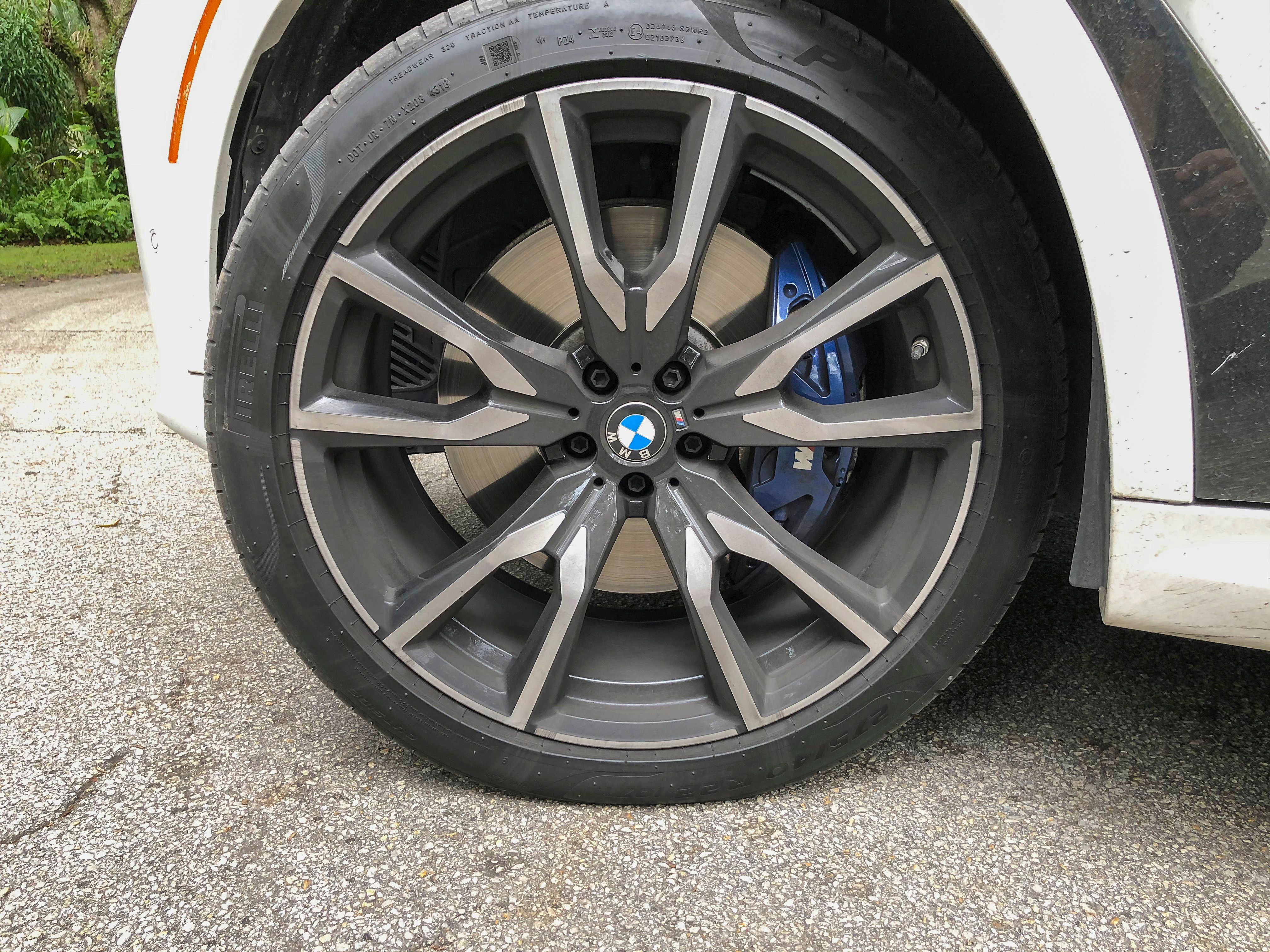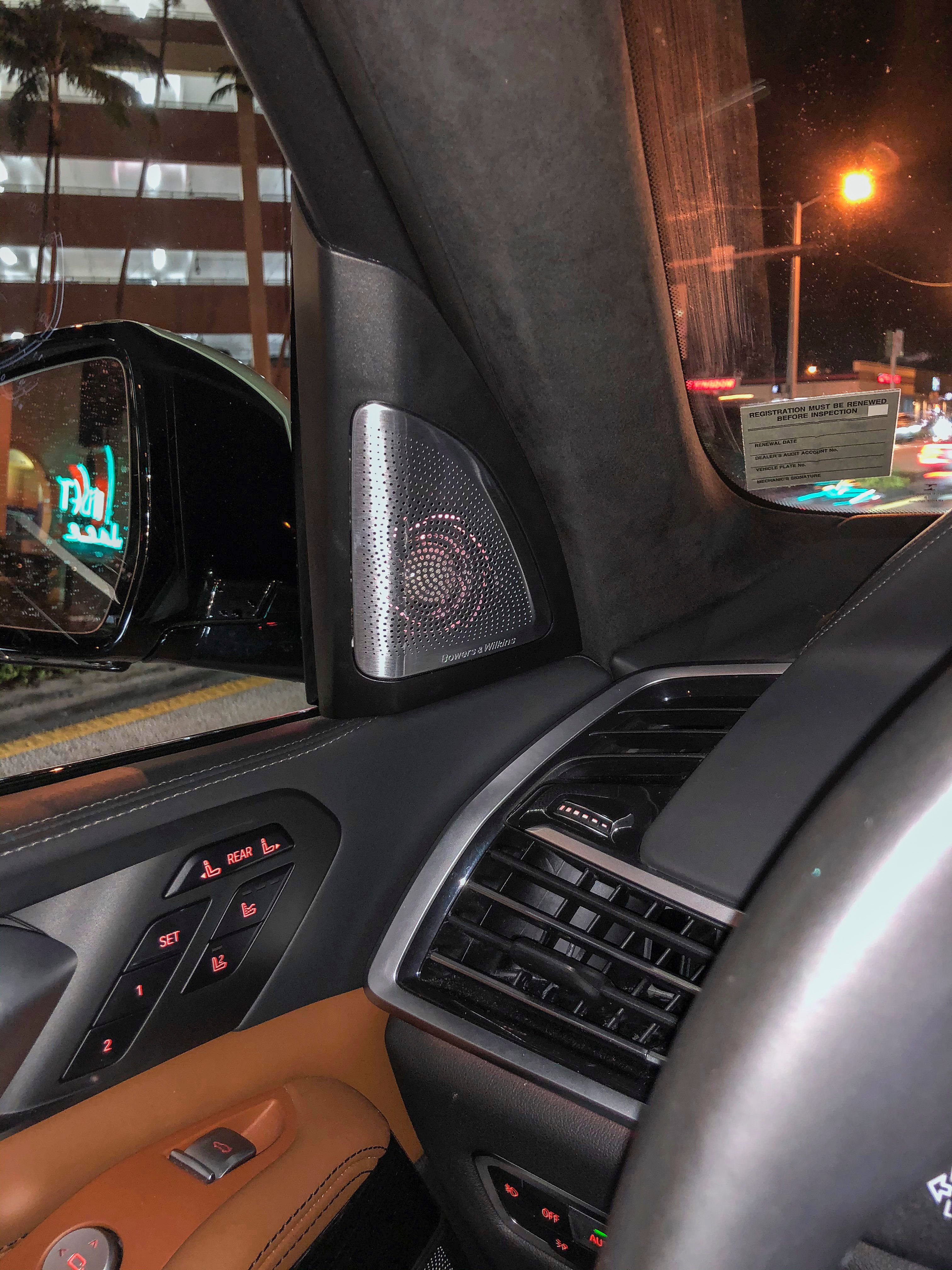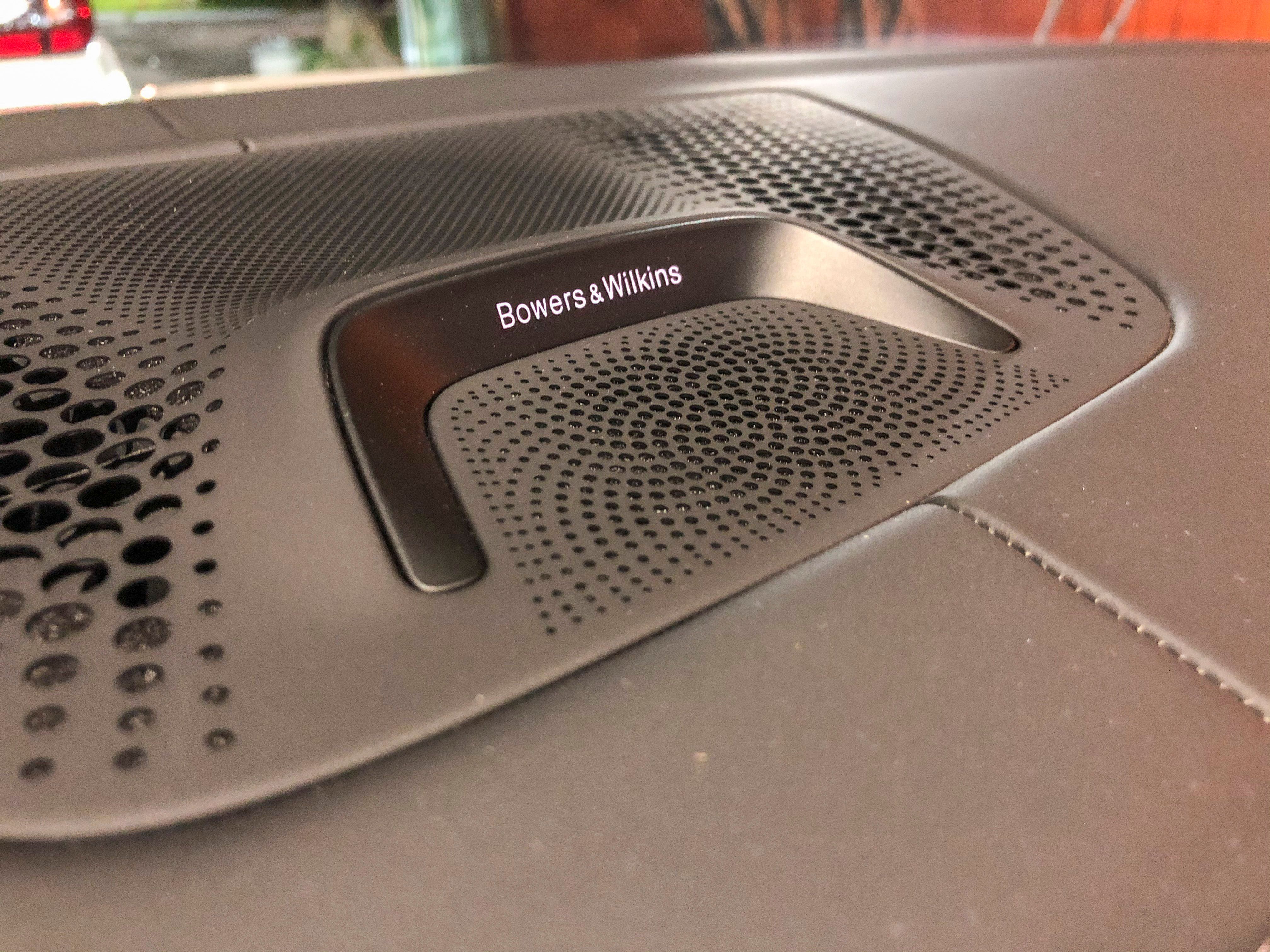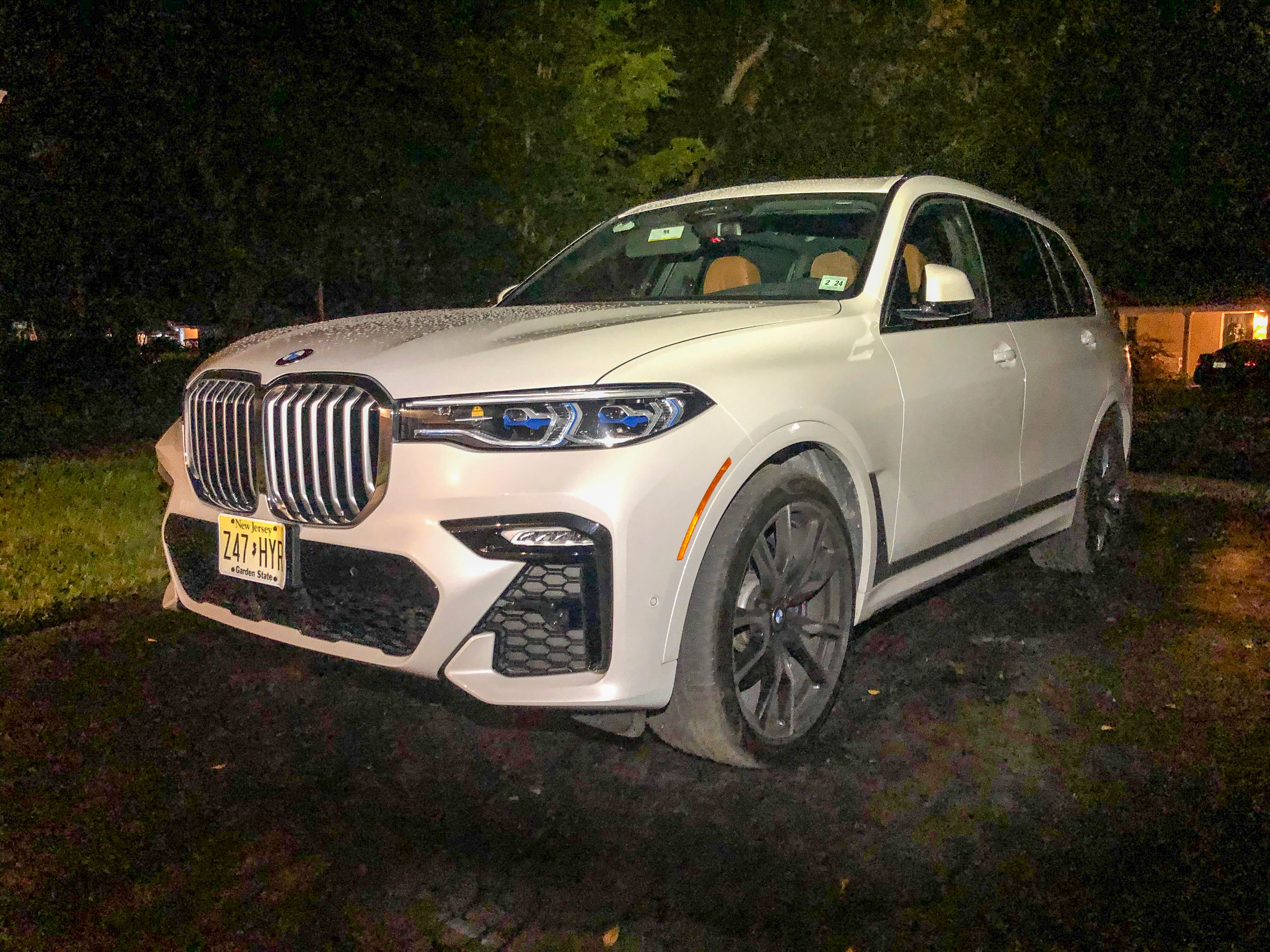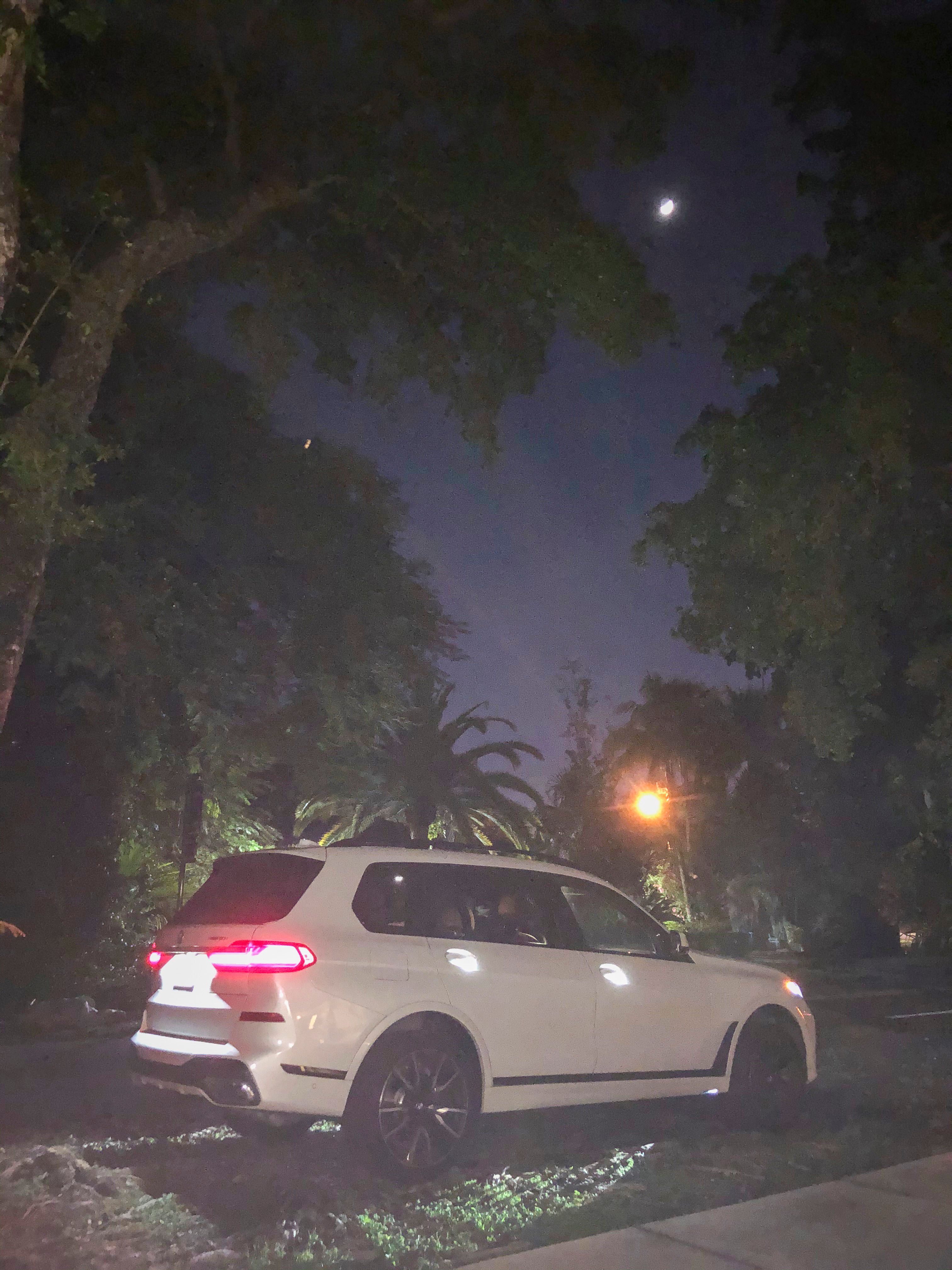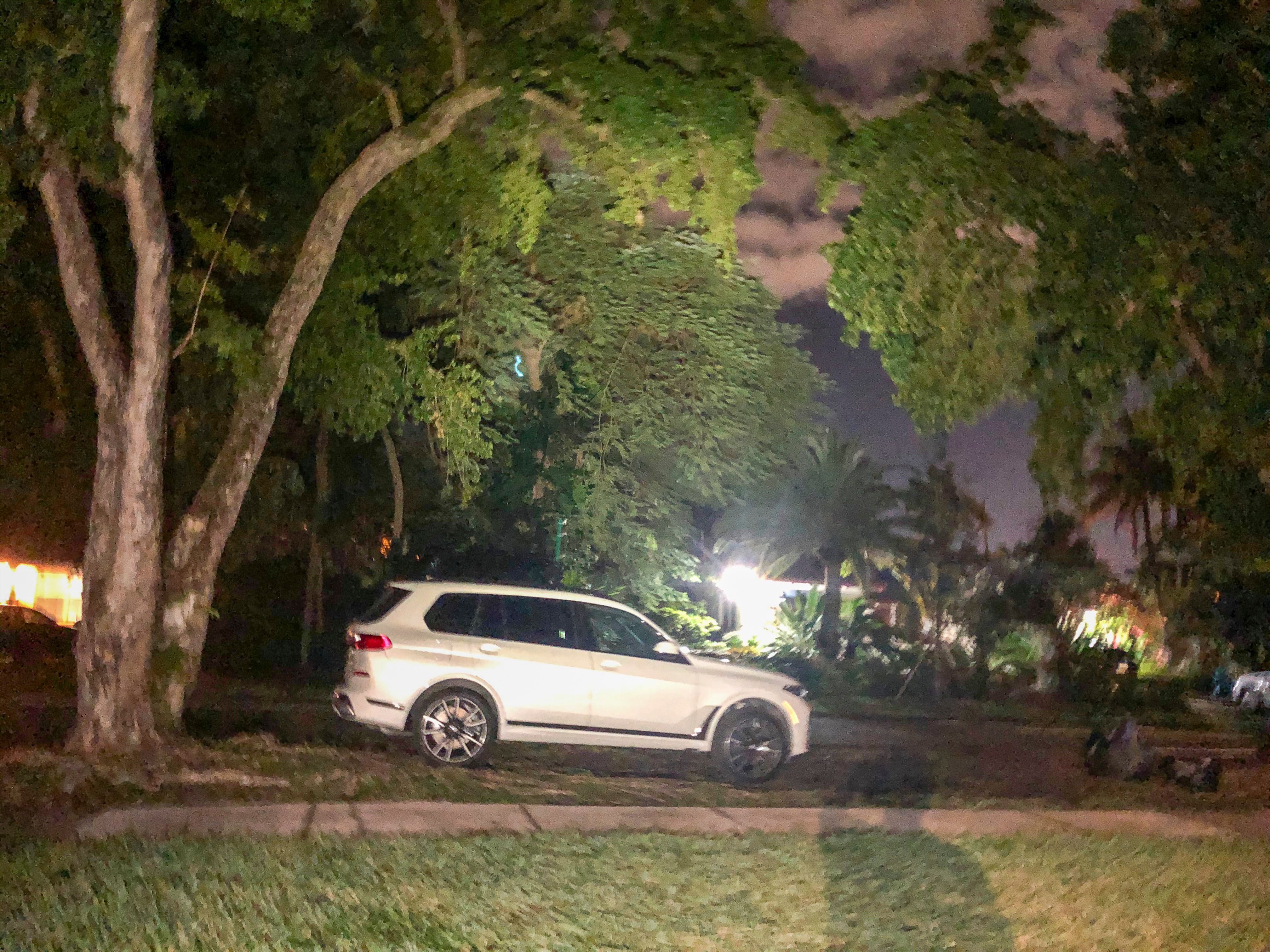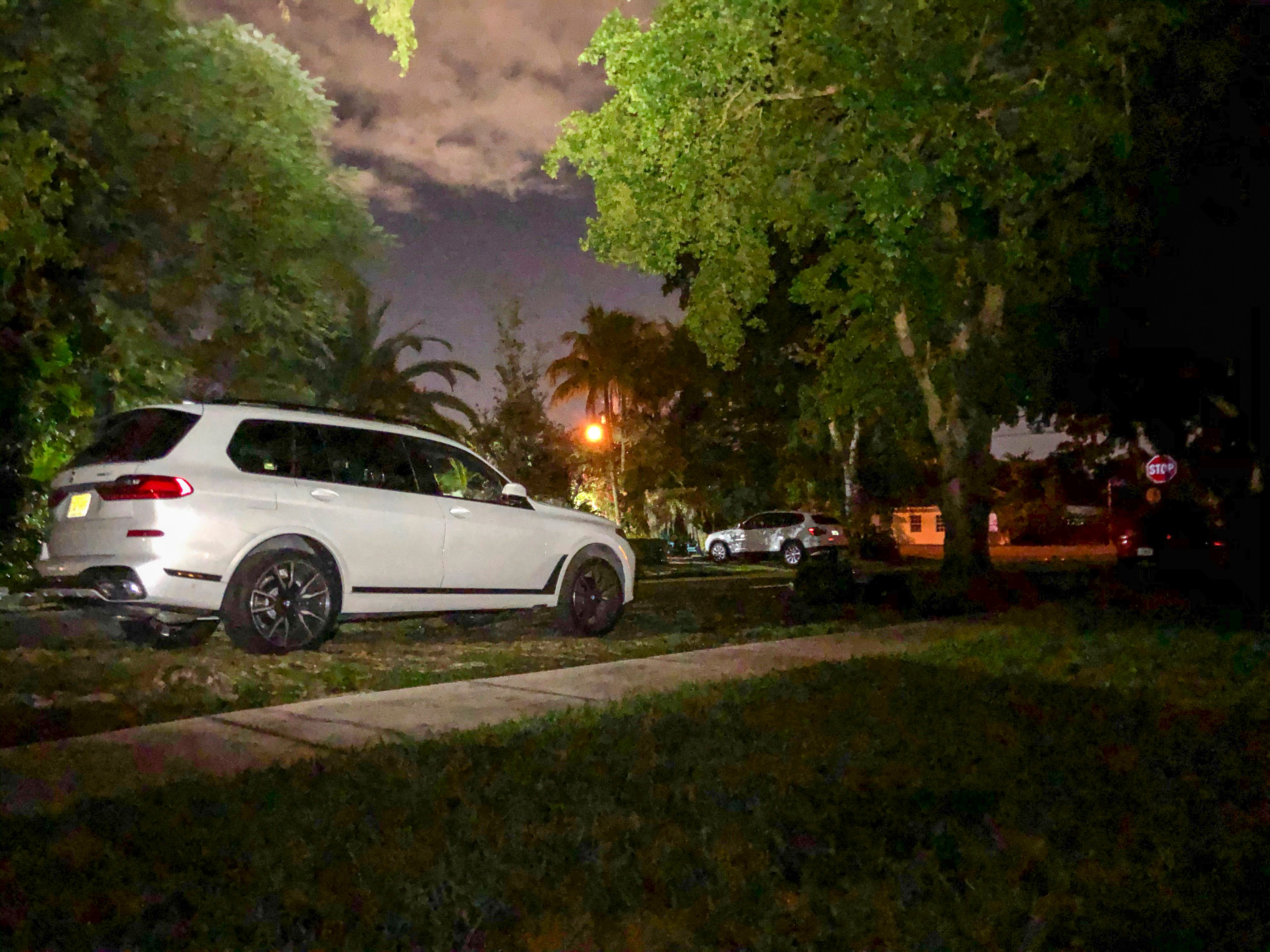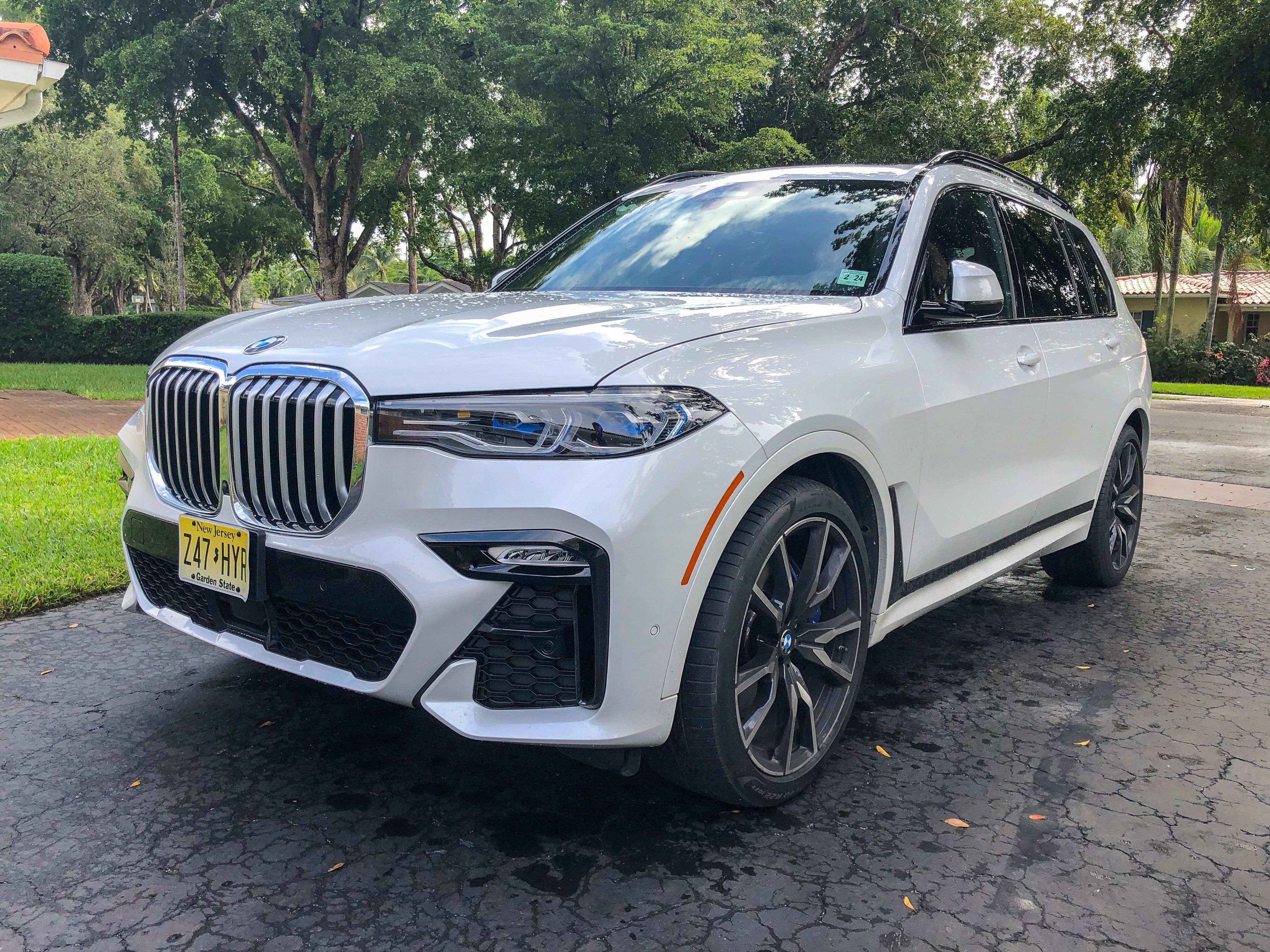The BMW X7 is one of the newest models in Bimmer’s lineup, and it serves a noble purpose as the brand’s flagship SUV (or Sports Activity Vehicle, if you listen to BMW’s “we-need-to-be-different” nonsense.) It was announced back in 2014, and shown off in concept form (the BMW X7 iPerformance Concept) in 2017, but wasn’t available at dealers until March 2019. Since then, we’ve been itching to get behind the wheel of one, and BMW was happy to oblige.
As you might expect from a flagship model, the X7 is about as luxurious as you can get without dipping your toes in the six-figure range. It comes close, with the X7 XDrive50i commanding an MSRP of $92,600, but it won’t cross that big mark unless you start checking off option boxes. Even the M50i falls just shy of six figures at $99,600. Under the hood of our xDrive50i sat a 4.4-liter V-8 (the same one that may be discontinued soon enough,) and it was good for 456 horsepower and 479 pound-feet of torque. The sprint to 60 mph was rated at 5.2, but we got there in just a hair over 5 seconds, mighty impressive for a vehicle that weighs 5,617 pounds.
Interior space of the X7 was great, but what really caught our attention was the air suspension that would raise or lower as needed. Loading something into the rear? No problem, the suspension will drop to make it easier for you. Going over rough roads? Raise it up a notch. Spirited driving? The suspension will help keep things level. It’s like there’s nothing it can’t do. Comfort was on par with what you would expect, while materials and fit and finish were top notch.
We’re busy writing out in-depth review and driving impression of the 2020 BMW X7 right now, but until we’re done, we’ve posted our awesome photo gallery in the slider above and further down the page – be sure to check it out.
2020 BMW X7 - Driven
- Make: Array
- Model: 2020 BMW X7 - Driven
- Engine/Motor: V8
- Horsepower: 456
- Torque: 479
- Transmission: Automatic
- [do not use] Vehicle Model: Array
2020 BMW X7 Exterior
In keeping with this nomenclature that just about anybody forgoes, the 2020 BMW X7 is BMW's biggest SAV to date and, at the same time, the biggest SAV on the market. BMW doesn't like it when we argue that, while the X7 may be the biggest SAV that money can buy, it surely isn't the biggest full-size SUV that you can get your hands on but we get that the Germans are dedicated to keeping their individuality in one piece, even if not many a folk cares about the distinction between an SAV and an SUV.
The X7 was four years in the making having been announced in 2014 before a prototype, the X7 iPerformance Concept, dropped at the 2017 Frankfurt Auto Show. Another year passed before the full-size SUV was finally available for sale in October of 2018. Like its smaller siblings, the X7 is underpinned by the CLAR platform and assembled at the Greer, South Carolina, plant that caters exclusively towards X model range including the X3, X4, X5, and the X6.
It's clear BMW wanted the X7 to stand out not only through its sheer size but also as a direct result of its design and, to drive the point home, the Germans decided the peak of the kidney grilles' growth should be on the biggest BMW out there. That's why the X7 comes with what can only be described as some utterly huge kidney grilles which are 16 inches tall and 32 inches wide, They are about as tall as the entire front fascia of a BMW (E30) 3 Series from the early '90s and have been the subject of a host of internet memes ever since the X7 is released. We can only say that the X7 wears its humongous kidney grilles better than the latest 7 Series that's downright ridiculous sporting some similarly large grilles of its own.
Away from the kidney grilles, BMW's most easily recognizable design feature that dates back to the 328 sports car of the '30s, the front bumper of the X7 xDrive50i we drove features huge inlets that gives away the fact that it's part of the M Sport package that can turn any xDrive50i into an M50i lookalike.
There's a big, wide trapezoidal inlet directly below the kidney grilles. Almost half of it is covered by a blacked-out bar and more space is taken away by the sizeable front end camera and affiliated sensors for the 360-degree view. The two other side inlets are taller than the one in the middle and feature black framing elements placed outboard that frame these rather straight-cut grilles that make the front fascia look particularly wide and angry.
Above this cacophony of grilles and angled surfaces stand the two headlights, each with two joined strips of daytime running LEDs that extend inward all the way to the tip of the kidney grilles. The hood lacks any additional creases maybe because BMW's designers reckoned the X7's front end was busy enough with the M Sport bumper in place. The standard bumper sports a smaller central grille that seems to extend into the boundaries of the two side inlets. A swooping polished element acts as the divider on the standard bumper while on the M Sport bumper it's narrow strips of the bumper painted in the color of the bodywork that set the central grille apart.
The 21-inch Y-spoke bi-color ferric grey rims are a $1,300 option on the xDrive50i but come free of charge if you go for the more expensive M50i trim level. These are, in our view, the best-looking rims available on the X7 and, due to their dark-tinted accents around the inner parts of the spokes, they look great with the black trim pieces (the Shadowline exterior package doesn't add anything to the sticker price).
From the back, the X7 looks rather plain as the rear fascia is dominated by straight, horizontal lines and slightly angled surfaces. The elongated taillights are similar to those on the 7 Series and there's a chromed bar that links them for an added touch of class. A grey-colored surround covers the lower rear bumper where the two rectangular exhaust tips are located. Our X7 did not come with the optional trailer hitch with a 7,500-pound towing limit. The hitch is a $550 'convenience' option. Another 'convenience' options on the outside are the aluminum running boards that are glued to the rocker panels ($400). The base support system for the roof rack is another $396.
How Big is the BMW X7?
The BMW X7 is a large SUV but not the biggest full-size luxury model available in the U.S. It still is a noticeable nine inches longer than the G06-generation X6 that was unveiled last year and also 9.5 inches longer than the G05-generation X5. Having said that, the X7 isn't the longest model in BMW's range as it's 4.1 inches shorter than the BMW 7 Series LWB (G12) - but also some three inches longer than the standard 7 Series (G11).
2020 BMW X7 exterior dimensions
|
Length |
203.3 |
|---|---|
|
Width |
78.7 |
|
Height |
71.1 |
|
Wheelbase |
122.2 |
|
Front Track |
66.3 |
|
Rear Track |
67.1 |
Placed next to its German rivals, the X7 dwarfs Audi's Q7 that measures just under 200 inches in length while Mercedes-Benz's latest GLS-Class wins the size war at 205.2 inches in length, almost two inches longer than the X7. Meanwhile, Lincoln's fourth-gen Navigator makes all of the above seem tiny as even the short-wheelbase version measures over 210 inches in length while the extended-wheelbase version measures a towering 221.9 inches in length with a 131.6-inch wheelbase (the SWB version's wheelbase measures 122.5 inches).
The X7's 122.2-inch wheelbase basically equals that of the standard Navigator. As a result, while interior space is somewhat comparable when it comes to the first two rows, the third-row is roomier inside the Lincoln. Finally, Cadillac's outgoing Escalade measures between 202.5 and 224.3 inches in length and we expect the upcoming fifth-gen model to be as big.
How Much Does the BMW X7 weigh?
You wouldn't expect an SUV the size of BMW's X7 to be light and, indeed, with all those luxury features onboard as well as all the other gizmos such as rear-wheel steering and AWD, the X7 tips the scales at 5,617 pounds. To put this figure into perspective, the GLS-Class weighs 5,700 pounds and the Q7 comes in at 4,927 pounds, slightly lighter because it's also the smallest of the lot. Both the Escalade and the Navigator are heavier even in comparison to the Merc. Caddy's full-size SUV weighs 5,856 pounds empty while the Navigator is just as heavy. We reckon the next Escalade will be heavier than the current Navigator but we'll have to wait and see.
2020 BMW X7 Interior
As you'd expect, there aren't too many cars we'd rather be in than in the X7.
If not, you'll enjoy sitting behind the wheel of an X7 just as much as sitting in the back seat. For starters, the driver's and the passenger's 20-way adjustable seats offer great lumbar support and, for an extra $500, they are ventilated. It costs another $250 to get heated front seats, armrests, and steering wheel. If you want heated back seats too you might as well spend $1,200 on the Cold Weather Package that also includes five-zone automatic climate control which is an $800 option on its own. To have massaging front seats, you got to go with the $1,200 Luxury Seating Package that also includes front ventilated seats.
Heated or not, the wheel feels good in your hands and, behind it hides the 12.3-inch digital gauge cluster. There's another touchscreen display to the right on top of the dash and both get good marks when it comes to image clarity and how vivid the colors are. The digital gauge cluster is customizable and you can also have a heads-up display. In its standard layout, the digital gauge cluster shows the speedometer to the left and the tachometer to the right.
BMW offers a large variety of upholstery options to soup up the look and feel of the X7's cabin. Our xDrive50i came with the Cognac Vernasca leather that wraps around the seats, center console, and a part of the interior door panels. The rest is covered in black leather and if you want leather on the dash too you'll have to pay $850. You can also have Alcantara headliner in the color of the upholstery for $1,000 which is a lot of money but, at least, Vernascha leather doesn't add a dime to the final cost. Having said that, if you pick Merino leather, you're looking at a price spike ranging between $1,000 and $3,700 depending on the color.
Almost all of the wood trim finishes are free but if you want Individual Piano Black finishing for the trim pieces across the dash and the door panels you'll pay an extra $1,080. Individual Fineline Black trim and Individual Fine Wood Ash Grain finishing costs just as much. At the end of the day, we've all seen these finishes before in BMW's X5 and X6 models. The X7 adds little in the way of really posh materials and this is a bit of a letdown given this is the company's flagship SUV.
As mentioned, the switchgear is familiar. Beyond the screens that display the menus of the seventh-generation iDrive system, you've got some buttons right below the two air vents in the middle of the dash. The climate control dials for the air that comes out of these vents are located in between the vents themselves. There's a volume knob and a number of buttons for the pre-defined favorite stations in the lower part of the dash above the main storage area within the central console.
Talking about storage spaces, there are the usual ones in between the seats (the armrests open to reveal more storage space) beside the door pockets. There are two cup holders in between the seats and if you want to keep your drink cool or, on the contrary, to keep it warm, you must pay an extra $1,300 that comprises the appealing Panoramic Sky Lounge LED Roof and the Glass Controls. Our X7 did come with Glass Controls, a cool-looking but useless $650 option that replaces the usual shifter knob and surrounding panels with hand-made, diamond-cut glass elements. The shifter itself sports an illuminated 'X' and even the start/stop button is made out of diamond-cut glass, as well as the iDrive controller.
BMW X7 Cargo Room
Glancing at the numbers, the X7's interior is roughly as big as the Merc GLS's and the Audi Q7's. For instance, as far as the front-row headroom goes, the X7 offers the most room at 41.9 inches, two inches more than the Audi and 2.5 inches more than the Merc. However, it's the Audi that offers the most front-row legroom, about two inches more in total than what you get inside the BMW X7.
2020 BMW X7 interior dimensions
|
1st Row Headroom |
41.9 |
|---|---|
|
1st Row Leg Room |
39.8 |
|
1st Row Shoulder Room |
60 |
|
2nd Row Headroom |
39.9 |
|
2nd Row Leg Room |
37.6 |
|
2nd Row Shoulder Room |
58.1 |
Second-row headroom is comparable too with both the Audi Q7 and the BMW X7 offering 39.9 inches, merely 0.3 inches less than the Mercedes-Benz GLS-Class. The BMW offers the least amount of legroom in the second row (just under 38 inches) and that's not too much when you consider the Merc's 41.9-inch rear legroom space. With its extra two inches of length, the GLS is also slightly bigger in the back row but we reckon two adults can easily seat in the third row of an X7, albeit without dreaming of the legroom and hip room you'd get from a bus-sized Lincoln or Cadillac.
Something had to give and, since the X7 isn't as big as its American rivals, BMW had to choose between cargo space and passenger space and, at the end of the day, it was passenger space that won. As a result, there are barely 11.5 cubic feet of space in the trunk with the third row up. Fold it and cargo space increases to 48.6 cubic feet. For the maximum advertised cargo space of 90.4 cubic feet, you'll have to also fold the second-row seats. After you've done all that, your X7 will have more room to carry stuff than a Mercedes GLS (max cargo space of 84.7 cubic feet) or the Q7 that offers just under 70 cubic feet of room with all but the front seats down. The X7 features the same two-piece split-folding tailgate that makes loading bigger objects in the back an easier task.
BMW X7 Infotainment System
Standard equipment inside the X7, besides the Merino leather upholstery, includes the pair of 12.3-inch digital displays and a four-zone climate control. Those two displays run BMW's iDrive 7.0 infotainment system that's one of the best out there and has been towards the top or at the top of the pile for a while now. That's not only because of the system's lighting quick reactions and not-so-convoluted menus but also because of the iDrive controller that's better than the voice-controlled nonsense you'd find in other luxury SUVs.
Yes, BMW tells us you can control the infotainment system via hand signs but we're better off just using the knob on the console. Apple CarPlay compatibility is standard but you also get BMW's own navigation system and a built-in WiFi hotspot (although you must pay a $15 monthly fee for BMW ConnectedDrive), as well as wireless charging for your mobile device.
The standard 10-speaker Harman Kardon audio system is powerful and offers a crisp sound but, now that we've got a taste of BMW's optional $3,400 Bowers & Wilkins Diamond Surround sound system, we think the latter is better. After all, it should be, with 20 speakers including some quirky dome tweeters, 10 fully active amplification channels and 1,500 watts of audio power.
If you've got kids in the back, you might want to consider, instead of the steeply-priced Bowers & Wilkins audio system, the $2,200 'Rear-Seat Entertainment Professional' option that adds a display in the back of each front seat as well as a separate iDrive controller so that the kids can choose what movie they want to watch. With the controller, they can also change the volume of the music or play around with the navigation system which could get annoying but that's another issue altogether.
BMW X7 Safety Features
The BMW X7 is loaded with latest-generation safety features. While it's true that it hasn't yet been tested by either the National Highway Traffic Safety Administration (NHTSA) or the Insurance Institute for Highway Safety (IIHS), the X7 packs an impressive list of standard features with a good few on the options list as well. You've got from the word go forward-collision warning and automated emergency braking, blind-spot monitor and rear cross-traffic alert, and lane departure warning.
If you fork out $1,700 and secure the Driving Assistance Professional Package, a few other safety systems are added to the list such as Active Lane Keeping Assistant with Side Collision Avoidance and Automatic Lane Change. The Active Driving Assistant Pro suite also includes Emergency Stop Assistant to bring the vehicle to a stop in case of a health emergency, and Evasion Aid to assist in critical approach situations by reacting to vehicles and pedestrians in front of you. Even more expensive than the Driving Assistance Professional Package is the $2,300 Night Vision with Pedestrian Detection system that employs a thermal imaging camera to spot pedestrians at night in low-lit areas. The system's range is 330 feet and it only works if temperatures are below 95F.
Given how big it is, you'd imagine the X7 makes for a great people carrier and that's true regardless of the occupants' age. With the standard bench seat in the middle, the X7 can accommodate no less than five child seats. That's because BMW equipped it with four ISOFix and five top tether anchorages in total. Two of those ISOFix anchorages are located towards the outer sides of the second-row bench seat. There are two more ISOFix anchorages in the back row but you can't really fit a rear-facing child seat there because of how tight it is. You can, however, on the second-row seat and, with child seats in place in both the second and the third row of seats, a six-feet-tall driver can still get behind the wheel and drive comfortably.
2020 BMW X7 Drivetrain
BMW's high-riding land yacht doesn't just share some design cues and luxurious options on the inside with the 7 Series with the two models both underpinned by the Bavarian automaker's CLAR (Cluster Architecture) platform. Debuting on the G11-generation BMW 7 Series, the CLAR platform was conceived to be either RWD or AWD while also welcoming hybrid and all-electric drivetrains with room to accommodate a 48-volt electrical system.
While the platform itself is quite light, BMW using a combo of steel, carbon fiber, and aluminum in its construction, all the clever systems on the X7 are what make this 16-foot SUV heavy. Couple all that heft with a drag coefficient of 0.34 and it soon becomes apparent that BMW had to find a rather big engine to make sure the X7 won't lag behind its rivals. Luckily, they found one in the N63 4.4-liter, twin-turbocharged V-8. There've been rumors circulating for a while that BMW could prepare to retire this engine but, until it does, the N63 V-8 is under the hood of both the xDrive50i and the M50i versions although the latter sports the more powerful N63B44T3 iteration with all of its 523 horsepower and 553 pound-feet of torque.
That's not to say that the xDrive50i is a snail by comparison. Yes, it does get to 60 mph from a standstill in 5.4 seconds versus just 4.5 seconds in the case of the M50i but the entry-level xDrive40i needs 6.1 seconds to complete the task and the smallest diesel engine is delivering even more lackluster performance evidenced by the 7-second 0-60 mph time made public by BMW.
So, how powerful is the xDrive50i? Well, the N63B44M3 mill puts out 456 horsepower between 5,250 and 6,000 rpm and 479 pound-feet of torque between 1,500 and 4,750 rpm. To put it into perspective, the 4.0-liter V-8 powering the GLS 580 cranks out 483 horsepower and 516 pound-feet of torques while Audi's 3.0-liter V-6 that goes under the hood of the Q7 Prestige 55 TSFI is good for 329 horsepower and 325 pound-feet of torque. In other words, the Merc is slightly more powerful but also slightly heavier while the lighter Q7 is somewhat underpowered.
2020 BMW X7 specifications
|
Engine |
4.4-Liter V-8 |
|---|---|
|
Fuel |
Gasoline |
|
Horsepower |
456 HP @ 5,250 – 6,000 RPM |
|
Torque |
479 LB-FT @ 1,500 – 4,750 RPM |
|
Transmission |
8-Speed Auto |
|
Drive |
AWD |
|
Towing Capacity |
7,716 LBS |
|
Fuel Economy |
15/21/17 |
|
Curb Weight |
5,617 LBS |
|
Fuel Capacity |
21.9 Gal |
|
0-60 MPH |
5.2 Seconds |
|
Top Speed |
155 MPH |
The X7 already comes with self-leveling air suspension with a double-wishbone setup in the front and a five-link axle in the rear but the Active Comfort Drive system improves the X7's handling by making use of the cameras in the nose that scan the road and then 'tell' the system to adequately adjust the rigidity of the ride in real-time via the Dynamic Damper Control system. Some of these features, such as the M Sport brakes and the active rear-wheel steering, are available as standalone options (the brakes cost $650 while rear-wheel steering amounts to a $1,150 addition over the MSRP).
With those big wheels, aggressive bumpers and rather low rocker panels, you'd think the X7 isn't a well-versed off-roader but BMW does sell an optional Off-Road Package that only includes the M Sport diff that features a mechanical lock. It costs almost $3,000 and, besides some protective covers bolted to the underbelly, you also get an update for the xDrive system with four additional xOffRoad modes including xSand, xRocks, xGravel, and xSnow. Yes, there are entirely too many x's here, we we wholeheartedly agree. Beyond the annoying nomenclature, you may be wondering if these driving modes actually make a difference and, truth be told, with an angle of approach of 25 degrees and a departure angle of 22 degrees, it's not far off a Range Rover's figures (25.5 degrees angle of approach and a departure angle of 24.5 degrees). Having said that, the ramp break-over angle is just 19.8 degrees in the case of the X7 versus 21.5 degrees for the Range Rover - a more off-road-savvy luxury SUV.
Is the BMW X7 Fast?
The official performance figures confirm that the Q7 is the slowest out of the three. It needs at least 5.7 seconds to reach 60 mph from a standing start and it won't go faster than 130 mph, while both the Merc and the BMW will sit quite happily at 155 mph. The more powerful GLS is, not surprisingly, faster to 60 mph than the X7 needing 5.2 seconds to get going from naught and reach 60 mph according to Mercedes-Benz. As mentioned, the X7 officially takes 5.4 seconds to reach 60 mph but, from our time with it, that number is quite relative and depends a lot on how much you've stuffed the car with cargo and, also, the state of the roads. On a good day, these two full-size luxury SUVs would be separated by a hood's length if that in a 0-60 mph drag race (if there ever was such a thing).
Beyond the numbers, the X7 doesn't feel slow and that's because it's not. Put it this way, a Hennessey-tuned Lincoln Navigator with 600 horsepower on tap goes from 0 to 60 mph in 4.8 seconds, just 0.7 seconds quicker than the X7 who can only brag with an output of 456 horsepower. Also, looking down at the 7 Series, an xDrive50i is as fast to 60 mph as a 335 horsepower 740i.
How much can the BMW X7 tow?
The first order of business if you want to increase the towing ability of your X7 is to get the optional trailer hitch that costs $550. The towing limit with this factory-installed hitch in place is7,500. Without it, BMW states that the maximum trailer load (braked) is 2,700 kilograms or about 6,000 pounds. The maximum unbraked weight that an X7 can tow without the hitch is 750 kilograms or 1,653 pounds. Both the Audi Q7 and the Mercedes GLS can to as much as 7,700 pounds (braked) with the right options in place.
BMW X7 driving impressions
The most unfair thing you can do when test driving an SUV, especially one this large, is to criticize it for not being as supple as a sedan. BMW has made it their mission since the first X5 hit showrooms to ensure that each SUV (cough, we mean SAV and SAC) it sells is both firm enough to feel reassuringly stable through the twisty bits and also forgiving enough over bumps in keeping with the image of a full-size SUV that will cost over $100,000 once you add options.
In the comfiest of driving modes, the X7 feels as if it's floating but its demeanor changes noticeably in 'Auto' or 'Sport' mode where it becomes more poised with little roll through the corners. The steering is precise if uncommunicative and the eight-speed transmission shifts with silk-like smoothness even in the sportiest of settings. Power comes on gradually as the X7 decidedly vaunts forward through the gears. You'll never get a kick in the back when flooring the X7 and that's a good thing.
BMW X7 Pricing
As you've probably noticed by now, we've tried to underline throughout this review that, while the BMW X7's list of optional extras is quite extensive, most everything is expensive and there's your fair share of somewhat useless stuff. Add nothing beyond what's available from standard and you're looking at an MSRP of $92,600 for an xDrive50i sans extra transport charges/taxes. A Mercedes-Benz GLS 580 starts from $98,800 and the Q7 Prestige 55 TFSI is just $67,850, cheaper even than the X7 xDrive40i that is $73,900 with no options on it.
In short, the X7 is expensive. A bare-bone, entry-level Mercedes-Benz GLS is also cheaper than the cheapest X7 ($70,150 for a GLS 450) which means the biggest Bimmer is one of the most expensive SUVs in its class but not the most expensive - a 2020 Escalade starts from $75,195 while a 2020 Navigator comes with a sticker price of $75,825.
How Does the BMW X7 Stack Up Against the Competition?
2020 Mercedes-Benz GLS 580 4Matic
When looking for adequate rivals to pit against the X7 we decided quickly that the GLS 450 and the GLS 550 simply won't cut it so we jumped all the way up to the GLS 580 4Matic that is, before adding any optional extras, a whopping $22,800 more expensive than the basic GLS 450. The main differentiator, of course, is the powerplant. The GLS 580 is powered by a 4.0-liter V-8 that's aided by the electrified EQ Boost which contributes with 21 horsepower and 184 pound-feet of torque to the total figures: 483 horsepower and 516 pound-feet of torque.
The GLS 580 is also bigger than the GLS 450 but only by 0.2 inches which doesn't amount to anything, in fairness. As the X187-generation GLS has barely begun to hit showrooms, we've not seen too many of them out and about but it's clear that the Merc will pack just as much tech and upmarket features as the Bimmer, if not more.
For instance, the GLS comes with multibeam LED headlights and, inside, there are two 12.3-inch digital screens. If you'll be a passenger in your GLS, you can go for the Rear Seat Comfort Package Plus with its Android tablet fitted to the second-row center armrest that allows you to access the MBUX infotainment system and play with stuff such as the climate control settings. Staying on the inside, Mercedes-Benz also offers a system that cancels out exterior noises.
Just like the X7, the GLS rides on a clever air suspension (Mercedes calls it 'Airmatic') and, to make the GLS more agile, the Germans offer E-Active Body Control, a package that's akin to BMW's camera-and-sensor-based Active Comfort Drive with Road Preview suite.
BMW X7 vs Mercedes GLS drivetrain specifications
|
BMW X7 xDrive 50i |
Mercedes GLS 580 |
Engine |
4.4-Liter V-8 |
4.0-Liter V-8 |
|
|---|---|---|---|---|---|
|
Fuel |
Gasoline |
Gasoline |
|||
|
Horsepower |
456 HP @ 5,250 – 6,000 RPM |
483 HP |
|||
|
Torque |
479 LB-FT @ 1,500 – 4,750 RPM |
516 LB-FT |
|||
|
Transmission |
8-Speed Auto |
9-Speed Auto |
|||
|
Drive |
AWD |
AWD |
|||
|
Towing Capacity |
7,716 LBS |
7,700 LBS |
|||
|
Fuel Economy |
15/21/17 |
16/21/18 |
|||
|
Curb Weight |
5,617 LBS |
5,699 LBS |
|||
|
Fuel Capacity |
21.9 Gal |
23.8 Gal |
|||
|
0-60 MPH |
5.2 Seconds |
5.2 Seconds |
|||
|
Top Speed |
155 MPH |
155 MPH |
Read our full review on the 2020 Mercedes-Benz GLS 580 4Matic
2020 Audi Q7 Prestige 55 TFSI
Unlike the BMW X7 and the Mercedes-Benz GLS that are recently-introduced models, the second-generation Q7 is getting a bit long in the tooth having been launched back in 2015. Audi applied a facelift to it for the 2019 MY to refresh its second-biggest SUV this brought about bigger inlets for a more aggressive front fascia. LED lights are standard with Matrix LEDs, HD Matrix LEDs, and Audi's Laser Light all on the options list.
Air suspension is standard and an active stabilization system with dampers activated via a 48-volt electric system is available. This system adapts to your driving patterns and the road surface you're driving on. The engine in the Prestige 55 TFSI is the meatiest you can get on the 'mundane' Q7s. If you want even more oomph and a stiffer rider, the SQ7s is the answer for you.
Inside, the Q7 comes with a trifecta of screens on the dash following 2019's facelift. One sits where the analog gauges were once placed, another is in the middle of the dash while the third down is directly below it (with touch screen controls for everything including climate control). The dash of the Q7 looks modern and classy thanks to the tasty combo of leather, wooden or metal trim pieces and glassed surfaces, with the top bit taken up by angular air vents. Build quality is flawless with very few tacky materials inside the cabin.
The Audi is arguably even smoother over the bumps in Comfort mode than the BMW while the sporty Dynamic mode really makes you feel like you're driving a much smaller SUV than the Q7's actual size. We can only think that if the updated current-gen Q7 is this good, the next one should be even better but we'll have to wait a few years before it arrives.
BMW X7 vs Audi Q7 drivetrain specifications
|
BMW X7 xDrive 50i |
Audi Q7 Premiere 55 TFSI |
Engine |
4.4-Liter V-8 |
3.0-Liter V-6 |
|
|---|---|---|---|---|---|
|
Fuel |
Gasoline |
Gasoline |
|||
|
Horsepower |
456 HP @ 5,250 – 6,000 RPM |
329 HP |
|||
|
Torque |
479 LB-FT @ 1,500 – 4,750 RPM |
325 LB-FT |
|||
|
Transmission |
8-Speed Auto |
8-Speed Auto |
|||
|
Drive |
AWD |
AWD |
|||
|
Towing Capacity |
7,716 LBS |
7,700 LBS |
|||
|
Fuel Economy |
15/21/17 |
19/25/21 |
|||
|
Curb Weight |
5,617 LBS |
4,927 LBS |
|||
|
Fuel Capacity |
21.9 Gal |
22.5 Gal |
|||
|
0-60 MPH |
5.2 Seconds |
5.7 Seconds |
|||
|
Top Speed |
155 MPH |
130 MPH |
Read our full review on the 2020 Audi Q7 Prestige 55 TFSI
Final thoughts
BMW has done a good job with its first foray into the full-size luxury SUV market. Yes, the cabin does yell 'X5' from maybe too many angles but, at the end of the day, that's nothing to be ashamed of as the X5's interior is gorgeous and the same can be said about the X7's. Add into the mix the class-leading iDrive system and the way the X7 is able to belie its size on twisty roads and you've got yourself a very good SUV. And we haven't even mentioned a thing about how spacious the first two rows are and the plethora of standard features. Sure, if you dip your toes in the options list the price will soar past $100,000 but that also applies to the Merc so, the question is, then, how much better is the X7 compared to the smaller, less powerful and, ultimately, cheaper Q7? We think it's all down to what you want from a full-size luxury SUV.

